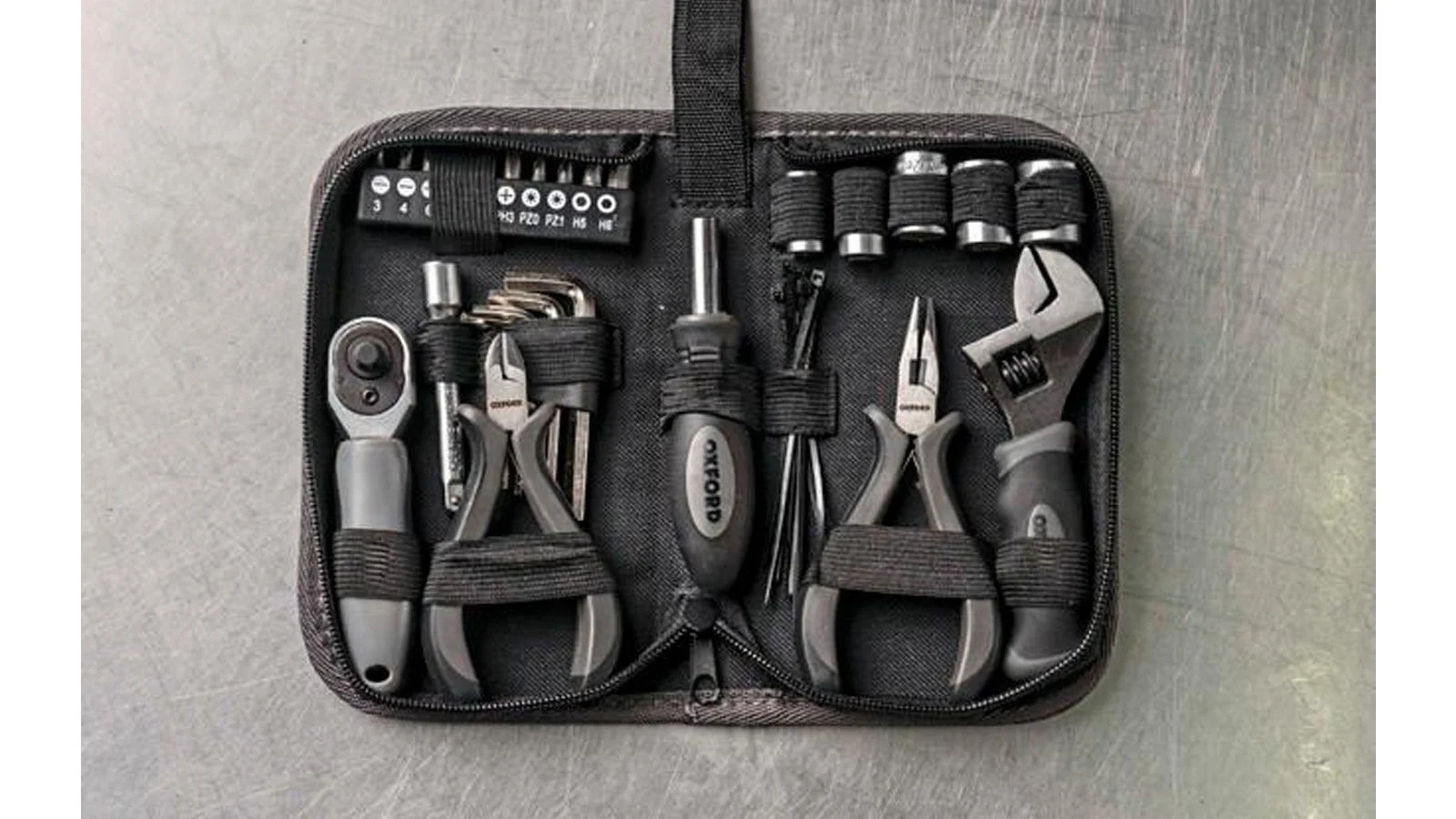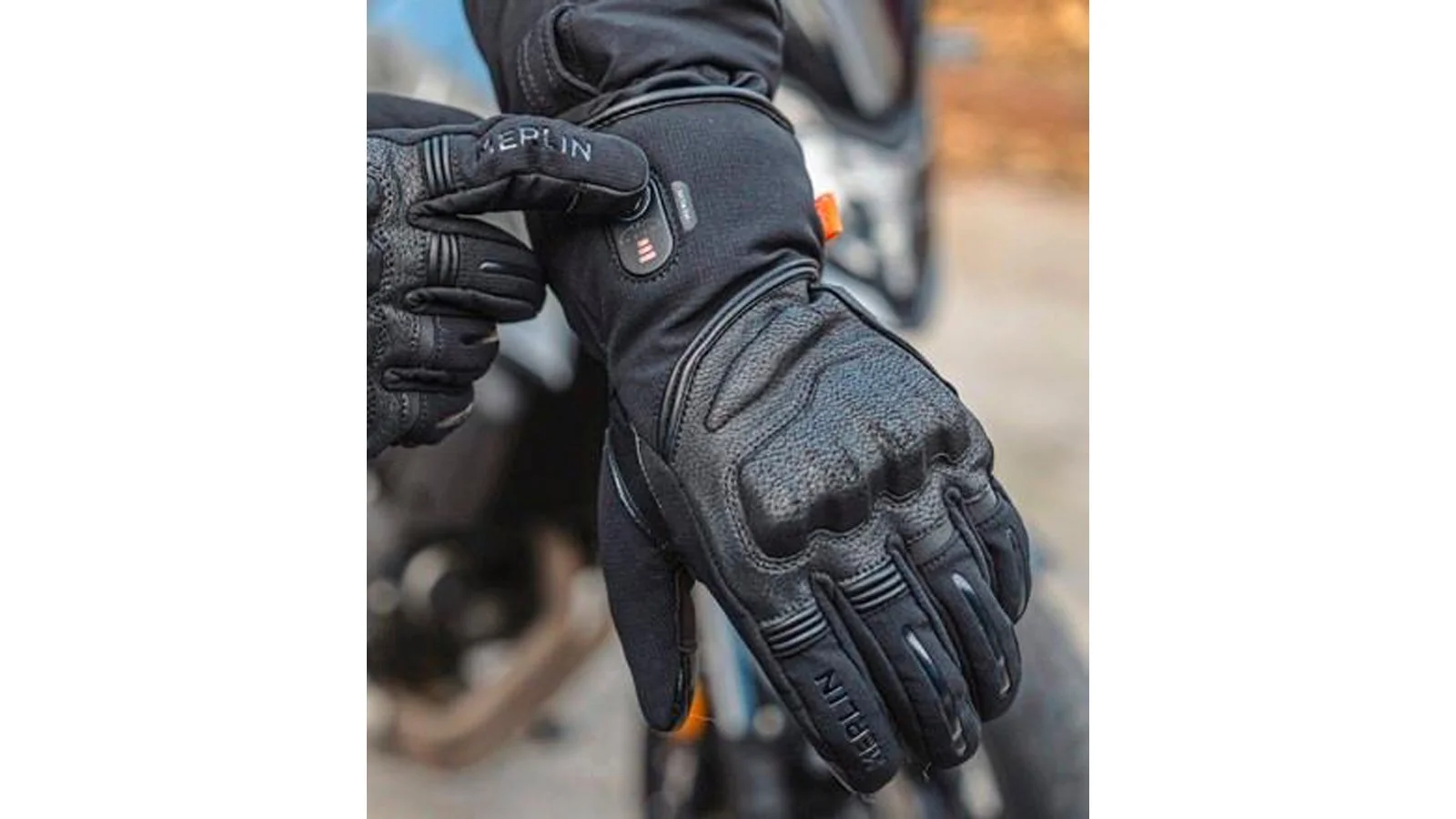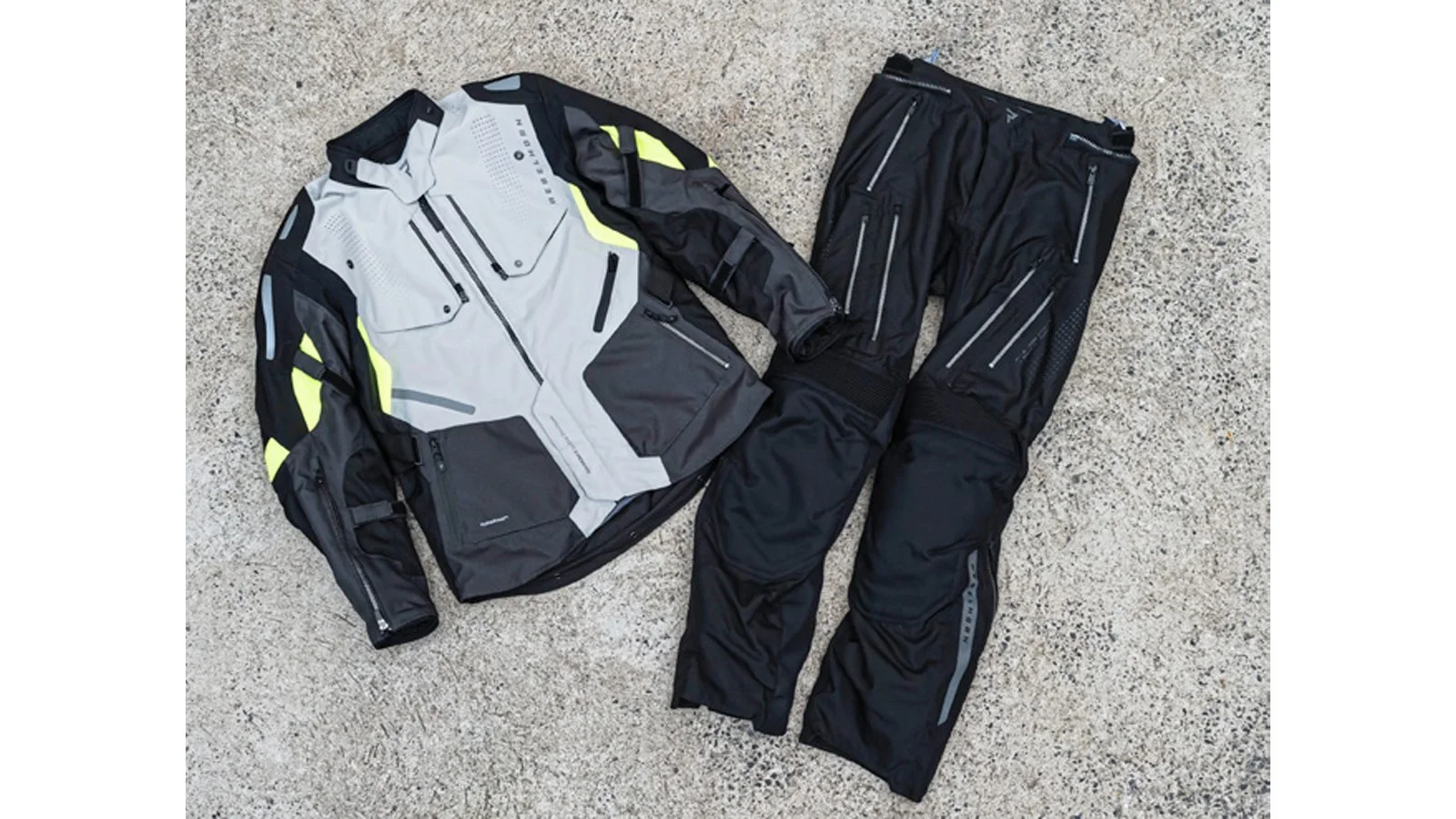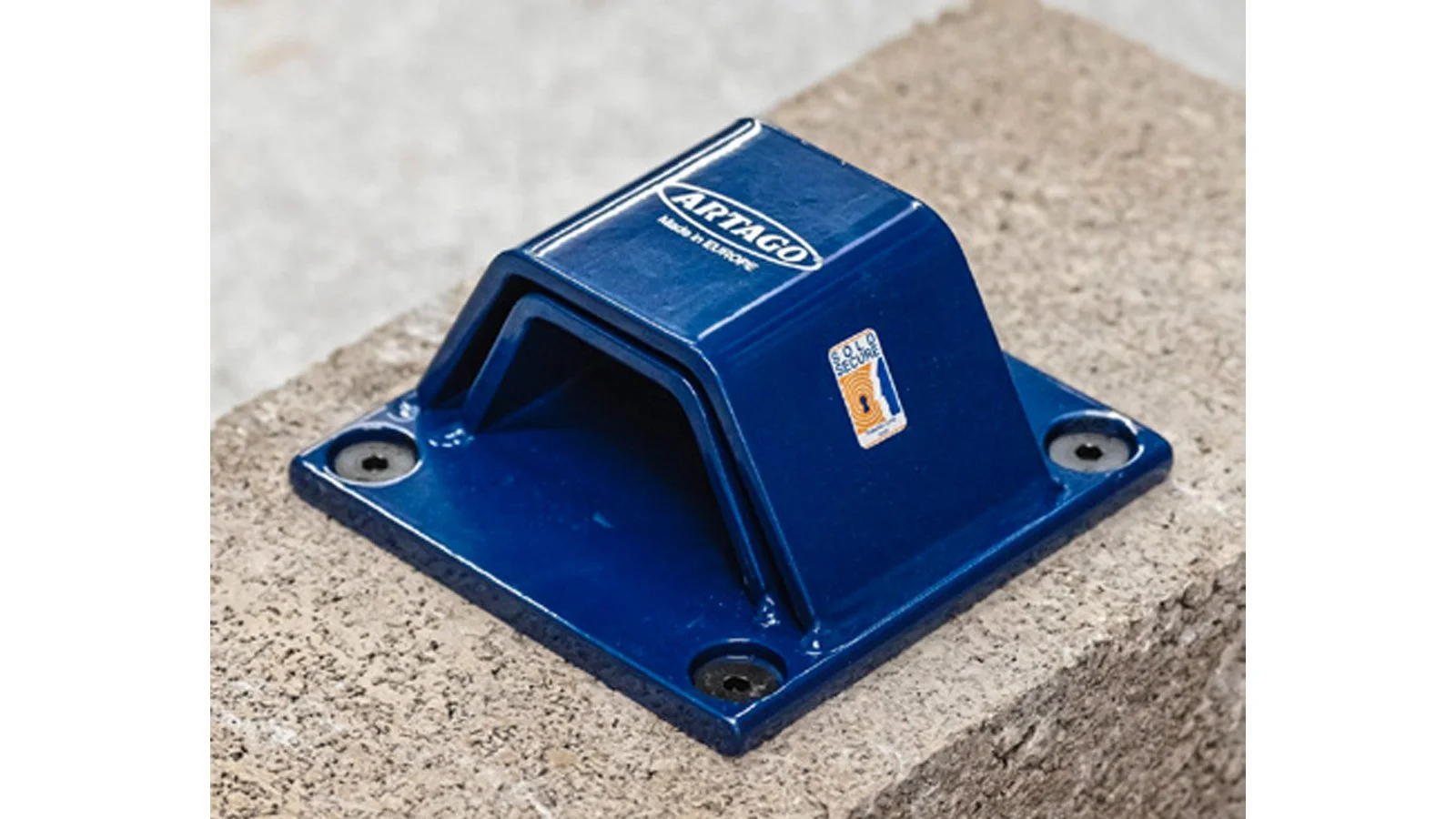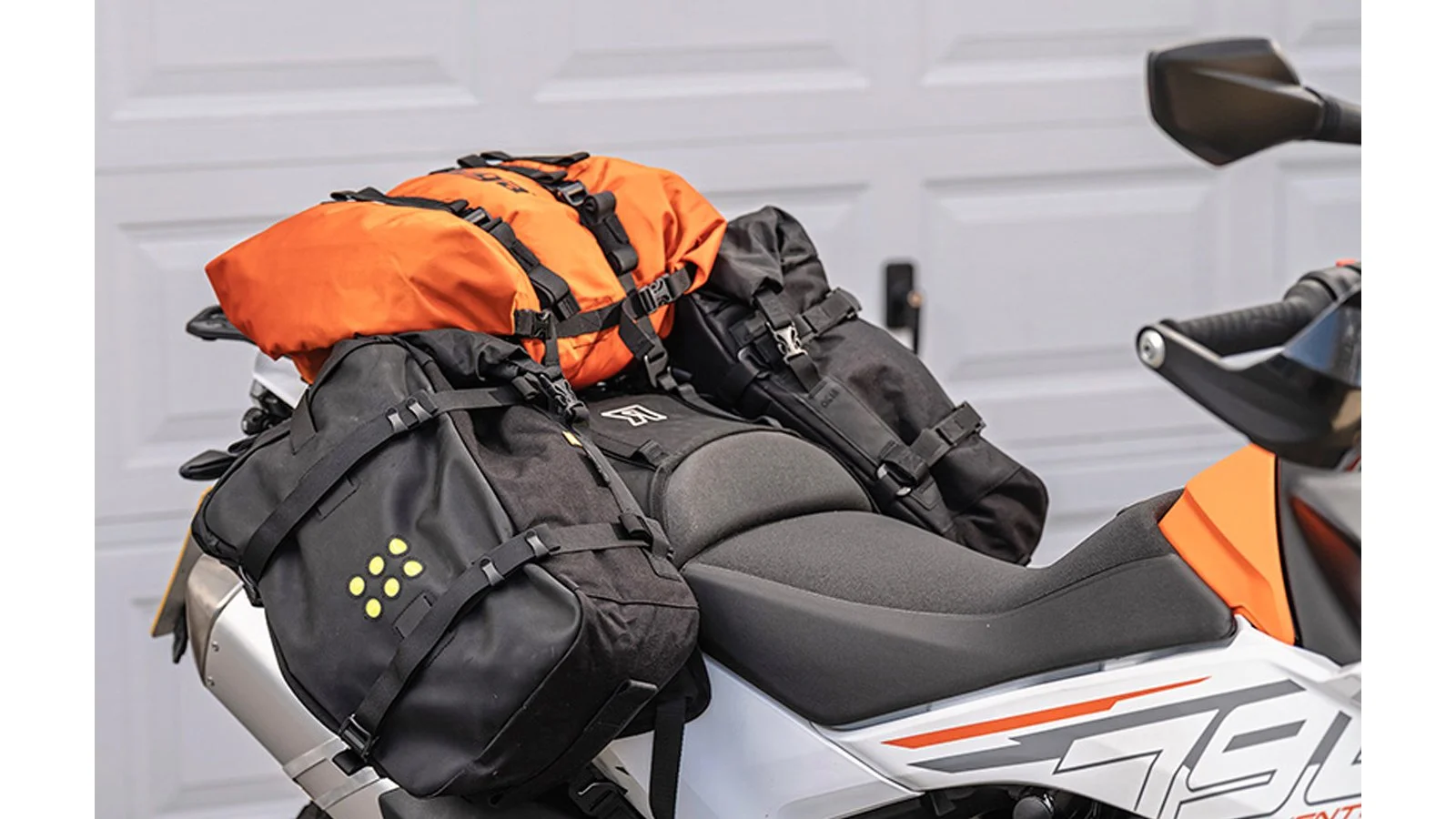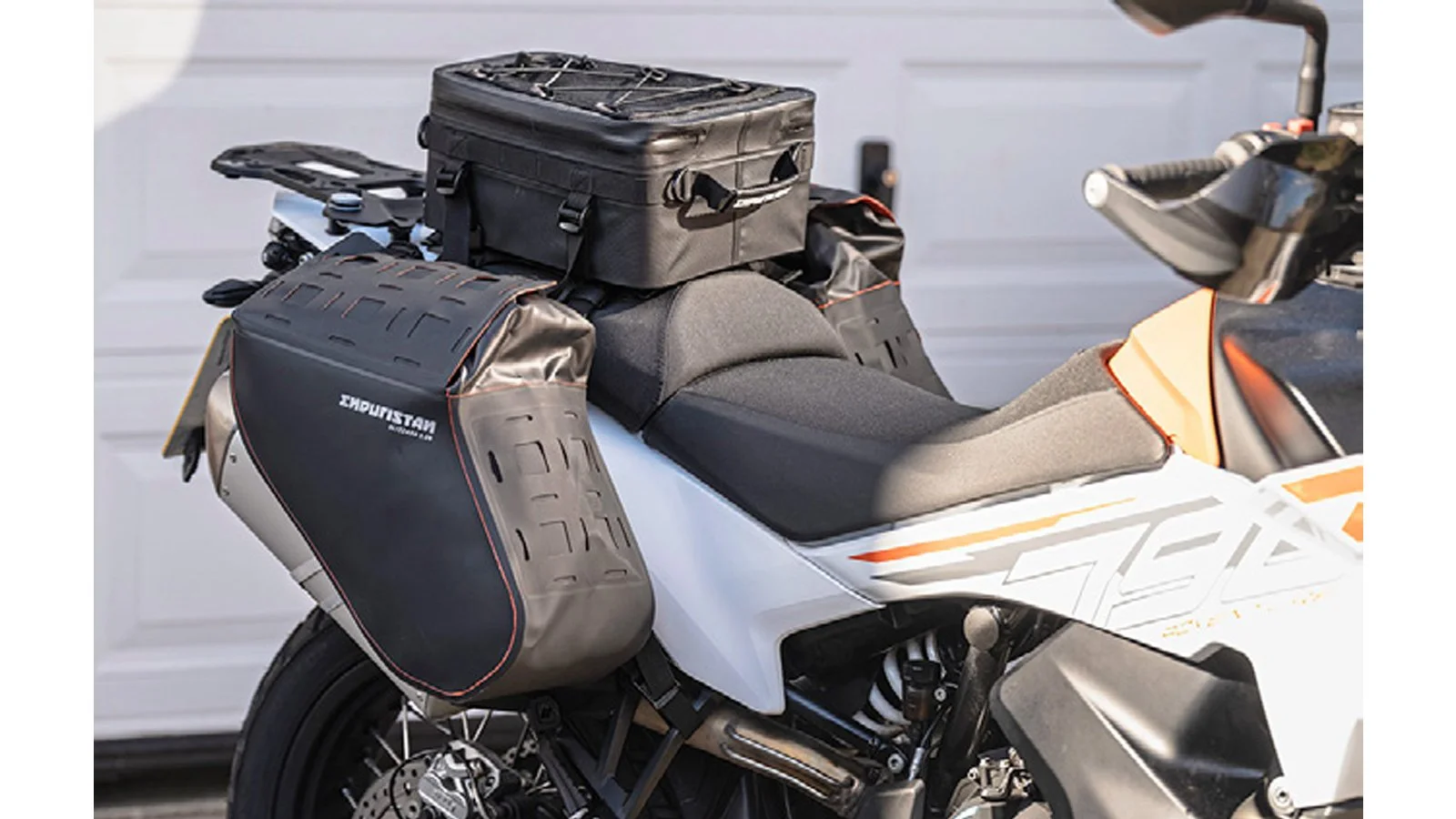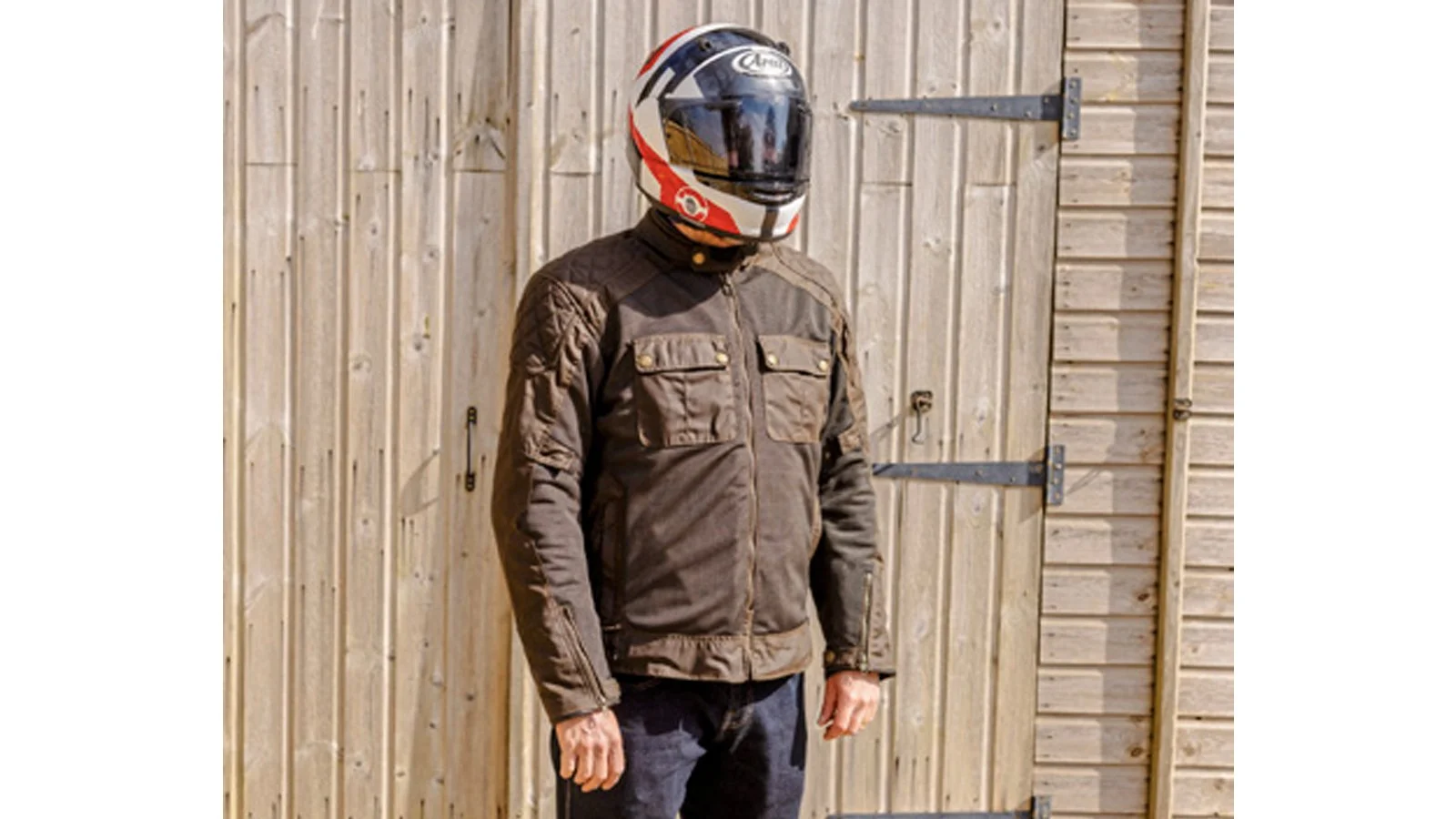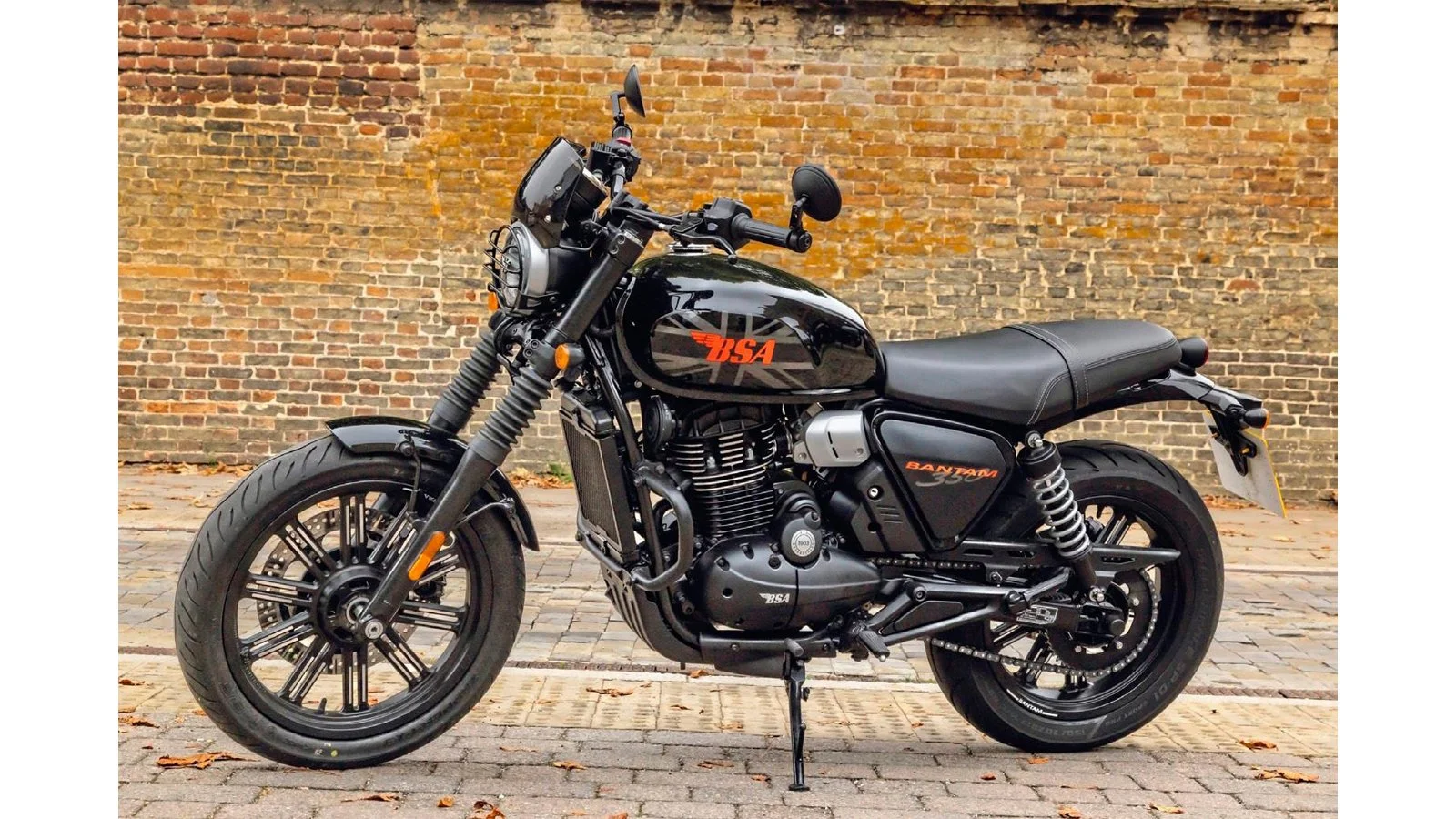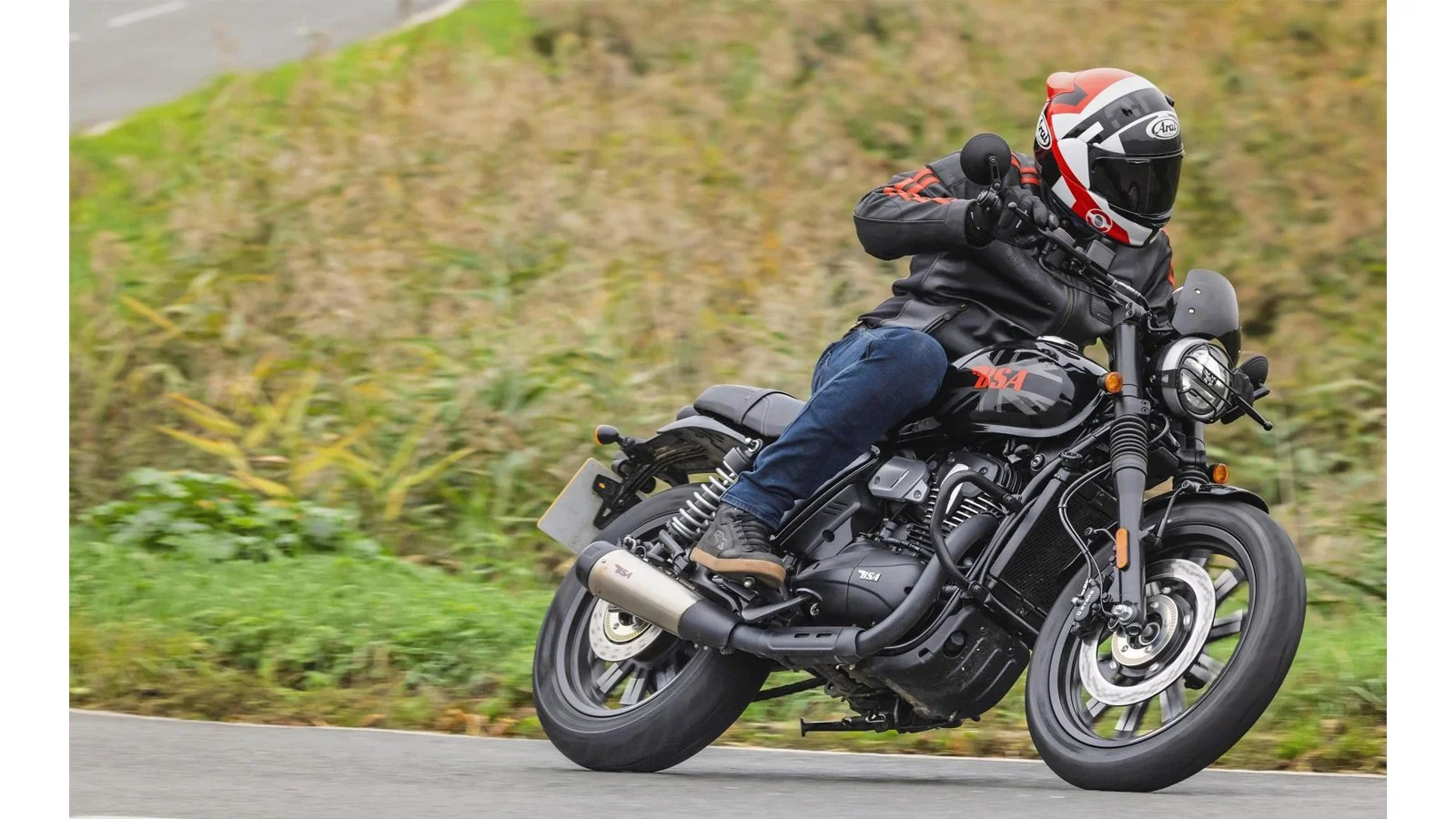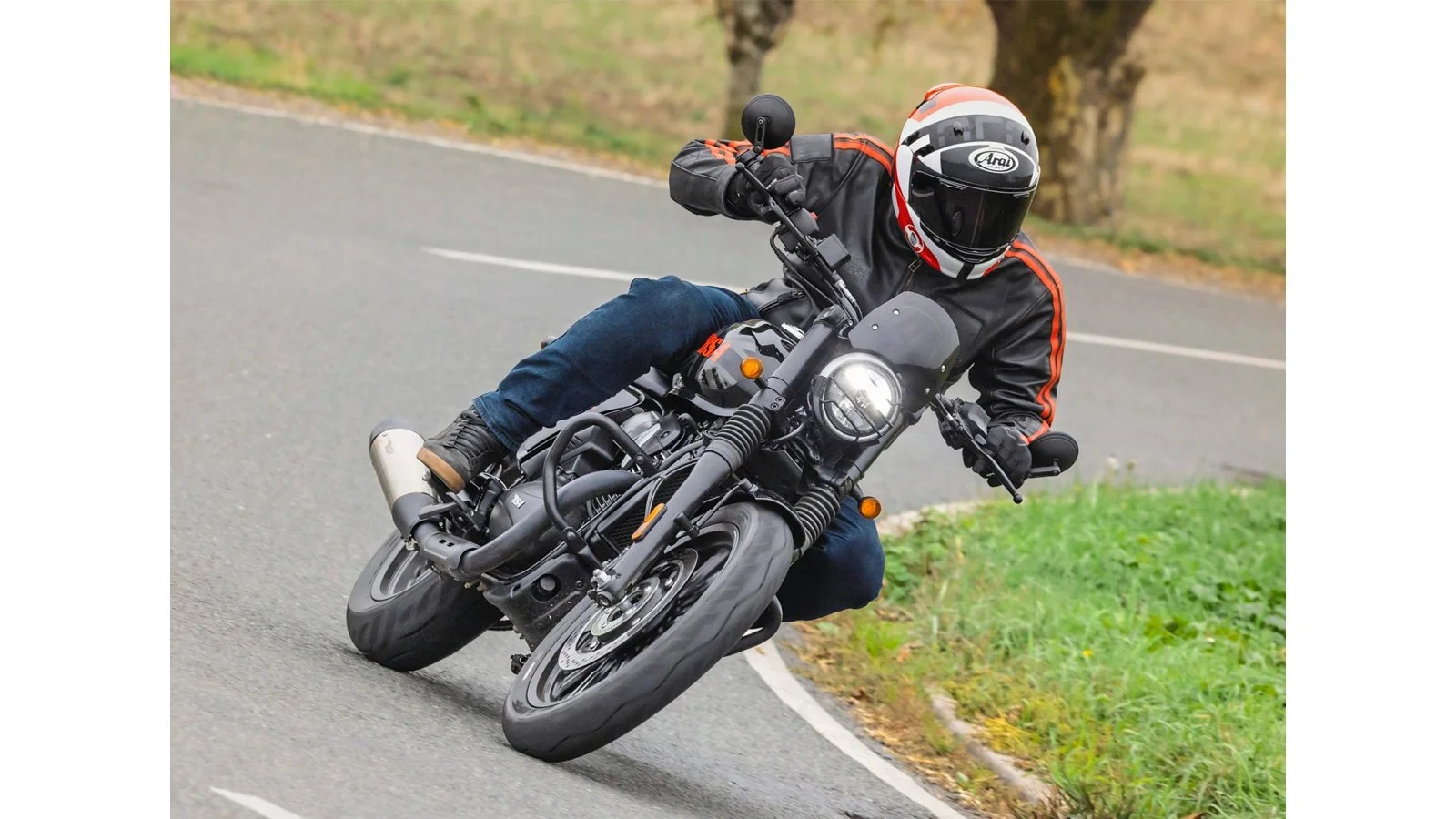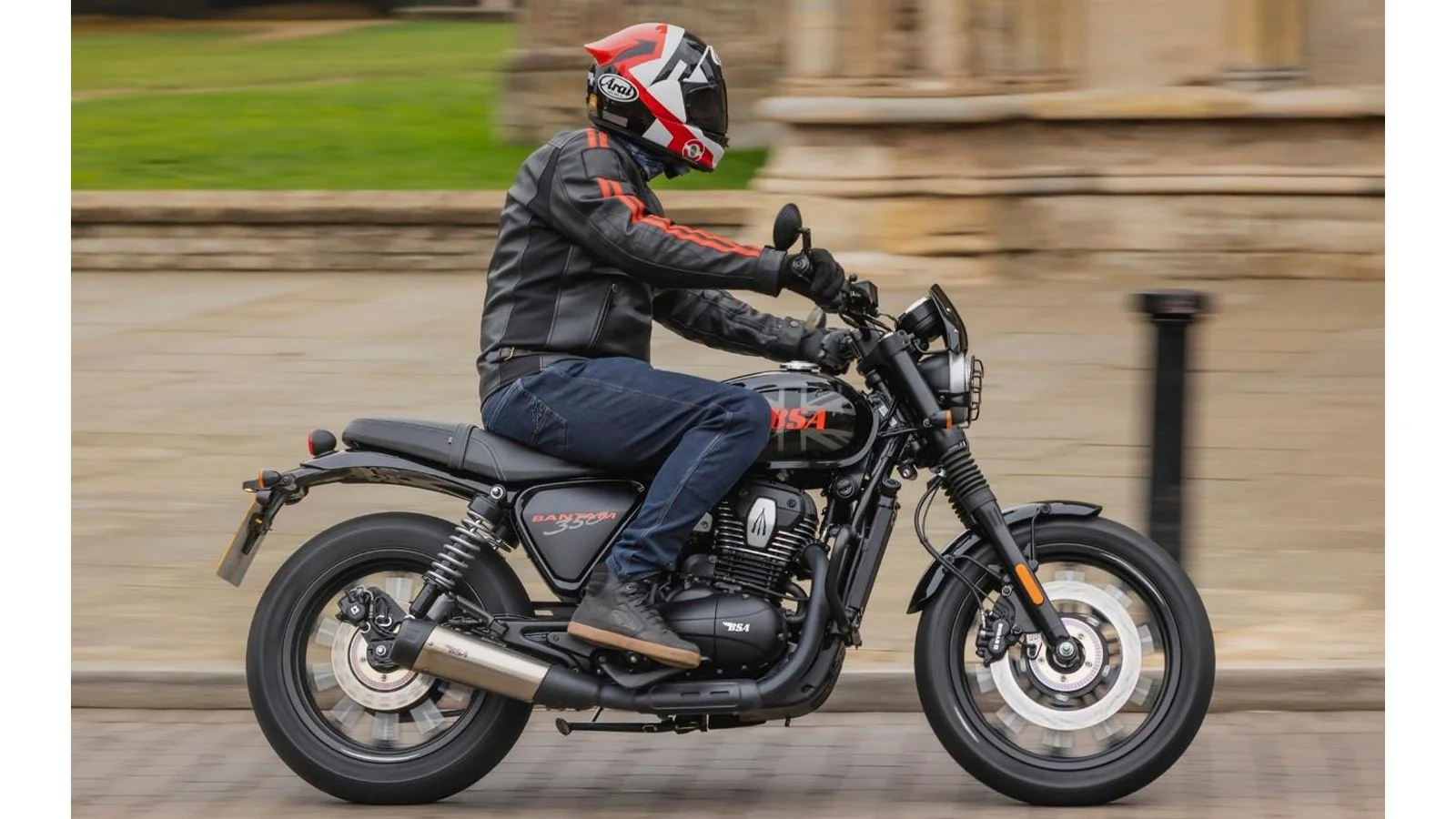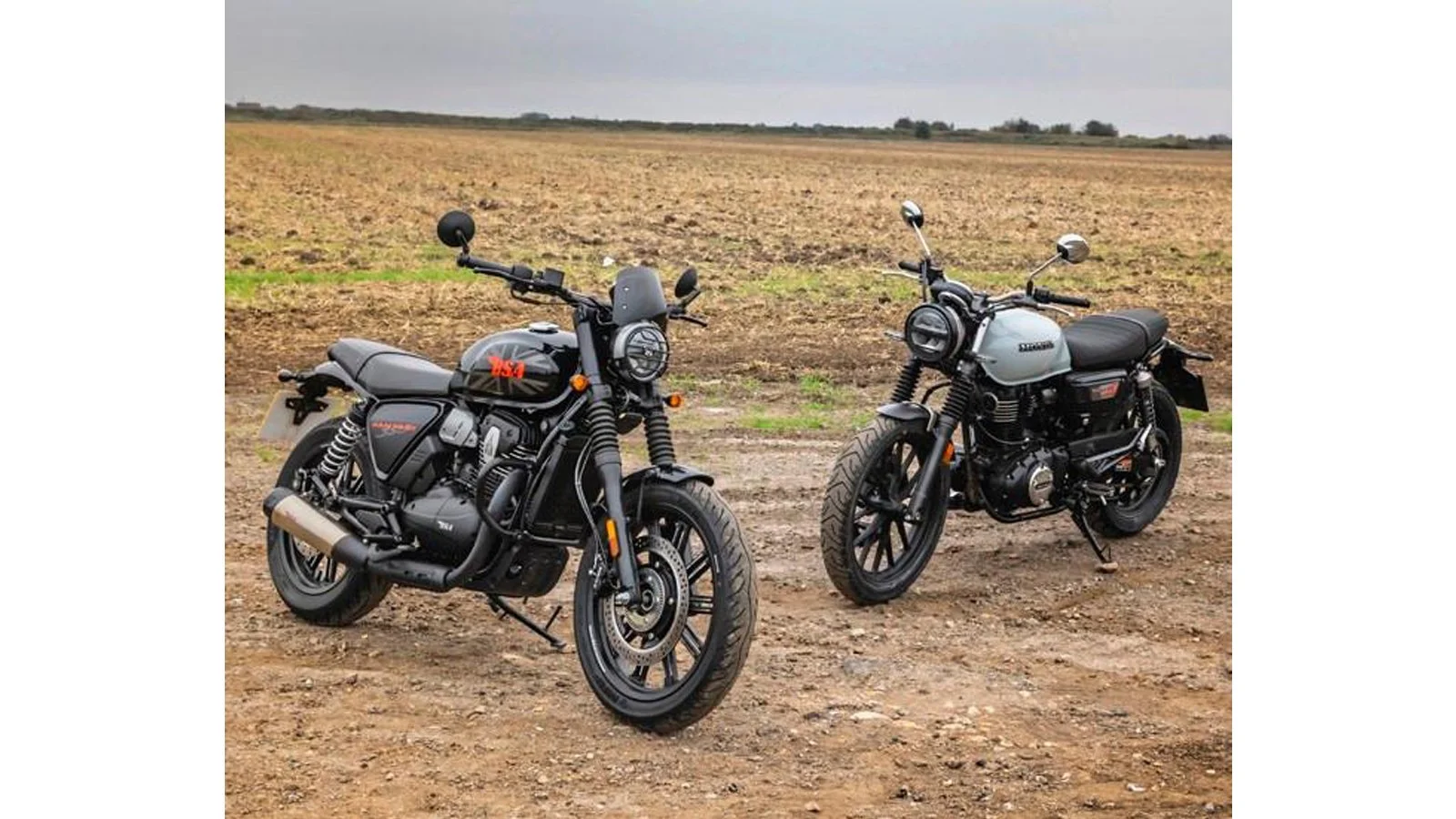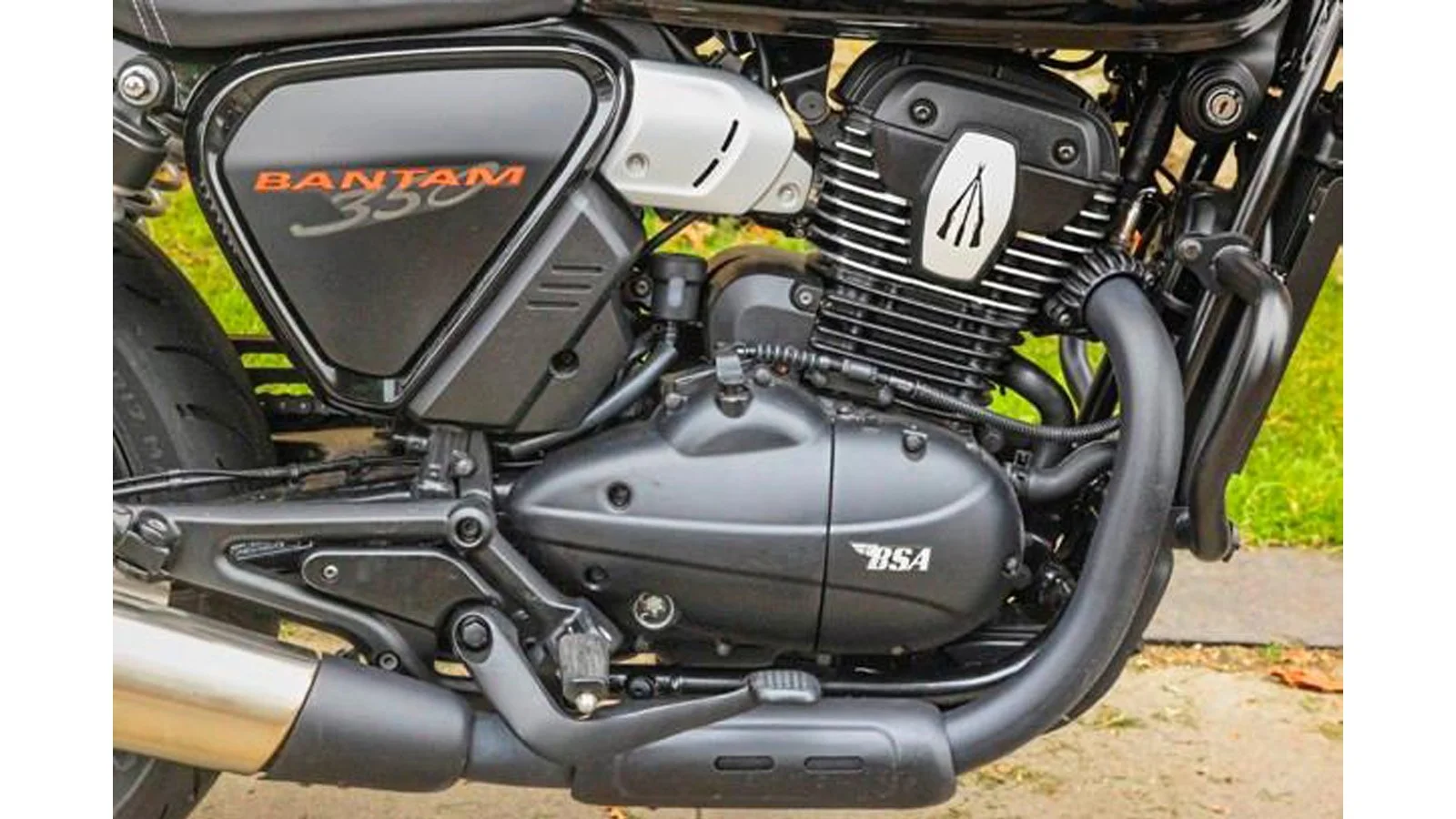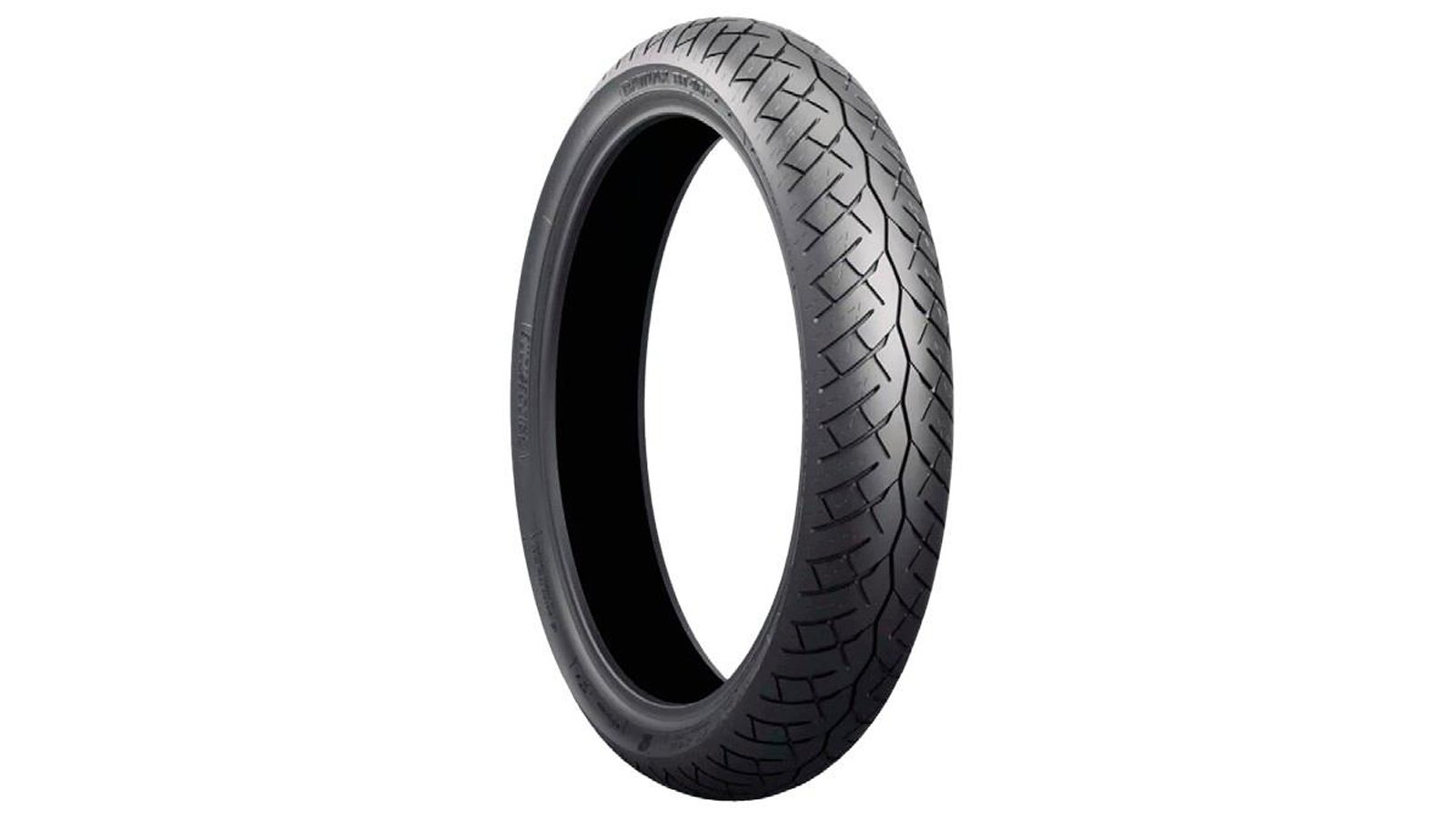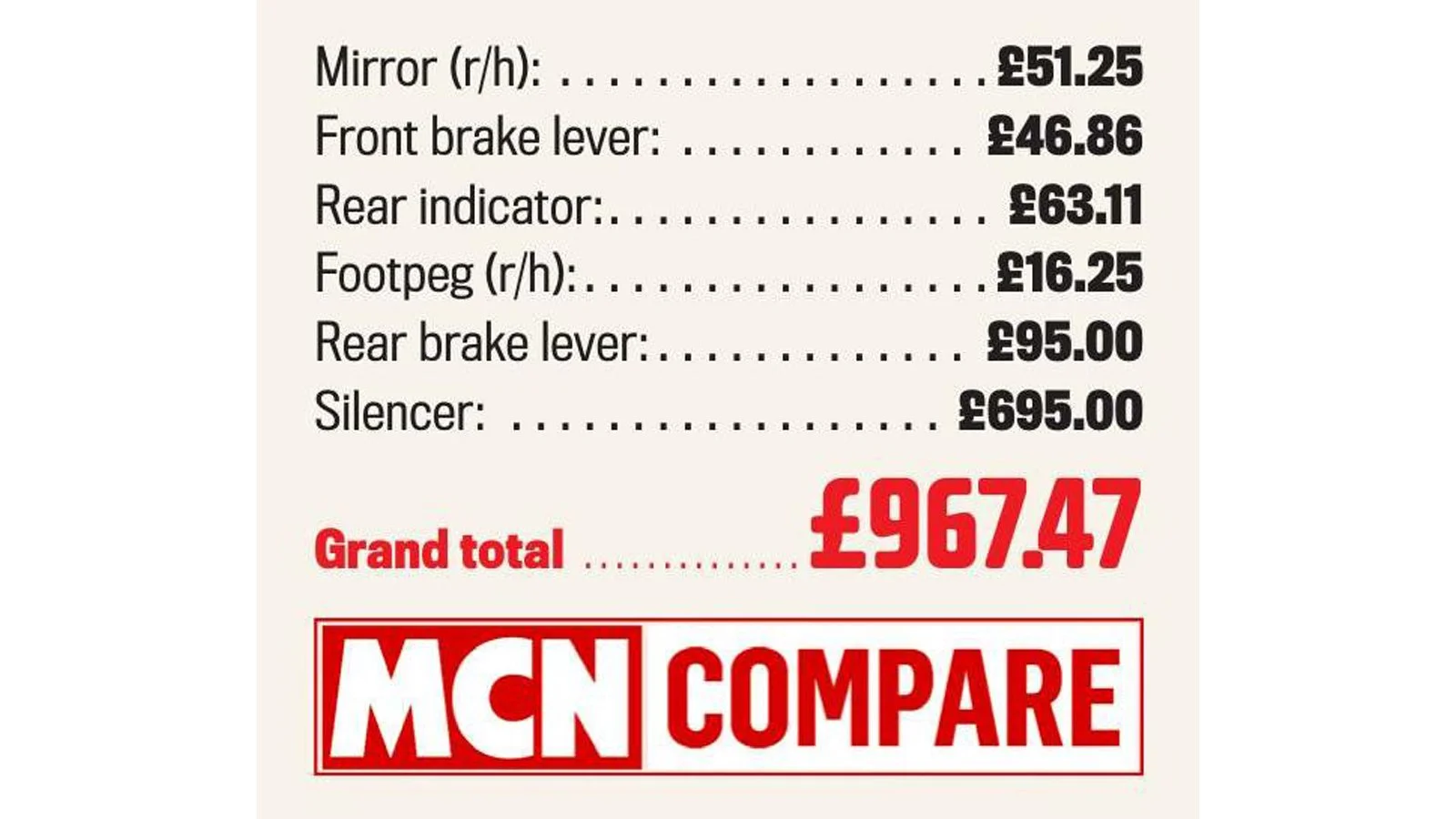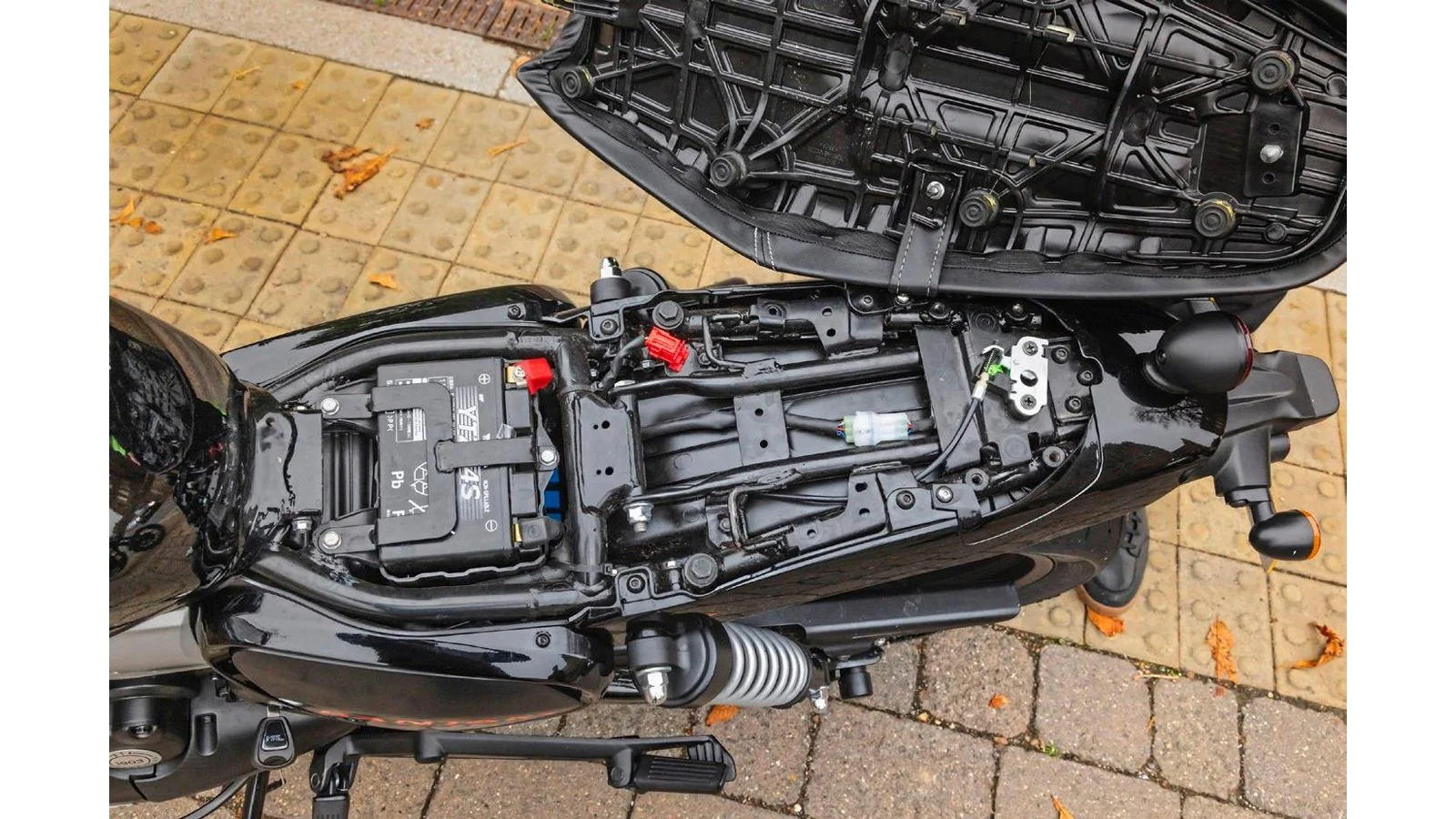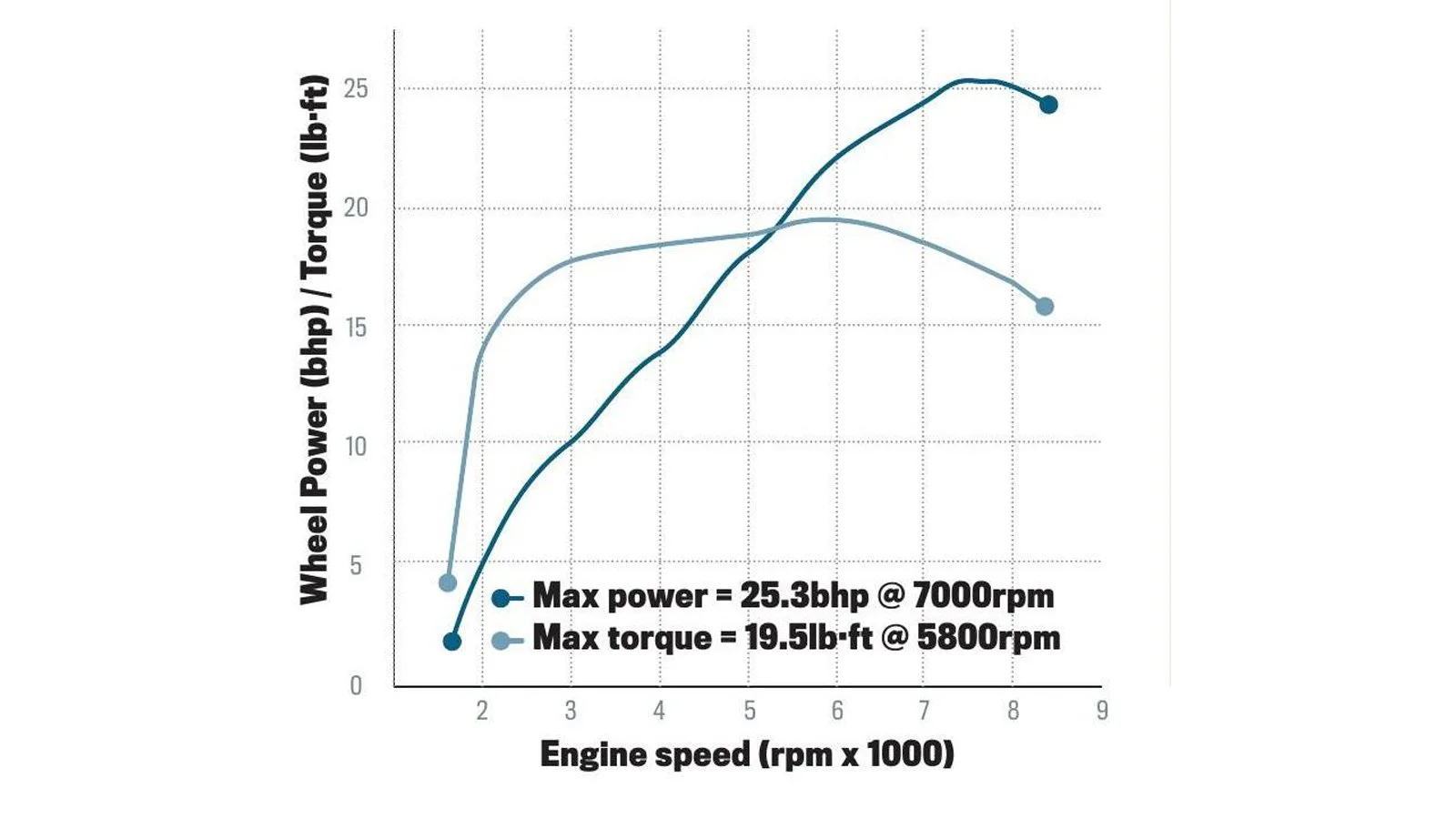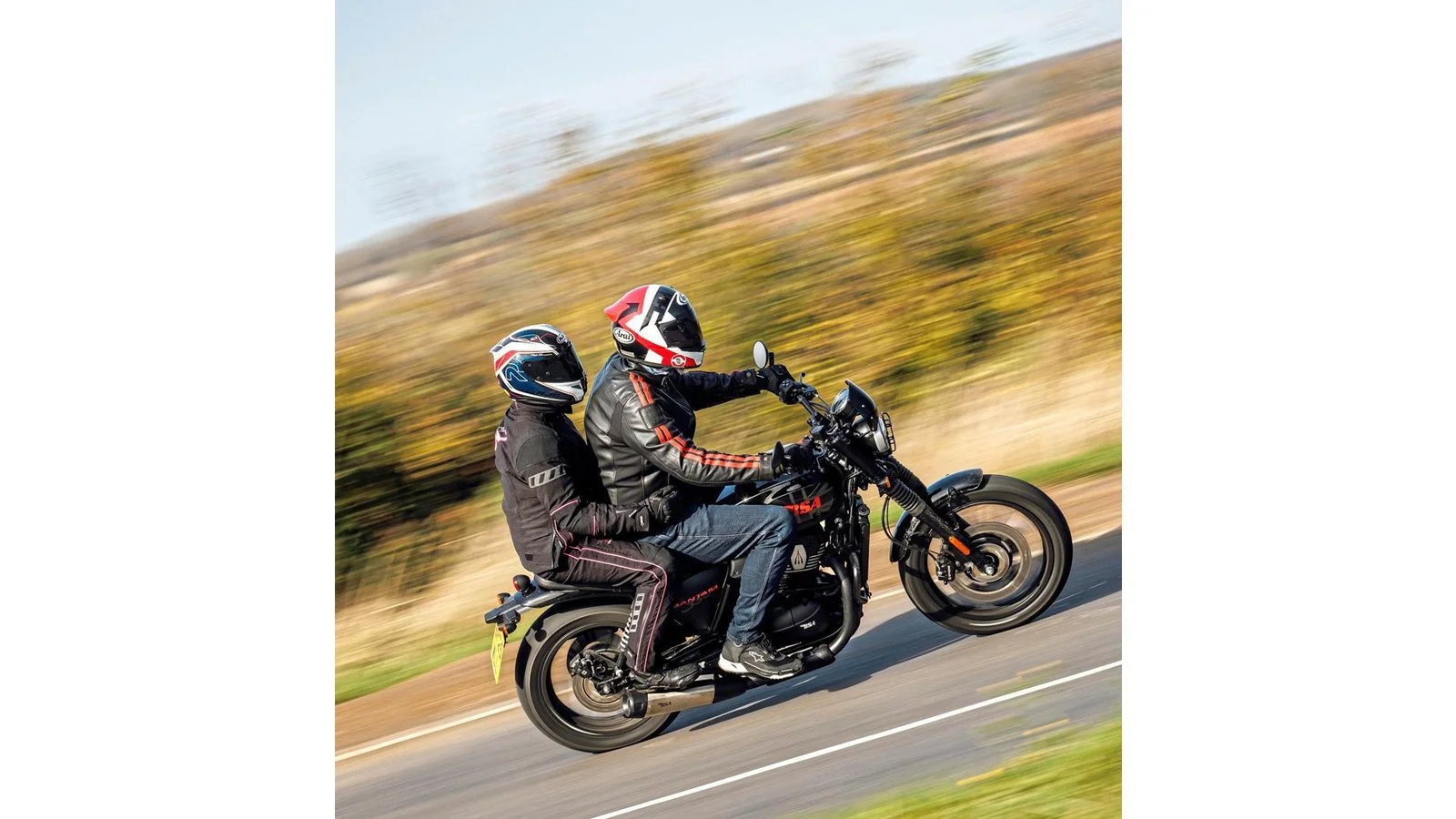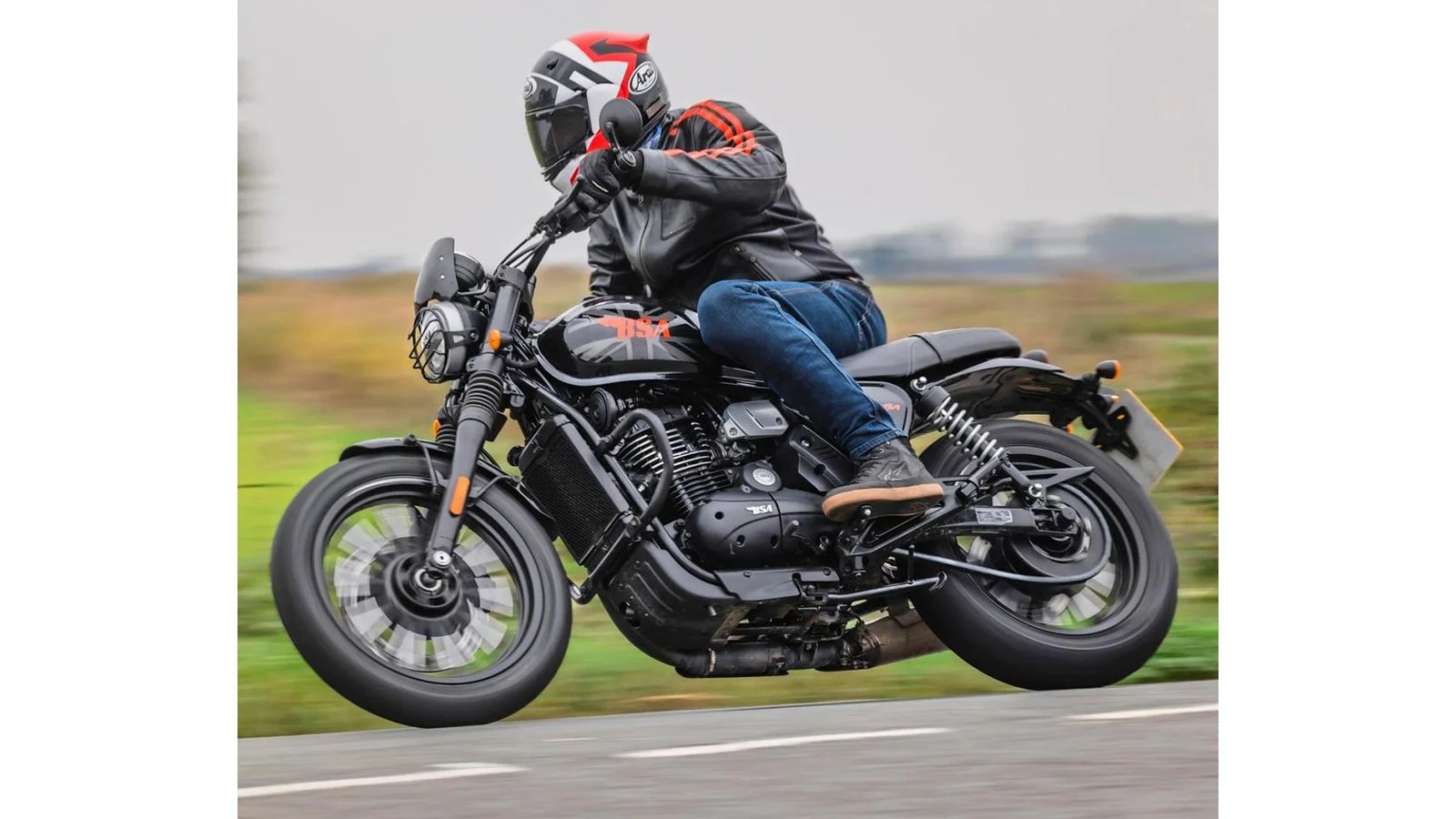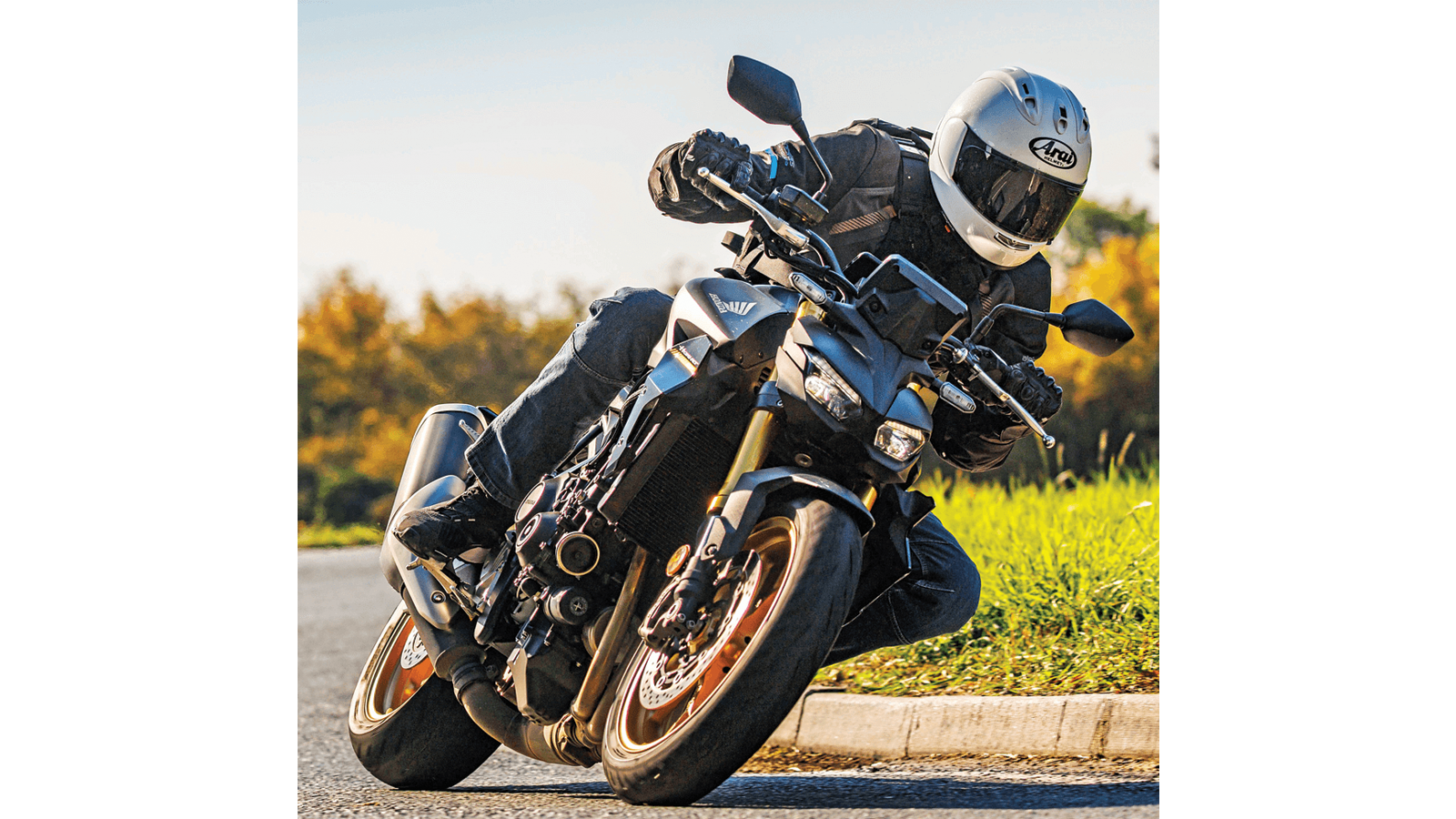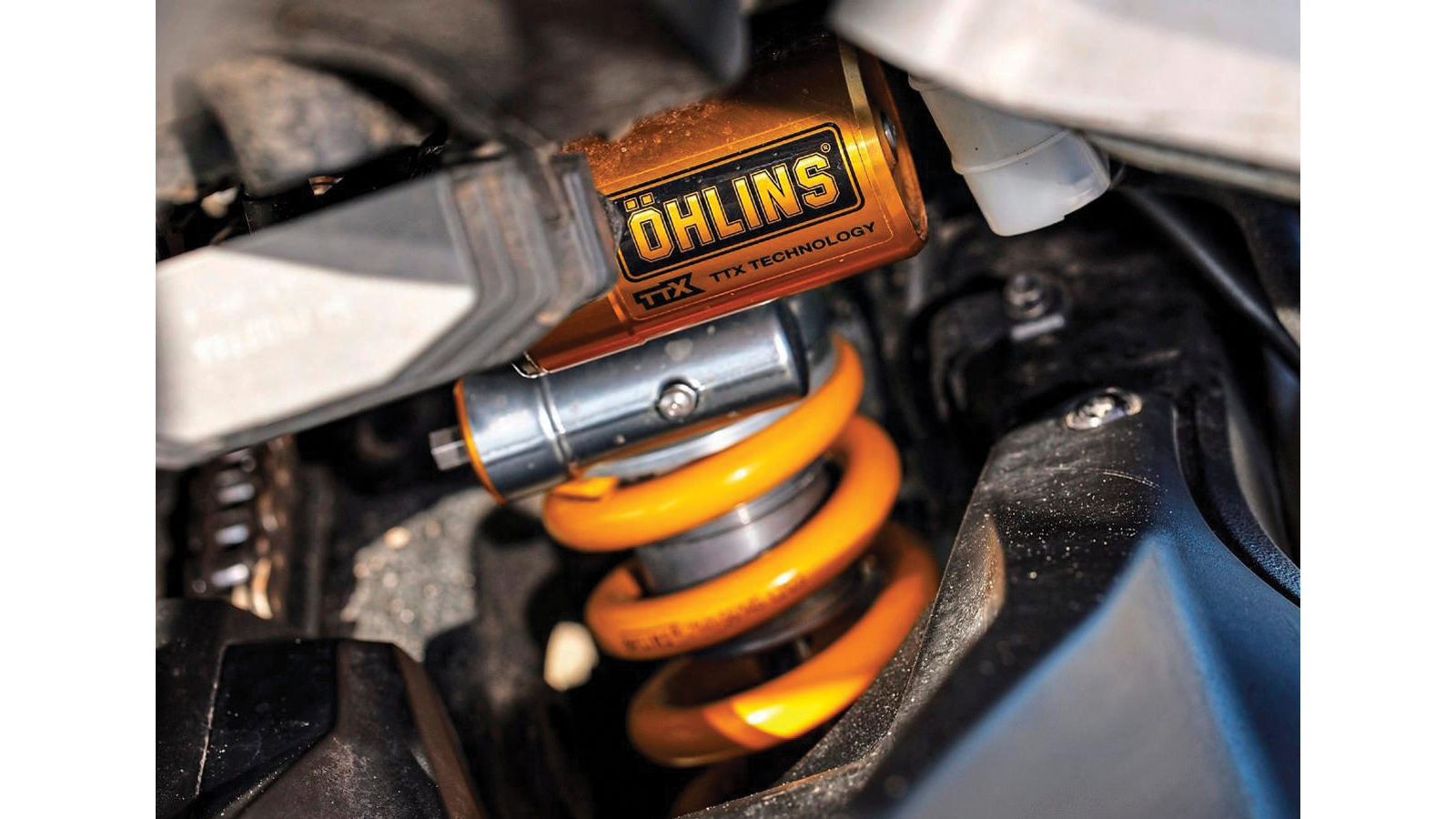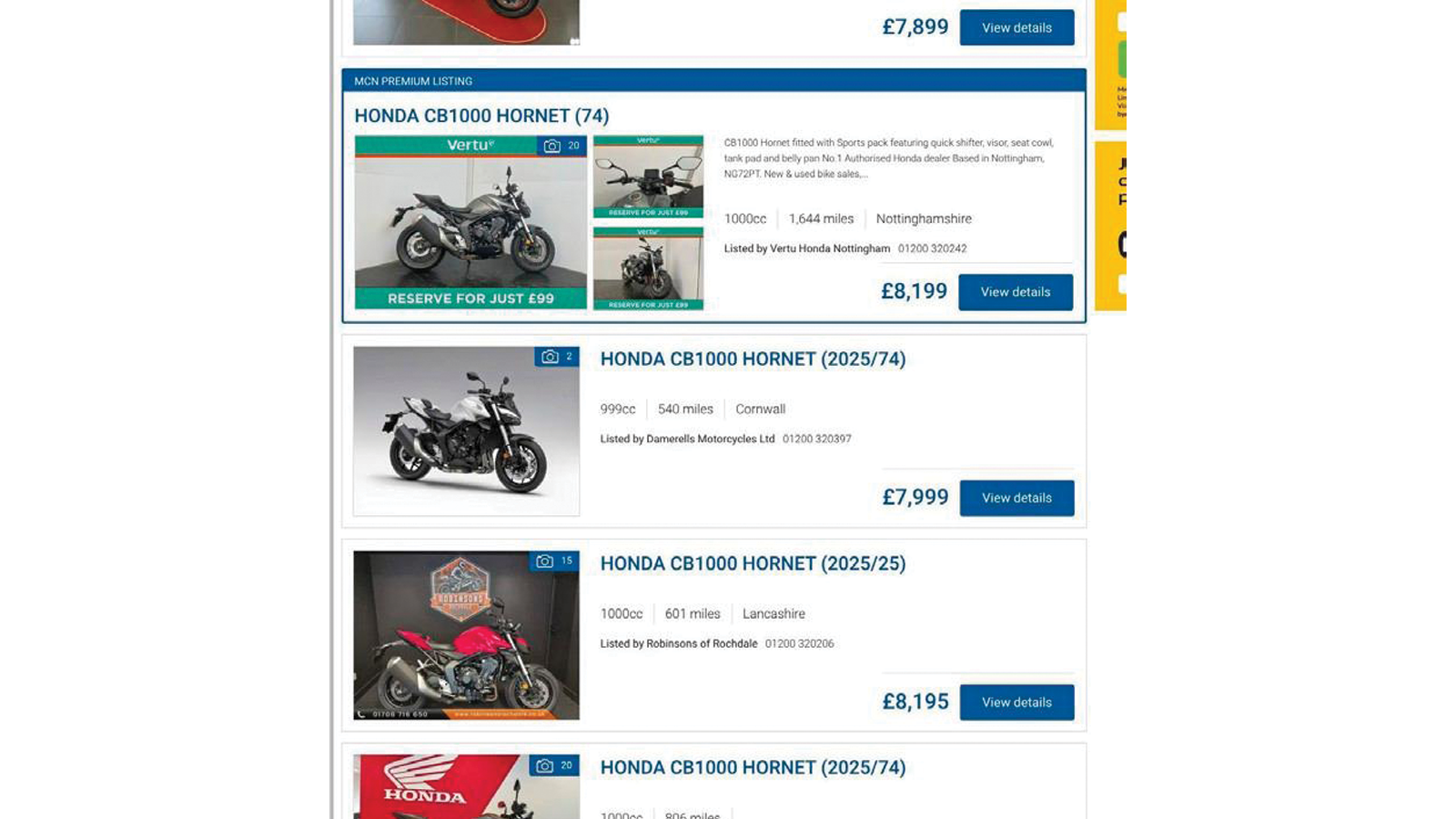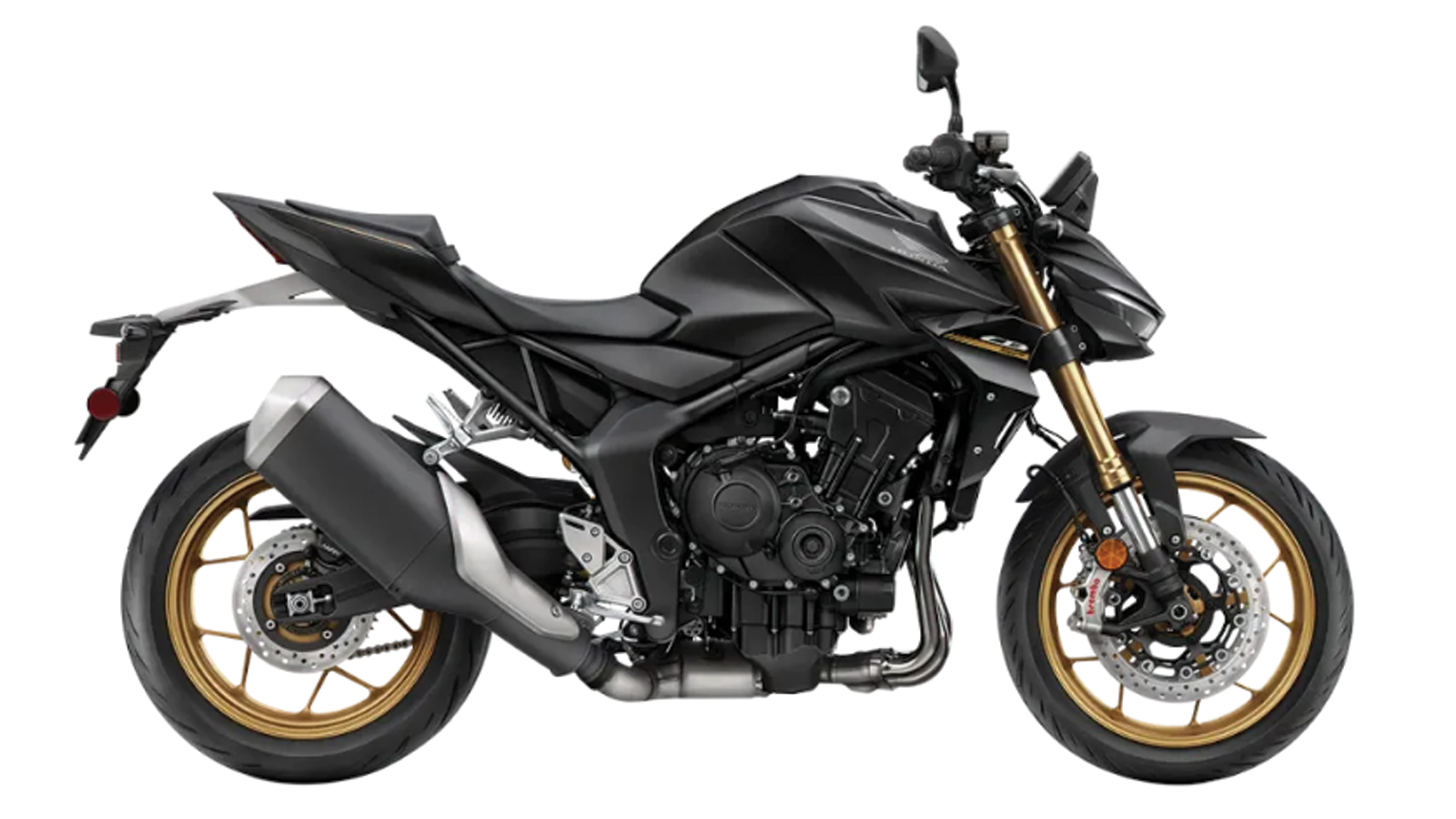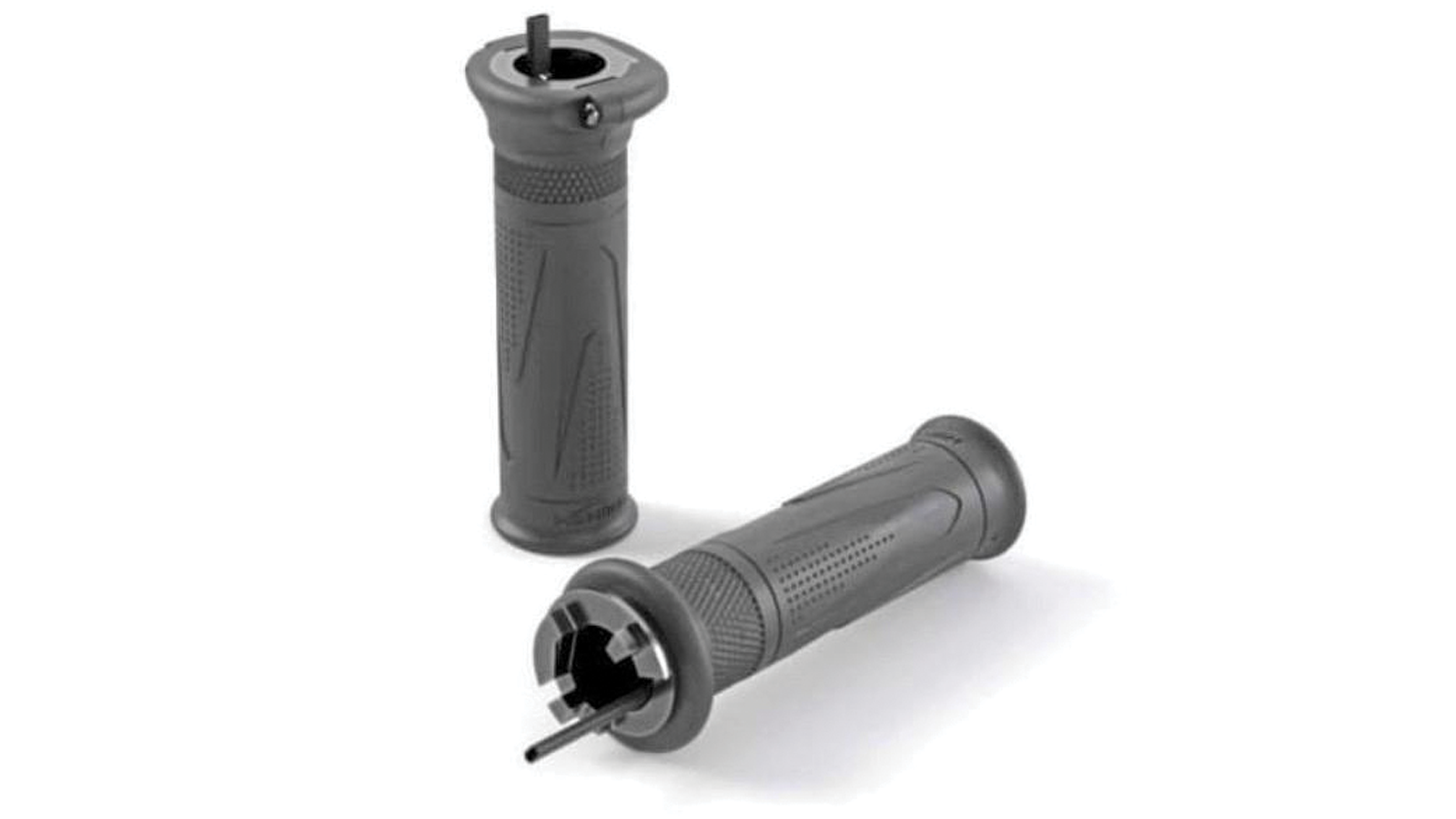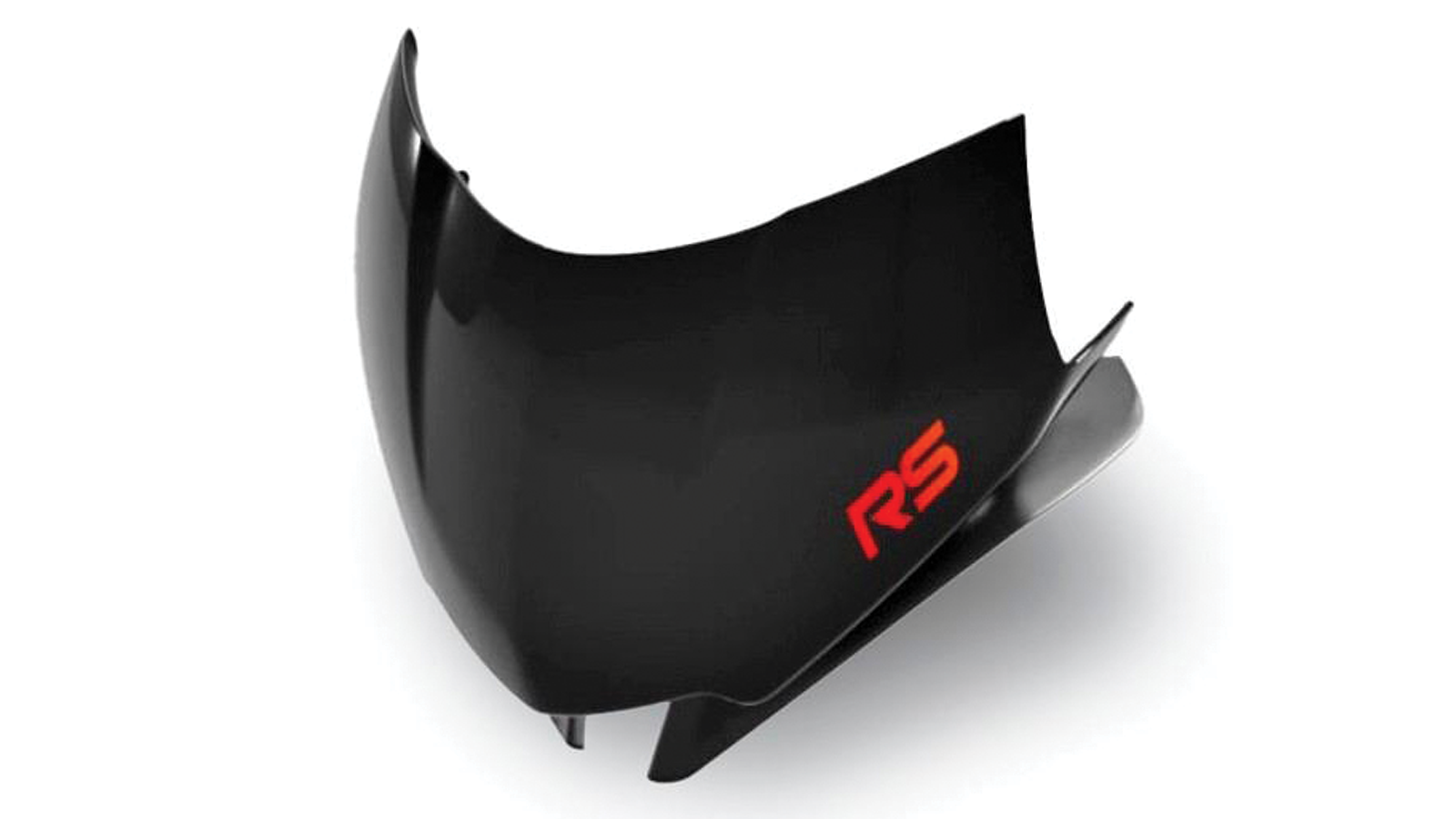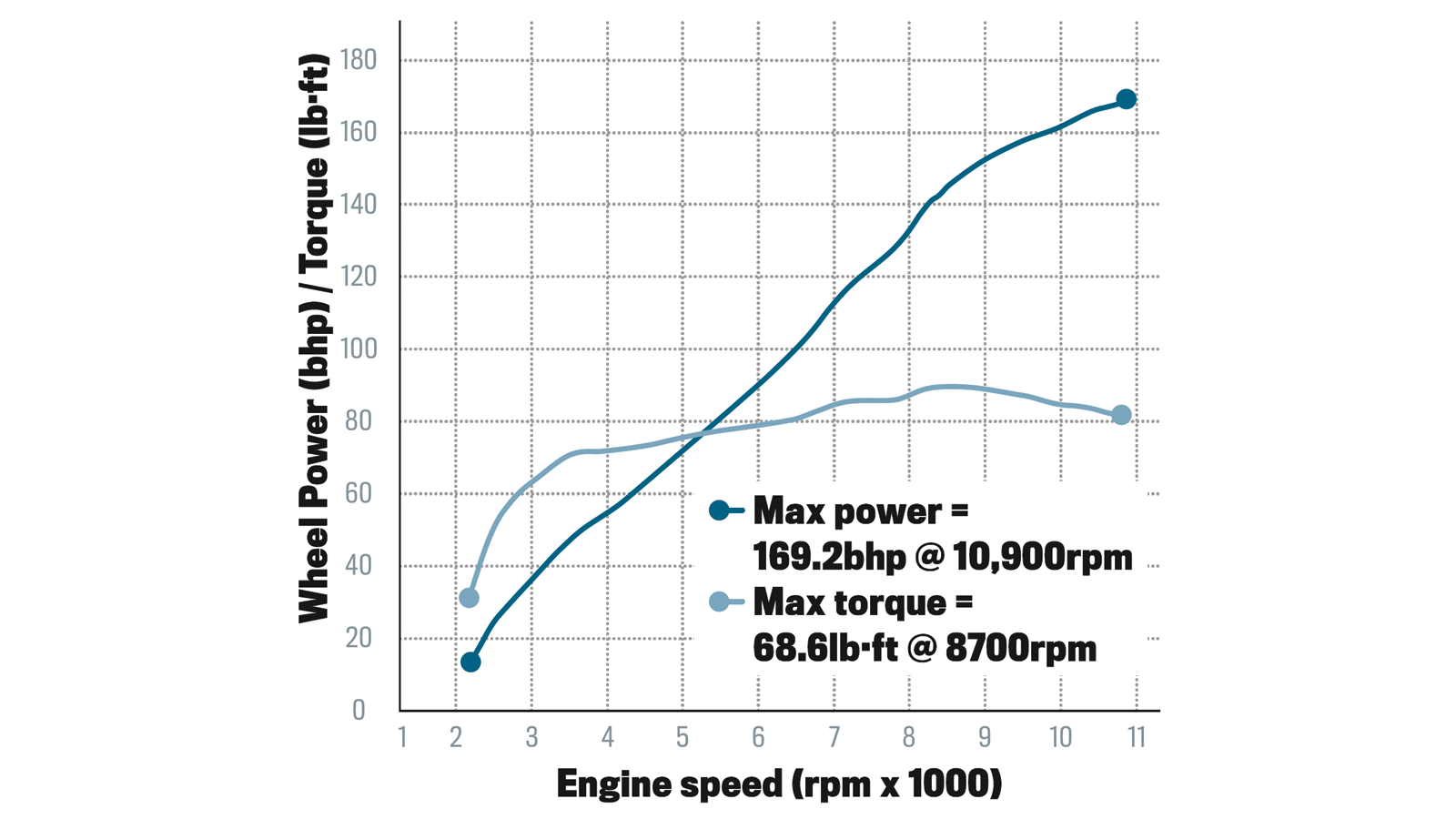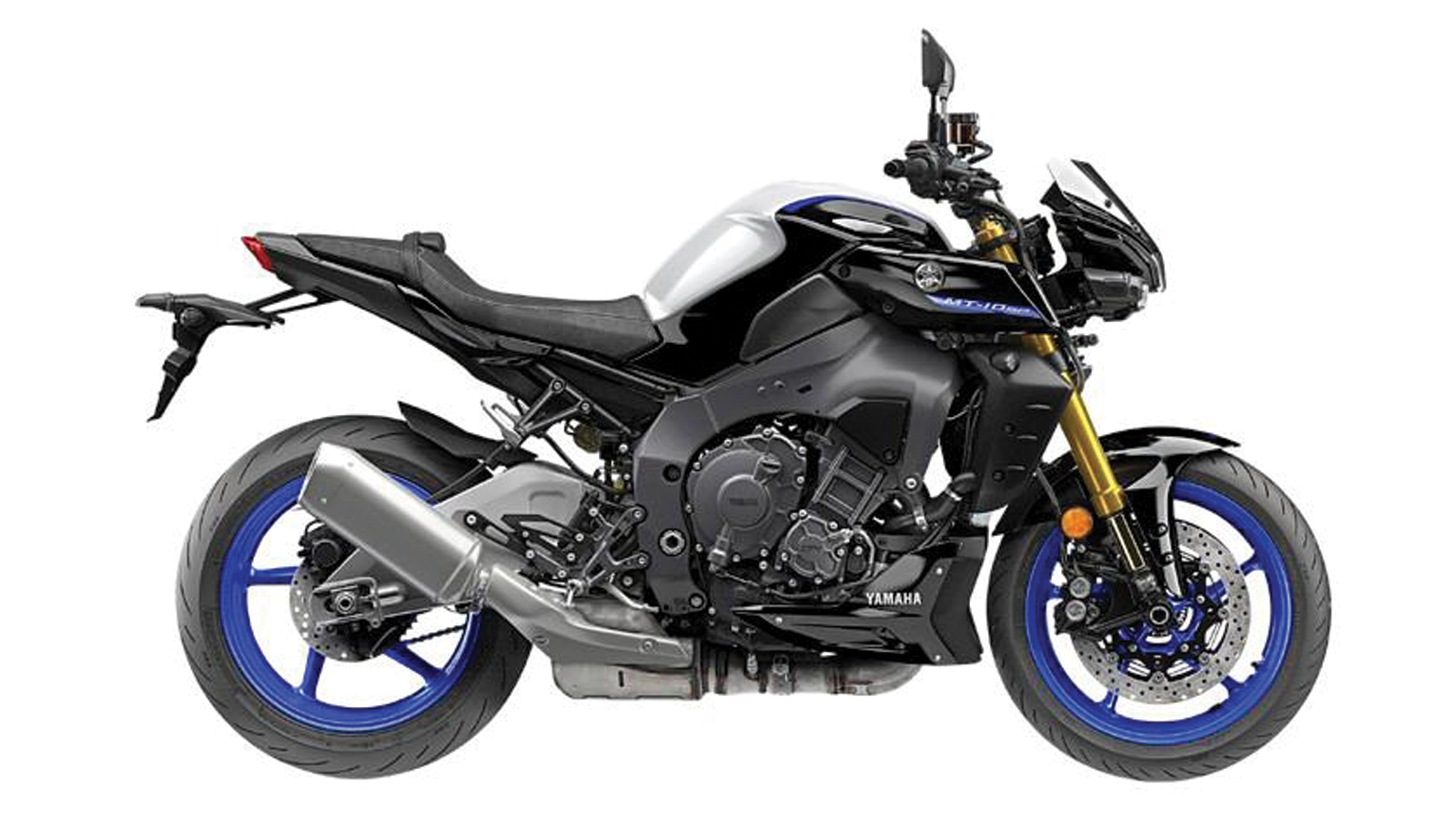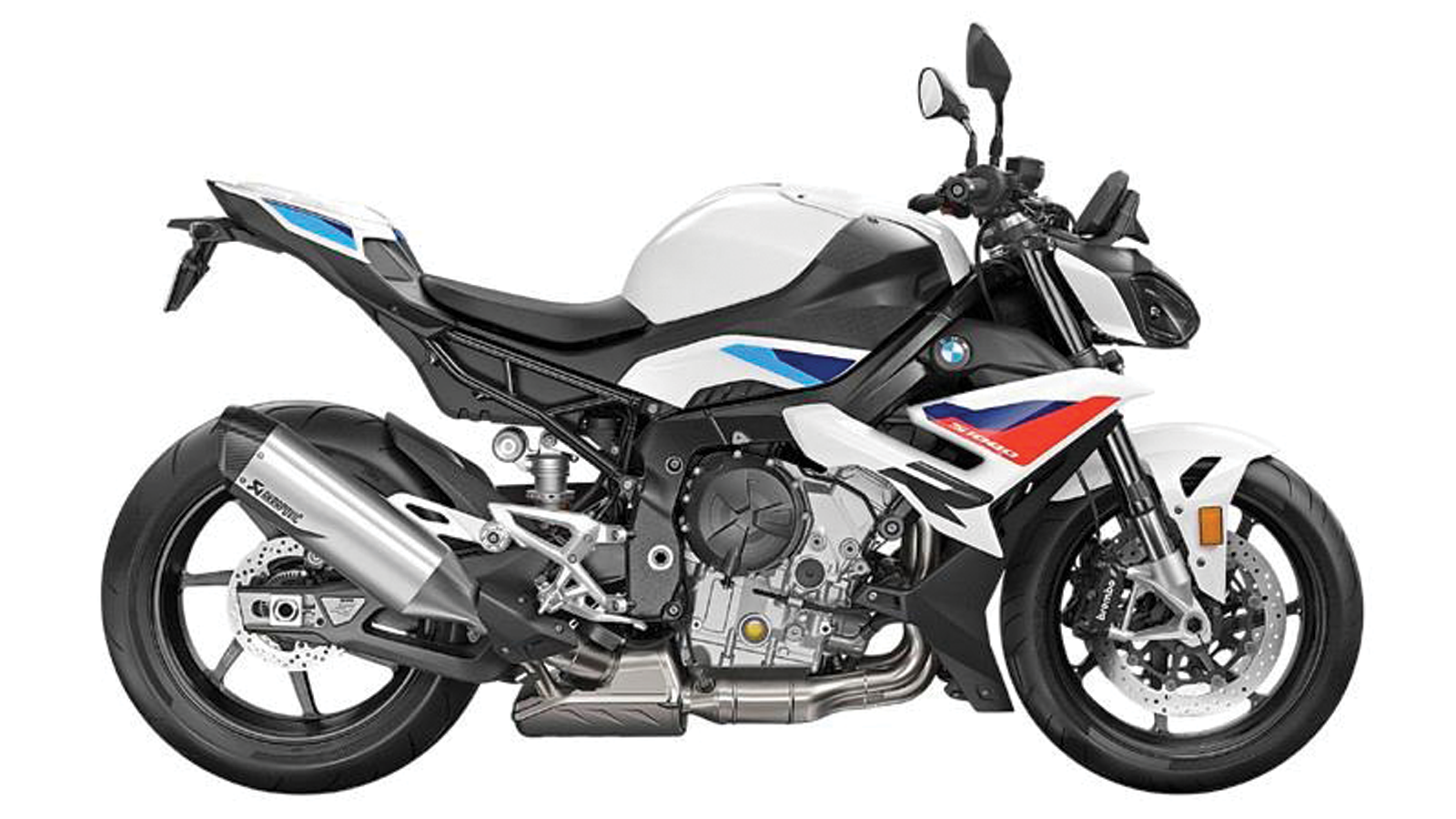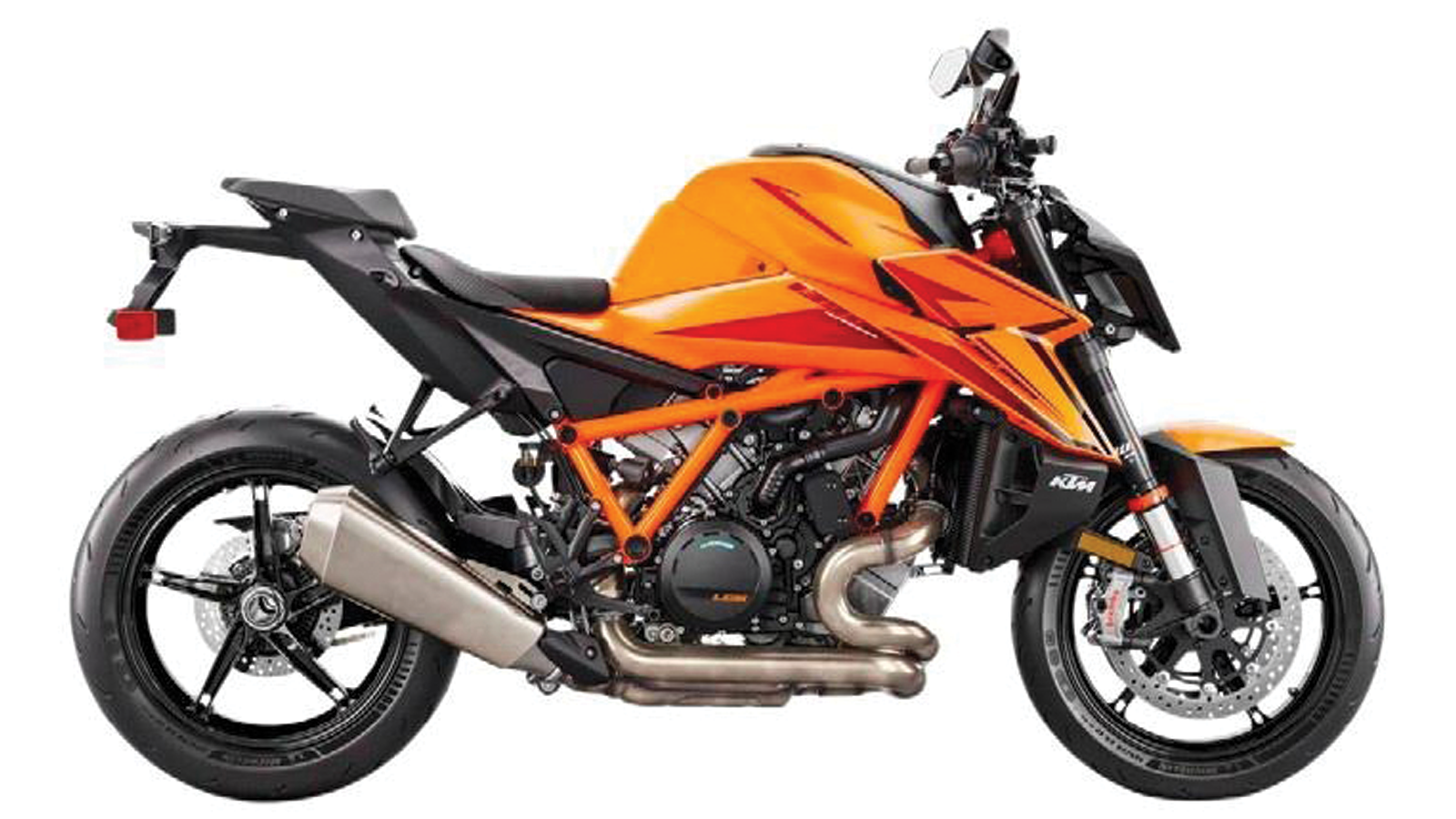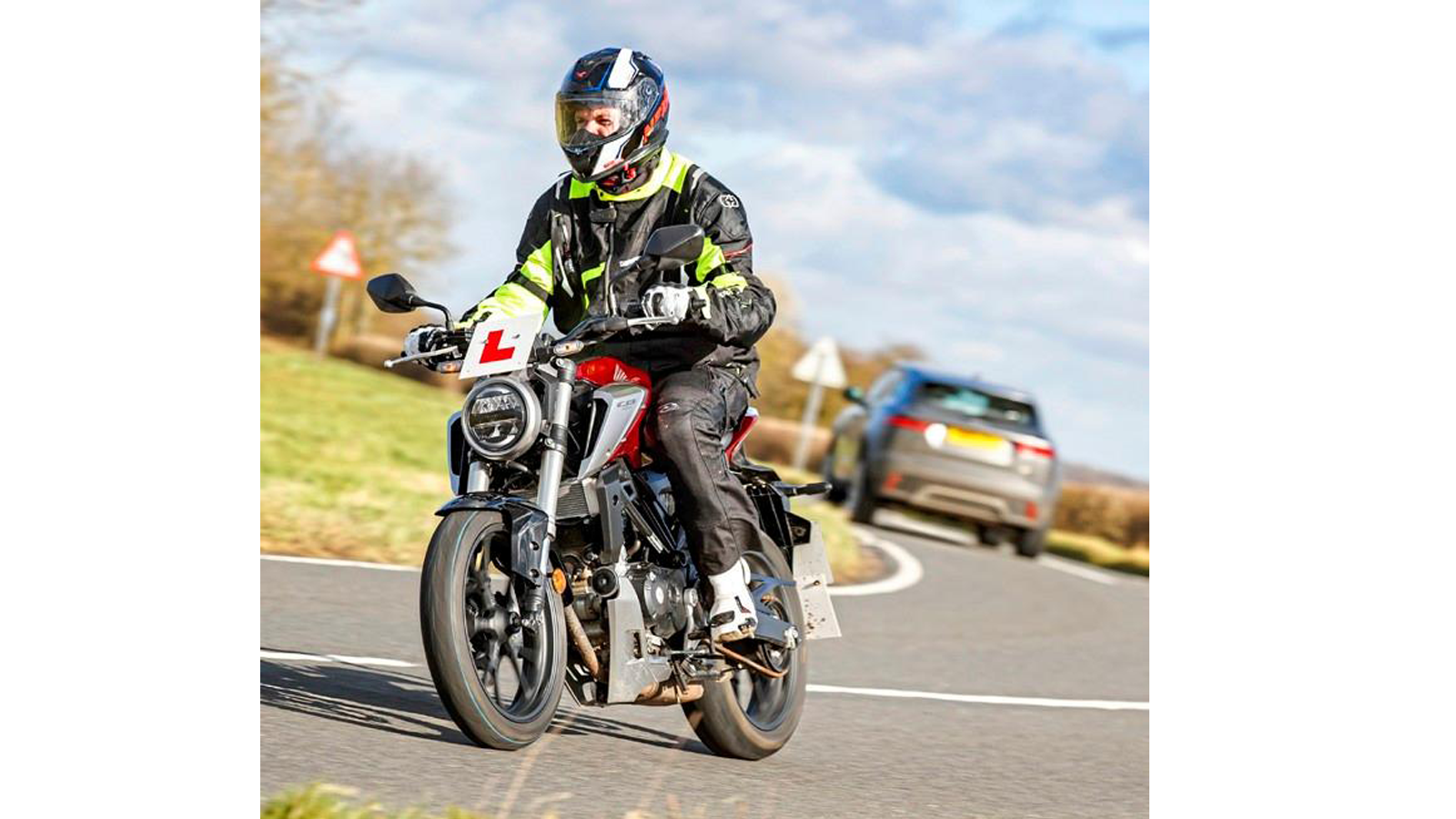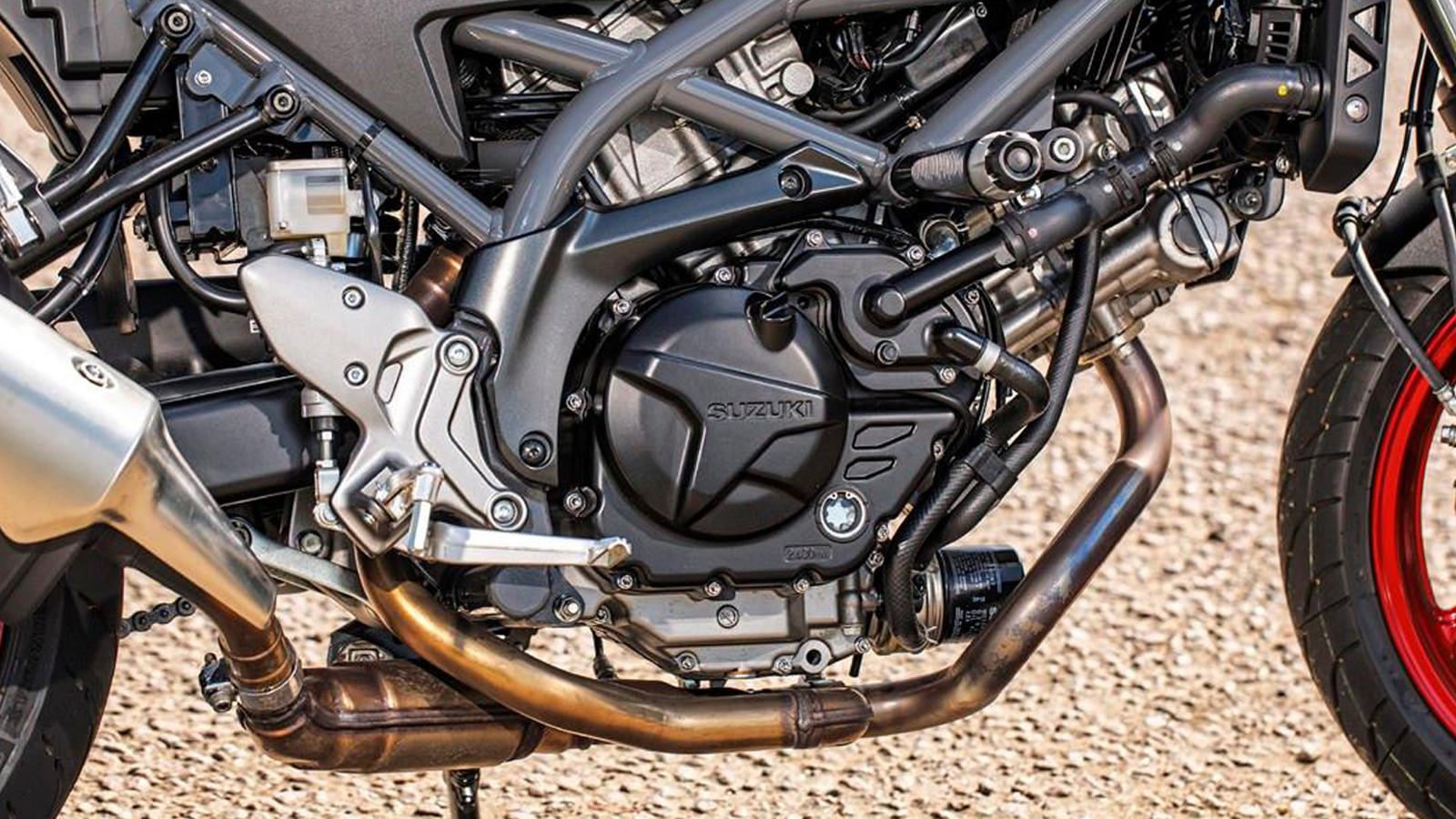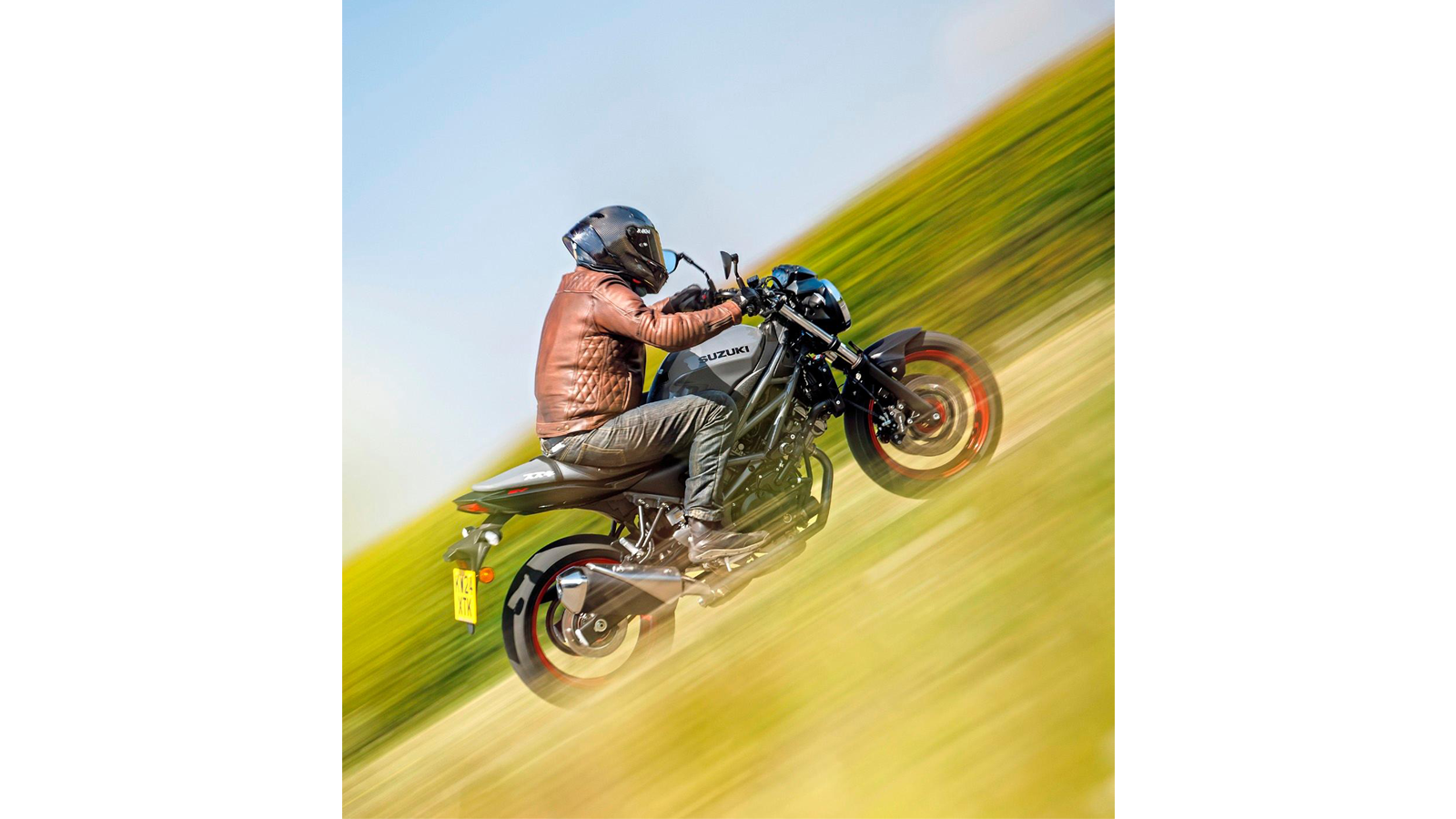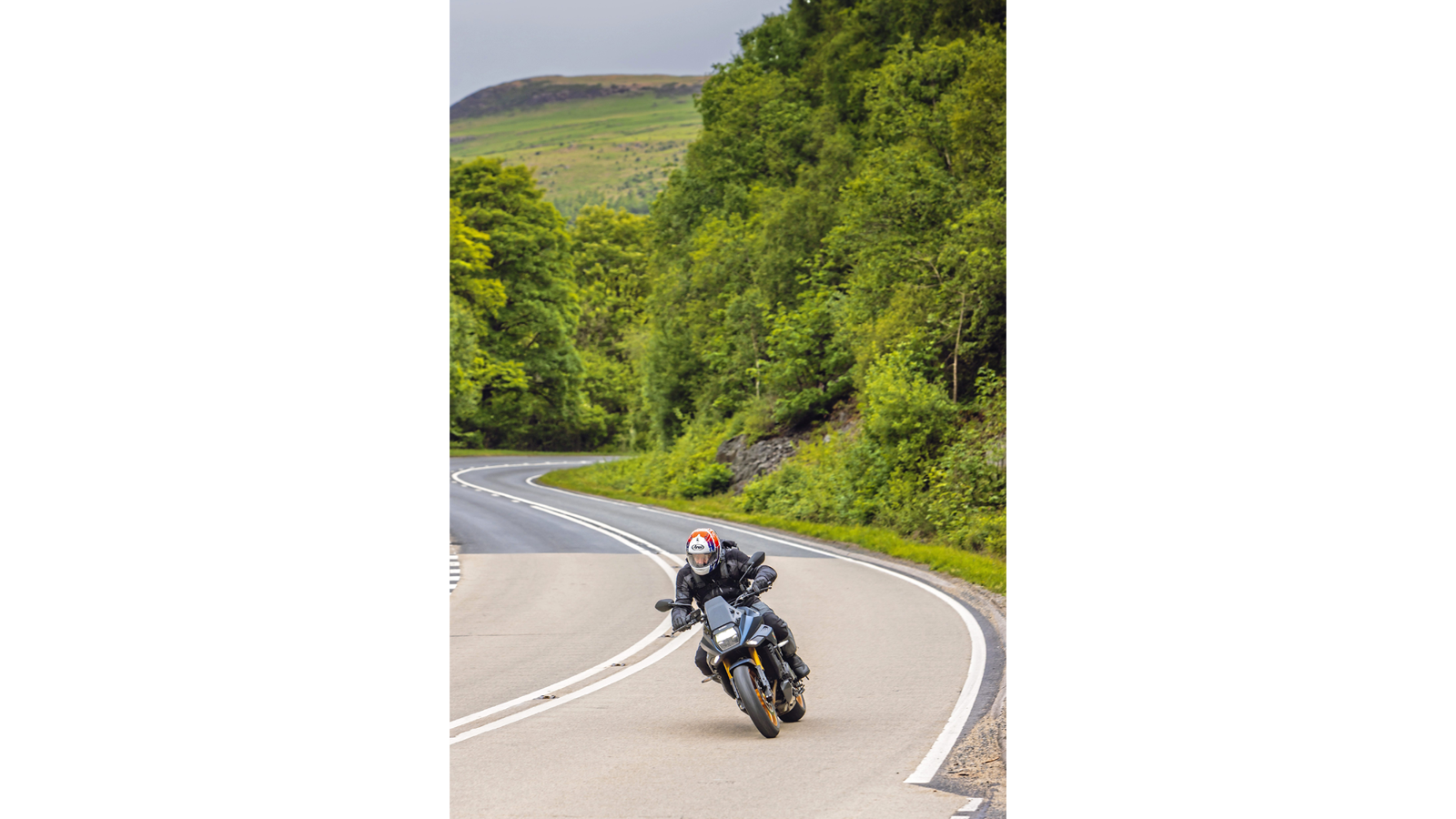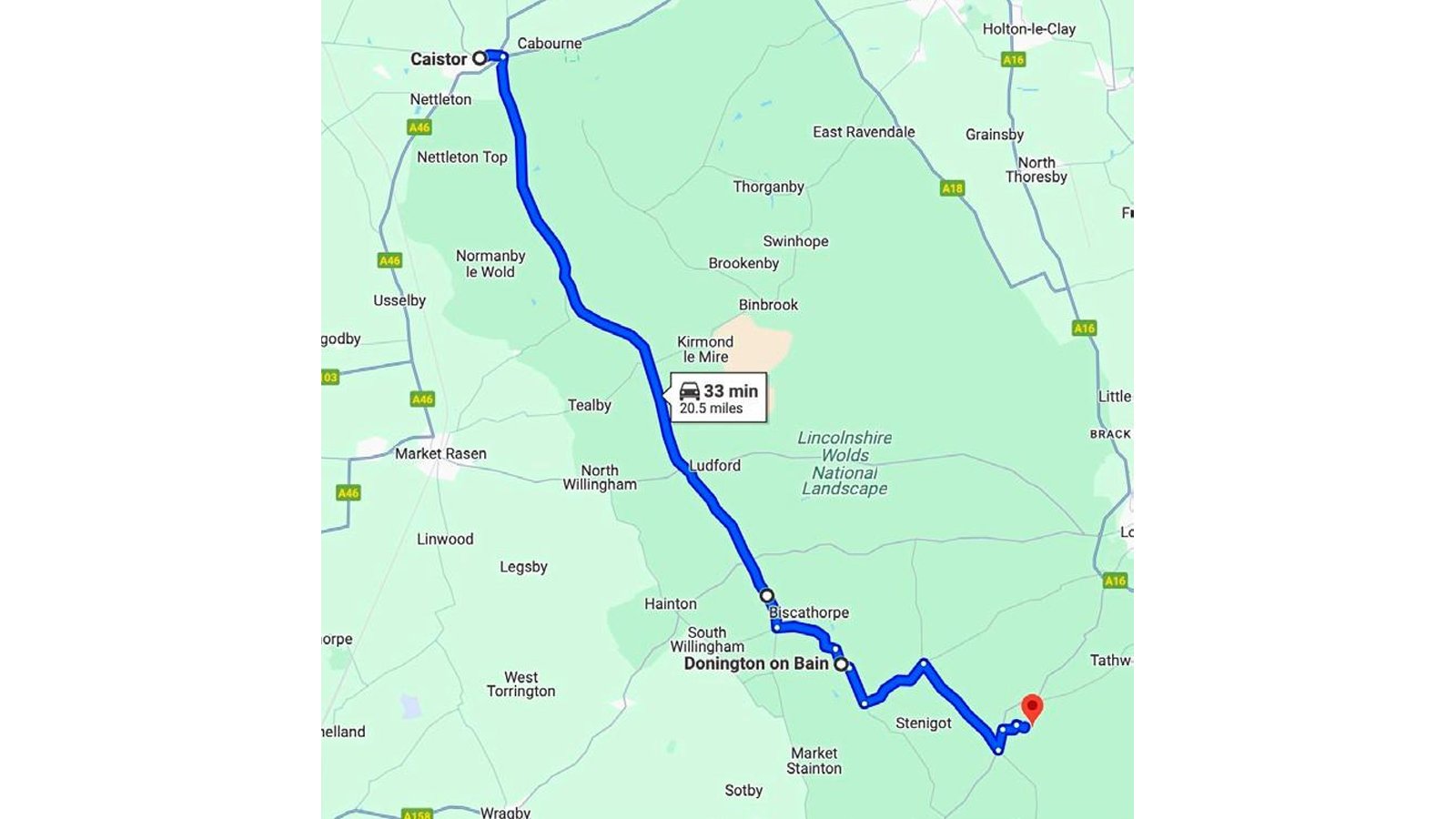A great route to ride... Take your Pickering
Best for Big skies across open moorland and big views of the North Yorks Moors
Length 55 miles
Route Pickering, Kirbymoorside, Hutton-le-Hole, Castleton, Danby, Whitby, Sleights, Saltergate, Pickering again
Love it because It’s a North Yorks Moors classic, with amazing views and a cracking ride across the moors
Take a picture The Hole of Horcum is pretty cool, but there are plenty of sights in Whitby
Stop for food Eskdale Fisheries in Sleights is an unassuming but does the best fish and chips in North Yorks
The year's best kit
RATED
We’ve been busy testing in the past year. Here is what we’ve found that works
WHAT THE TRIANGLES MEAN
For more than two decades, the RiDE Best Buy and Recommended triangles have stood for performance and value for money.
A RiDE Best Buy award means that a product has been tested and found to excel in its field, while offering exceptional value for money
A RiDE magazine Recommended triangle means a product has done an outstanding job at a higher price or an acceptable job at a much lower price.
DECEMBER 2024
DIY TRACKERS
Monimoto 9 £149
Very fast theft response and excellent tracking once triggered. Not cheap, but accurate enough to stand a chance of finding your bike quickly.
RECOMMENDED iTrack FS100 £65
JANUARY 2025
ON-BIKE TOOLKITS
Oxford Tool Kit Pro £39.99
Decent value at full retail – even better if you can find it discounted online. Add some Torx bits and keep it under your seat for reassurance.
Halfords Motorists Tool Kit £30 (£24 discounted)
May be large and heavy but it’s an incredibly comprehensive travel toolkit that is worth making the room for.
FEBRUARY 2025
BATTERY-POWERED HEATED GLOVES
Keis G901 Extreme £295 (inc batteries)
Excellent fit, very good on-bike comfort and feel warm at any speed, but not waterproof in our testing. Best for cold, dry rides.
Merlin Curborough £229.99
Sporty gloves that are comfortable and fit very well. Keep water out but need greater heating power. Best for warmer, wet rides.
MARCH 2025
SUB £500 TEXTILE SUITS
Rebelhorn Hiker IV £429.90
A great performance in most conditions, only limited by having no thermal lining. Great fit, comfortable, flexible, and excellent venting for warmer rides.
Oxford Calgary 2.0 £409.98
Just what you would expect from Oxford; warm, dry, comfortable, a good fit. The brand’s familiar quality. Vents offer useful airflow for warmer rides.
APRIL 2025
GROUND ANCHORS
Artago 61 £104.99
A very solid piece of kit, accepting up to a 20mm chain and resisting attack by hand and power tools for the greatest time.
RECOMMENDED
Oxford Beast £99.99
MAY 2025
CHAIN LUBES
Zing Chain Lube £4.99
Consistency and incredibly low price mean you can clean and reapply often and easily. A great option for day to day, year-round use.
RECOMMENDED
S100 Chain Lube White 2.0 £19.99
JUNE 2025
LIGHTWEIGHT ADVENTURE LUGGAGE
Kriega OS-Base £508
Not cheap, but the legendary Kriega quality and flexibility are present. Choose exactly the bags you need for your trip and away you go.
RECOMMENDED
Enduristan Blizzard 2 £530
Less flexible but still with expansion options, the Enduristan saddle bags are very stable. Pair them with a flexible bag for greater storage.
JULY 2025
WATERPROOF MESH JACKETS
Oxford Dakar D2D Air £169.99
The ideal accompaniment for an everyday or touring trip. High safety rating, good fit and decent waterproofing, it’s a genuine alternative to conventional textiles.
Furygan WB0 8 Vented+ £209.90
Full of well-designed features, waterproof when required and with a lovely fit, the Furygan ticks all the right boxes. If you want a sporty look, it’s a great option.
Merlin Shenstone II Cotec Air £299.99
If you own a retro bike and generally ride in the summer only, this is all the jacket you’d need. It’s worth the – admittedly high - price tag.
AUGUST 2025
PEAKED FLIP-FRONT HELMETS
Nexx X.Lifecountry £539.99
A great helmet that is comfortable straight out of the box. Despite being the heaviest, it wears it well and offers excellent vision with low noise.
Schuberth E2 £589.99
Excellent quality and features, and while the fit is very good the comfort can be tweaked through adjustable inserts to achieve day-long security.
HJC i80 £219.99
A very good proposition. Great value, huge vision and a top vent that genuinely keeps your head cool. Here as it is £300 less than the other two, but still good.
SEPTEMBER 2025
BIKE BOOTS YOU CAN WALK IN
Richa Andorra WP £189.99
A well-considered boot, the Andorra WPs feel very protective and comfortable, and delivered on their promise of waterproofing.
Sidi Nucleus GTX £199.99
OCTOBER 2025
LIGHTWEIGHT ALLWEATHER GLOVES
Oxford Omega 1.0 Dry2Dry £59.99
Not the most stylish glove here, but 100 per cent waterproof, comfortable, and the cheapest – meaning they’re a winning combination of price and performance.
RST Fulcrum CE £69.99
NOVEMBER 2025
30-LITRE RUCKSACKS
Oxford Atlas B-30 £169.99
A great multi-purpose rucksack, its versatility sets it aside from its competition and quality construction means it delivers where it counts.
Klim Arsenal 30 Backpack £200
DECEMBER 2025
DO-ANYTHING SPORTY BOOTS
Sidi Performer Gore-Tex £279.99
Stylish, lightweight, excellent fit and allday comfy, and totally waterproof in our tests – a winning combination. Expensive, but worth it.
Alpinestars SMX Plus v2 £449.99
Head into stores to grab your latest issue, or why not subscribe to RiDE Magazine and GET YOUR FIRST 6 ISSUES FOR ONLY £19.99
Q: Is the £3499 BSA Bantam 350 a biking bargain?
BIG QUESTIONS ANSWERED
Or does the ride match the low asking price?
Words Jon Urry Pictures Adam Shorrock
Definite shades of Triumph’s Speed 400 in BSA’s offering
US BRITS ARE keenly buying up small-capacity bikes that put price, ease of use and fun at the forefront of their design. After Royal Enfield led the way with the likes of the Interceptor 650 and Himalayan 411, machines such as the Honda GB350S and Triumph Speed 400 have picked up the baton and ran with it – topping the UK’s new registration charts. And now there is a new bike hitting the market ready to tempt riders – but this one carries an iconic name from yesteryear.
Following up on their reimagined Gold Star 650, which was released in 2023, BSA have introduced a Bantam 350 into their model range. A bike generally credited for getting post-war Britain moving again in the 1940s (BSA claim it’s still the UK’s bestselling bike of all time), the Bantam name carries with it a lot of prestige.
Built in India rather than the UK, does the new BSA Bantam 350 do its heritage justice and offer the same simple charms to a fresh generation of buyers as its forefather? Time to find out…
OPTIONS
The Bantam 350 comes in Avalon Grey, Firecracker Red, Victor Yellow, Oxford Blue and Barrel Black paint options, and you can choose an analogue or digital dash.
THE BRITISH LINK
Classic Legends (part of Mahindra) bought BSA in 2016 and brought the new Gold Star to market in 2022, 49 years after the last bikes from the Norton Villiers Triumph ownership period were sold. In 2021, BSA was awarded a £4.6 million UK Government grant to develop zero-emissions motorcycles under a low-carbon automotive initiative. A design facility near Coventry is within minutes of the original BSA factory.
STYLING
Inspired by the 1948 Bantam D1, nods to the past include BSA’s three-gun logo on the engine, a classic round headlight (all lights are LED), teardrop fuel tank and curved rear mudguard. The BSA logo is also etched on the exhaust end can and features on the tank and engine case.
ENGINE
The 334cc liquid-cooled single-cylinder engine features a four-valve head with double overhead cams and complies with Euro5+. Producing a claimed 29bhp with 22lb·ft of torque, it is built in India by BSA’s parent company, Mahindra. The Bantam comes with a three-year, unlimited-mileage warranty.
CHASSIS
The twin downtube spine frame is made from steel and the Bantam runs cast wheels with a 18in front (100/90) and 17in rear (150/70) shod in tubed MRF Zapper FX-3 tyres. Spoked wheels are not an option.
SUSPENSION AND BRAKES
Fairly basic in their design, the Bantam’s telescopic forks have gaiters but are non-adjustable while the twin shocks feature variable spring preload with five settings. The single front brake caliper is a floating two-piston unit built by ByBre; the rear a singlepiston caliper. Dual-channel ABS is standard.
Q: Is it too simple for having fun?
Definitely one to dodge potholes on
Given the right conditions, the BSA is undeniably fun to ride. On smooth roads the Bantam zips along merrily with a pleasingly gruff exhaust note that makes it sound like it has a larger capacity. On a ride like this the BSA is enjoyable and has a certain charm to it, which is enhanced by the name on the tank.
But should the road get uneven, the fact it’s built to a cost starts to hamper ride quality. Over smooth undulations the suspension damping is acceptable and allows the bike to track the road’s surface, but as soon as you hit a harsh bump the shocks throw in the towel and the kick is transferred through the bike. Harsh and unforgiving, your back takes the brunt of the impact. Unpleasant.
Front-end feel is an acquired taste, too. At slow speed the 18in front wheel is resistant to changes of direction. It’s not terrible, but there is definitely a reluctance to turn. There again, vintage bikes have similar quirks and limitations, so it could be chalked down as character.
Q: Does it have enough grunt?
Six-speed gearbox helps make the most of the gentle power
Where rivals including the Honda GB350S and Royal Enfield’s 350cc models use a basic air-cooled 2v SOHC engine, BSA have chosen a more modern liquid-cooled 4v DOHC motor – much like Triumph’s 400 models.
It’s a smart move, because this gives the Bantam enough poke to feel like it can keep up with modern traffic, whereas both the Honda and the Royal Enfields run out of steam at 60mph.
On the road, this extra grunt – and a six-speed gearbox – means overtakes or accelerating into fastmoving traffic requires far less planning, and results in safer manoeuvres.
Sprightly to accelerate and easy-going in town, importantly the engine still looks retro enough to be visually appealing thanks to cooling fins, yet packs performance that ensures you aren’t continually tap-dancing on the gear lever – which is good, because the gearbox is notchy and not as refined in its action compared to the Honda.
The fuelling is acceptable, the clutch light, and while the mirrors blur quickly, the engine itself isn’t unpleasantly vibey.
Q: Does it deliver value for money?
The BSA trumps even the top-selling GB350S’s bang for your buck
It’s undeniably remarkable value for money. After a deposit of less than £1000, you can have the £3499 BSA for £58.99 a month on a three-year PCP deal or £88.99 on HP over three years.
Its closest rival price-wise is Royal Enfield’s 350 range, but the Classic 350 is £4459, HNTR 350 £3899 and Bullet 350 £4629. Honda’s GB350S is £3999 and the Triumph Speed 400 is £5345. If you want a British-named retro, the BSA is the cheapest option.
The BSA’s 3500-mile service intervals aren’t too bad and the valve clearance check is every 7500 miles. We recorded economy figures of around 60mpg, which is pleasingly frugal, and insurance should be low.
Q: Does it feel and look like a £3499 bike?
It’s not a premium offering, but neither does it feel low-rent
“‘Good-looking – and the badge draws attention’”
From a distance it’s a good-looking machine – and the badge on the tank draws attention while you’re parked up.
BSA is a brand that seems to still hold affection and has escaped the damaging effect of repeated rebirths under poor management, as other British names have suffered.
Nice details add to the ownership experience, but some areas convey its budget nature, too. It’s the small details that UK buyers may feel disappointed by – for example, the centimetre of thread that pokes out beyond the nut on the front wheel spindle, the separate ignition and steering lock, or the poor finish on some fasteners.
But there again, it costs just £3499 – which is a bargain.
Q: How well made is it?
Jon, deeply offended by 10mm of protruding spindle thread
1 Engine
The 334cc single-cylinder engine is built for the Indian market (it is also used in a range of Jawa models) and, as such, is built to last. We wouldn’t expect any mechanical issues even living on its rev limiter, as Mahindra know their stuff, and it appears easy to work on. It has a three-year warranty.
2 Details
A few finer details let the side down. Examples include bolts that are a touch too long, areas where the paint doesn’t seem brilliant, and a slight flimsiness to a few of the plastics. There again, with a price tag so low – it’s £3499, remember – what do you expect?
3 Finish
We wouldn’t be surprised if corrosion starts to show in a few areas unless you regularly apply a protection treatment to the Bantam 350. Indianbuilt motorcycles are generally very sturdily built; however, the finish is never that great.
How much does it weigh?
Fully fuelled and ready to go, the Bantam weighs 192kg, which is 7kg more than the 185kg it is claimed to weigh when 90 per cent fuelled. Our bike had some extras fitted, too. It’s likely their claim is accurate.
Q: What are the best options and add-ons?
Bar-end mirrors £149
As standard the Bantam comes with ‘Mickey Mouse ear’ mirrors; the accessory bar-end mirrors add a degree of style – although they do catch annoyingly on your hands, which is worth bearing in mind…
Crash bars £159
While not particularly attractive, they are sturdy and may be a good addition if you’re returning to two wheels, or a newer rider. Quick to remove once you’ve gained confidence.
Bridgestone BT46 From £250
The MRF Zapper FX-3 tyres are hard-wearing but not particularly confidence-inspiring. Bridgestone’s BT46 will offer a more confident feel across the board, particularly in the wet.
Q: What will it cost to run?
WHAT ARE MY OPTIONS?
£3499 On-the-road cash price
£58.99 PCP x 36 £965 deposit, 4000 annual miles, £1243 final payment, 9.9% APR
£88.99 HP x 36 £920 deposit, 9.9% APR
HOW MUCH TO INSURE
£295.43 Fully comp, £350 excess
£240.36 TPF&T, £350 excess
2025 model, worth £3499. Based on a 52-year-old male engineer, married, licence held for nine years, eight years’ NCD, no claims or convictions, for social, domestic and pleasure use. Bike is garaged with postcode WA14 1NU and annual mileage 5000 miles. Quote supplied by www.MCNcompare.com in November 2025.
500 miles Replace oil and filter, basic check and lube. £100
3500 miles/annual Replace oil and filter, general inspection and lube. £130
7500 miles Replace oil and filter, change air and fuel filter, valve clearance inspection. £250
Additional Change brake fluid at 11,000 miles and coolant and fork oil at 22,500 miles.
WHAT IF I DROP IT?
Q: How easy is it to work on?
The BSA is pleasingly simple and feels the kind of bike that, valve clearances aside, you may be tempted to work on as everything is very accessible.
A lock on the side pops the saddle off using the ignition key, and beneath is the battery and fuse box, meaning it takes seconds to wire in a 12V socket for heated clothing or a USB charger. That said, there is no underseat storage, which is a shame.
A limited toolkit comes included. Should you wish to adjust the chain you may feel the need to buy a paddock stand as there is no centrestand – either as standard or an optional extra.
Very little bodywork, and relatively simple construction overall
Q: What power does it make?
The BSA was never going to cause much of a sensation on the dyno and its genuine power figures of 25bhp with 20lb·ft of torque are roughly what you would expect, considering the claimed values are 29bhp and 22lb·ft.
Usable torque is from 3000-6000rpm and the drop from this point onwards shows little point exists in revving the engine. This motor is designed to live in its midrange and plod along merrily, which suits the Bantam’s character and expected audience perfectly, and explains why the gearing is quite short to help it stay in this range.
Q: Is it a good bike for riding as a pillion?
‘Keep the speed down and it’s enjoyable’, says RiDE’s Caroline
“From a pillion’s perspective, the BSA works well – as long as you stay within a certain window. Stray outside of this area and it quickly becomes tiresome, but that’s to be expected when you consider its engine size and performance.
“On a sunny day and with a rider who is looking to potter about between 50mph and 60mph, the Bantam is a real delight to be on the back of. The seat is well padded and I like the fact the pillion pegs have small heel rests, which is a nice touch. It is a bit of a shame that there is nothing for the pillion to hold onto aside from the rider; however,
I suspect it won’t be long until an aftermarket company makes a pillion grab rail to fit - if there isn’t one out there already. That said, the BSA doesn’t threaten to throw you off the back with its acceleration!
“As the Bantam is very low, it is easy to get on and off (even if you are short in the leg) and the rider reported that the bike’s light weight and low seat height made it easy to support the extra weight of a passenger when stationary. On a bike aimed at older riders, this is important.
“Once moving, the gentle acceleration was reassuring and the suspension seemed quite good, although there is a permanent vibration from the engine or tyres that was mildly annoying at low speed and horrible at motorway speeds. And I was subjected to quite a lot of buffeting at high speed, which was strange. You really don’t want to be on the back of the BSA at 70mph – it’s very unpleasant.
“For me, the BSA is one of those bikes that you throw on a pair of riding jeans and leather jacket and hop on the back to pop to a local pub or the seaside. Its gentle speed means you are never intimidated or worried by its acceleration, and that makes the ride more enjoyable as you can relax and watch the world go by.”
CAROLINE BARRETT
It’s no his ’n’ hers grand tourer, but acceptable for gentle two-person jaunts
THE FACTS
BSA Bantam 350
Engine 334cc DOHC 4v single, l/c
Power 29bhp @ 7700rpm (claimed) 25bhp @ 7600rpm (tested)
Torque 22lb.ft @ 6000rpm (claimed) 20lb·ft @ 5800rpm (tested)
Transmission Six-speed chain
Frame Twin downtube steel spine
Front suspension Telescopic forks, non-adjustable
Rear suspension Twin shocks, adjustable preload
Front brakes 320mm disc, two-piston caliper. ABS
Rear brakes 240mm disc, single-piston caliper. ABS
Front tyre 100/90 – 18
Rear tyre 150/70 ZR17
Wheelbase 1440mm
Rake/trail 29°/NA
Fuel capacity 13 litres
Seat height 800mm
Weight 185kg (claimed, 90 per cent fuelled) 192kg (tested, fully fuelled with extras).
Rider aids ABS
Q: What are its rivals?
Honda GB350S - £3999
> 21bhp > 21lb·ft > 178kg (claimed)
A huge sales success in the UK during 2025, the GB350S is powered by a 348cc SOHC 2v air-cooled single-cylinder engine that features traction control as standard as well as an assist and slipper clutch. Easy-going and fun to ride, the GB’s retro styling gives it subtle appeal.
Royal Enfield Classic 350 - From £4459
> 20bhp > 20lb·ft > 195kg (claimed) Royal Enfield’s 349cc SOHC 2v air-cooled single retro harks back to the firm’s rich heritage – and this small-capacity motor is powering their revival. As well as the Classic, there is a Bullet 350, modern-looking HNTR 350 and Meteor 350 cruiser, all based around the same engine platform.
Triumph Speed 400 - £5345
> 40bhp > 28lb·ft > 170kg (claimed)
More a modern naked in its styling and attitude, the Speed 400 was the UK’s bestselling bike in 2024. Powered by a liquid-cooled singlecylinder motor, the Speed 400 features traction control and is a more grown-up machine. Like the Bantam it’s built in India, in a collaboration between Triumph and Bajaj.
A: ‘It’s cheap and fun – and it has the right name on the tank’
Its link to the past is tenuous, but it’s a great bike in its own right
There is a lot to really like about the BSA Bantam 350, and if you are after a relaxed machine for pottering about on, it delivers in terms of value for money and performance.
It’s the kind of bike that riders can stick in their garage and know that it will start on the button when the sun is out and the mood takes them to go for a ride. And at £3499, you don’t feel like you’re wasting money if you don’t use it as your daily runaround.
But is it true to BSA’s heritage? The Bantam was always a cheap and cheerful form of transport, and on that front this reimagined machine is true to its forefathers. But there is no getting away from the fact it is an Indian-built bike that has basically had a few BSA logos stuck on it, and a rear mudguard and exhaust added, to make a ‘British classic’. When you look at the Jawa 42 FJ and the BSA next to one another, this fact is very apparent and does take the shine off it slightly.
Yes, Triumph’s Speed 400 models are built by Bajaj in India and Royal Enfield’s models are built in India, but they aren’t repurposed models – they are a Triumph and a Royal Enfield only.
Will this bother potential BSA owners? I suspect not, because the fact BSA is on the tank, you get a three-year warranty and the bike costs just £3499 is incredibly hard to ignore.
NEXT MONTH... KTM 390 Adventure R: is it the machine to bring KTM back from the brink?
Head into stores to grab your latest issue, or why not subscribe to RiDE Magazine and GET YOUR FIRST 6 ISSUES FOR ONLY £19.99
Is India the next motorcycling powerhouse?
RiDE INVESTIGATES
China’s motorcycle industry has been making headlines but India is taking a quieter route to dominance, says our industry expert
Words Ben Purvis Pictures Bauer Archive
Royal Enfield sold one million bikes last year
IT’S EASY TO look at the leaps being made by the Chinese motorcycle industry and conclude that it will emulate the success that saw Japan rise to dominance in the 1970s. But the real threat to the two-wheeled establishment may come from India’s vast bikemaking industry.
The contrast between the approaches of Chinese and Indian manufacturers is distinct. China is rushing into direct competition with the established brands, with the likes of CFMoto, QJMotor, Voge and Kove launching increasingly convincing and technologically advanced alternatives. It’s an approach that, like the Japanese motorcycling revolution 50 years ago, asks customers to abandon brand loyalties and take a risk on a relative unknown with higher levels of equipment at a lower price.
By contrast, India’s motorcycle companies have grown quietly in their home market before embarking on a path towards global expansion based on buying or partnering with brands that already have a strong following and familiar name. Bajaj isn’t India’s biggest bike brand, but its expansion most clearly illustrates the strategy. A long-term shareholder in KTM, for which it already manufacturers single-cylinder models up to the 390 range, Bajaj provided an €800 million (£694 million) bailout to KTM following the Austrian company’s woes. That loan is due to be converted into shares, following regulatory approval, giving Bajaj a controlling stake – and they have expressed a desire to shift more KTM production and R&D to India.
“‘Subtle approach may make it dominant force’”
Bajaj have made the 390 Duke for years. Now they control KTM
Bajaj is also Triumph’s Indian partner, manufacturing their 400cc single-cylinder bikes: the Speed 400, Scrambler 400 X and XC; and the India-only Thruxton 400 and Speed T4. Those models have been Triumph’s biggest sales success in their history, so we can expect more to follow.
Furthermore, Bajaj has rights to the dormant Excelsior-Henderson brand, giving it a famous name to use if it wants to build a Harley-Davidson rival.
Speaking of Harley, Hero MotoCorp has a lower international profile than Bajaj but it’s India’s biggest bike maker, having sold 5.9 million bikes last year and with the production capacity to make 9.4 million. Most of those sales are in India, with the focus on its home market, as well as exports to Asia, Africa, Latin America and the Middle East.
But Hero also partners with Harley-Davidson under an agreement that not only lets it sell the US brand’s bikes in India but also to develop its own Harley-branded machines – the first being the single-cylinder X440, with more due in 2026.
Then there’s TVS, which made around 4.7 million bikes last year and claims to be the world’s fourth-largest two-wheeler manufacturer. TVS manufactures BMW’s G310 models, which are also the basis of its own TVS Apache RR310 and RTR310, and it co-developed and manufactures the BMW CE 02 electric scooter.
For 2026, TVS also takes on responsibility for making BMW’s upcoming F450 twin-cylinder model range – and it already looks set to be a sales hit.
TVS also owns Norton, with plans to launch six new models over the next three years and to expand the British brand’s reach to the US, Germany, France and Italy – as well as India.
The idea of using a famous British brand means TVS is following in the footsteps of Royal Enfield, part of India’s Eicher Motors and a company that’s grown rapidly in recent years. While 90 per cent of the one million Royal Enfields made last year were sold in India, the remaining 100,000 exports represent an impressive international reach.
Rival Mahindra is taking the same approach – albeit at a much smaller scale – with its majority ownership of Classic Legends, the parent of the recently revived BSA, Jawa and Yezdi brands.
With challenges from both India and China, the threat to the status quo for both European and Japanese motorcycle companies is very real – but India’s more subtle approach could make it the dominant force in motorcycle manufacturing in the future.
HOW INDIA CAN HELP HARLEY-DAVIDSON
Hero already make the X440 – and more H-Ds are coming
Harley-Davidson is going through a rough time. Sales are plummeting – just over 150,000 bikes were sold in 2024, the lowest since 1998 and well under half the 344,000 sales achieved at their peak in 2006 – and the company has revealed that part of the solution will be a sub-$6000 (£4400) machine called the Sprint that’s joining the range for 2026.
The name harks back to the Aermacchi Harley-Davidson Sprint models of the Sixties and Seventies – foreign-made, singlecylinder machines that filled the same slot in the range – and there’s a strong chance the new bike will be built in partnership with Hero in India.
While Harley has a partnership with QJMotor, making the X350 and X500 twins for Asian markets, Hero’s Indian-built X440 is a closer rival to the likes of the Triumph Speed 400. Hero has also extended its arrangement with Harley to develop more bikes for Indian and export markets.
Head into stores to grab your latest issue, or why not subscribe to RiDE Magazine and GET YOUR FIRST 6 ISSUES FOR ONLY £19.99
Time to sample the full SP
LONG-TERM TEST BIKES
We reckon the Hornet SP is one of the best-value bikes in UK showrooms. But what will it be like with time and miles under it? Let’s find out…
SP’s proving good fun on sunny autumn days Pictures Adam Shorrock
UPDATE 01
2025 HONDA CB1000 HORNET SP - 2785 MILES
LAST MONTH, WE named the Hornet SP as the best-value new bike in UK showrooms, so in the name of journalism (and a love of fast, simple motorcycles) we’ve grabbed one for a few months to see how it stacks up.
Earlier in the year we ran a base-model Hornet and it was an interesting experience. To begin with, I thought it was utterly brilliant. A grand cheaper than the SP, it handled almost as well and had a little bit more bottom-end power.
But time and miles changed my view. The main issue was the rear suspension. A Showa emulsion-style shock similar to a CB750 Hornet’s, it isn’t fully adjustable and is set soft as standard. Initially it felt good, but as the miles wore on and the damping fluid deteriorated, so did the bike’s behaviour. I’m 90kg in my kit and I overwhelmed it.
As the miles wore on, there was more weaving, more mid-corner wobbles, and while I dialled some of it out with extra preload and rebound, it still really didn’t feel appropriate for a 150bhp performance motorcycle. And with only £1000 between the base bike and the SP, any rear shock upgrade would bring the price perilously close to the SP.
That golden shock is worth its weight in…
So, while the base Hornet has that Showa shock, the SP boasts an Öhlins TTX. Typically a £1000£1500 upgrade, the difference in control, ride and mid-corner feel is stark – especially compared to our 4000-mile basemodel test bike. Although static ride heights are similar between the two bikes, when under load mid-corner the SP feels higher at the rear – an d that steeper geometry makes it feel more poised and eager to hold a line. You especially notice this on corner exits, where it feels more stable and gives you the confidence to get on the power harder.
Our test bike came to us with 2500 miles on the clock and is typical of the handful of SPs that are now coming onto the used market for about £9k. Just like our base model, it does have the patina of miles and age, but the engine feels smoother and a tad more responsive, while the Brembo brakes are a modicum stronger than the other SPs I’ve ridden. I suspect it is down to unglazed pads, even if there still isn’t a clear benefit over the base-model’s Nissin four-pots.
“‘The SP’s proven to be a great package over the past month’”
Brembo Stylema calipers are good – so long as they’re used hard
The SP’s proven to be a great package over the past month and 400 miles of autumn, and suits my riding style well. Revelling in the dying embers of an Indian summer, it’s great at sniffing out grip and imbuing confidence - OE Bridgestone S22s have never felt so good, and just surfing the midrange is a perfect way to make serious progress.
It’s easy to see why owners have loved Hornets so much.
I definitely prefer the SP to the base model as its level of ability is a tad higher, with no obvious drawback. So long as you like matt black paint, that is – it’s the only option for 2025.
This time of year I always feel compelled to make the most of every dry or sunny day and lift my mood at a time that can be slightly depressing as a biker. Next month we’ll try to make it a bit more practical and a better all-rounder. Hopefully the wonders of global warming will mean it’ll be mild, grippy and salt-free so I can make the most of it.
MATT WILDEE
WHAT DEALS CAN YOU GET?
When we first reviewed the Hornet in February, there was a five-month waiting list for an SP. Plumping for the base model was an easy choice.
But those days are over. Not only are bikes in showrooms, but there are strong discounts, too. Base Hornets are as low as £8000 new (and ultra-low demo models for the same), while new SPs can be had for £9495 – a £600 saving. At these prices, a base model is very attractive, but we’d still pay extra for an SP.
The deals are out there and you don’t have to look far
THE FACTS
£10,099
155bhp
212kg
MILES THIS MONTH 400 MILES
FUEL CONSUMPTION 42.6 MPG
COSTS £52.96 (Fuel, 28.94 litres @ £1.36/litre)
Head into stores to grab your latest issue, or why not subscribe to RiDE Magazine and GET YOUR FIRST 6 ISSUES FOR ONLY £19.99
A great route to ride... Fishguard figure of eight
Best for Zany B-road loop antics across hills, moors and farmland in the tip of Pembrokeshire, starting and finishing in Fishguard
Length 60 miles
Route Fishguard, Greenway, Maenclochog, Narberth, Haverfordwest, Greenway, Eglwyswrw, Fishguard
Love it because It’s off the beaten track, not much traffic, and plenty of opportunity to enjoy a spot of light two-wheeled entertainment.
Take a picture at The 100ft-high dam at Llys-y-frân Reservoir.
Stop for food at The Withybush Café at Withybush Roundabout, Haverfordwest.
A great route to ride... About Anglia
Best for Fast and characterful roads taking in the rural charm of Norfolk and Suffolk.
Length 113 miles
Route Thetford, Scole, Harleston, Halesworth, Beccles, Ditchingham, Poringland, Trowse Newton, Wymondham, Watton, Thetford.
Roads A1066, A143, Harleston Road, Laxfield Road, B1116, B1117, Walpole Road, B1123, B1124, A145, A146, A143, B1332, A47, A11, B1172, Fairland Street, Wymondham Road, B1108, Thetford Road, A1075.
Love it because South Norfolk and North Suffolk have a charm all their own thanks to the Broads and numerous picturesque market towns.
Take a picture at Anywhere near the Broads, especially early morning when mist often hangs across the landscape.
Stop for a cuppa at The Single Café in Diss. Biker friendly and known for its all-day breakfast and snacks.
Head into stores to grab your latest issue, or why not subscribe to RiDE Magazine and GET YOUR FIRST 6 ISSUES FOR ONLY £19.99
‘Brilliant value all-round textile suit’
5000-MILE TEST
After a year’s use, the ARMR jacket and trousers are a lowcost triumph of modern motorcycle kit, says Simon H
Pictures Jason Critchell, Simon Hargreaves
ARMR KUMAJI 3.0 £169.99 (JACKET) £129.99 (TROUSERS) www.oxfordproducts.com
THE FACTS
USED BY Simon Hargreaves
USED FOR 5000 miles
USED ON Adventure bikes
TOTAL MILES 5000
THE CLAIM
“The Kumaji 3.0 is the ultimate adventure companion, designed to take on whatever challenges come your way. Its DryGuard waterproof construction ensures a safe and dry ride, no matter the weather conditions. With a multitude of strategically placed vents, you can stay cool and comfortable during even the most intense riding. CE knee and hip protectors come as standard, complementing the garment’s CE AA rating.”
DUAL PURPOSE
Sleeve zip acts as fastener and vent at the same time (although we would swap the silicone tag to the front zip).
WAIST ADJUSTMENT
Standard waist buckles offer a good range of adjustment. Don’t look like they’ll break anytime soon.
TRIPLE VELCRO
Three Velcro patches on the trouser leg bottoms is more convenient than a zip, but slightly less elegant.
As someone who regularly pops popper-only waist buttons, for SiH a hook system is gold dust
The basic spec of the Kumaji is an AA-rated 600D polyester outer shell with a proprietary waterproof fixed membrane, CE level 1 armour, zipped inner thermal liner, two zipped and two Velcro jacket and trouser pockets each, and zipped sleeve, back and chest air vents (very welcome this summer). A back protector is extra.
Fit is good – so good that I’ve actually slept in it – while the sleeves are a decent length and it’s snug across the shoulders but not tight. I ordered the suit in a 2XL and the jacket is a bit short, but the matching trousers are a bit too baggy; XL trousers would be a better match for me (worth bearing in mind if, like me, you have skinny legs, no arse, a beer belly and weedy shoulders). And I need braces because the zip-together is too long to be useful.
Neoprene neck is nice, but the popper is fiddly and too tight. Velcro is better
The poppered neoprene collar is a bit too tight to fasten onehanded – why do I always wait until I’m on the move to fasten it? But the suit material feels supple and durable, the Velcro cuff flaps are tough, the silicone zippers feel solid, and the suit survives short rain showers without leaks. A prolonged downpour defeated it in the usual crotch and chest areas, but I was nearly home anyway.
Warmth is okay but I wouldn’t rely on it in winter, but on chilly days I wear a heated liner instead.
Jacket and trousers zip-together looks short, but it doesn’t actually support the trousers
THE WEAR AND TEAR
Almost none. No fraying, no zip problems and the Velcro’s in good nick. A tiny section of stitching has failed, but it’s in a non-critical area and can’t spread (see image, left).
After a year of wearing the suit in all weathers, the most it needs is a bit of a wipe-down.
Stitching on this flap has failed, but we have no idea why it’s there. It doesn’t hold anything together
Head into stores to grab your latest issue, or why not subscribe to RiDE Magazine and GET YOUR FIRST 6 ISSUES FOR ONLY £19.99
Q: Is the latest Triumph Speed Triple the super-naked for proper road riders?
BIG QUESTIONS ANSWERED
It’s more powerful and cleverer than before, but does it really work better where we need it the most?
Words Simon Hargreaves Pictures Adam Shorrock
A recklessly fast British heavyweight with 30 years of bad behaviour. And the new Triumph
REMEMBER THE TRIUMPH advert with a black, muscular naked bike guarded by a Rottweiler, unsure whether to clamp its jaws around the front wheel or cock a leg on it? The original Speed Triple was launched 31 years ago, at the start of a model evolution that saw it pass through a streetfighter phase in the late ’90s into the super-naked class by the end of the 2000s.
But whatever Triumph marketing people said, truth is none of the iterations were off-the-leash intimidating. The Speed Trip doggedly possessed a user-friendly side beloved by all styles and genders of rider. More of a Labrador retriever kinda bike.
In 2021, the RS moved the Speed Triple into hyper-naked territory. However, its highperformance engine, suspension set-up and committed riding position made it less fun and forgiving on the road. What was once an all-round, big-bore
naked was too single-minded in pursuit of horsepower and lap times. We weren’t fans – it only really worked once you backed off the power and the suspension.
But Triumph updated the RS for 2025. It’s the most powerful, most advanced Triumph ever built – and when editor Matt rode it in a Speed Triple anniversary feature (RiDE, August), the signs were good. So, let’s see how it fares in biking’s most thorough road test.
RIDING POSITION
The 2021 bike’s low bars placed a lot of rider weight over the front end and always felt very committed, like you’re permanently waiting for the flag to drop. Pegs and seat position stay the same for 2025, but one-piece bars are 10mm wider and 7mm higher.
EQUIPMENT
Next-level electronic riding management and, now, electronic suspension set-up includes independently variable wheelie, engine braking and braking slide control, as well as existing cruise control and the usual Bluetooth integration. Heated grips aren’t standard, but Triumph’s latest quickshifter and keyless ignition are.
THE COSTS
The 2025 Speed Triple RS starts at £17,495 for the base bike in black, £1700 more than 2024 – thanks in part to the added cost of semi-active Öhlins and associated software, and new steering damper. Red/Granite or Yellow/Granite add £400, heated grips are £220, and a fly screen and visor add-on are £152 and £112, respectively.
SUSPENSION
Out goes 2021’s stiff Öhlins set-up, and in come their latest Smart EC3 semi-active springs with electronic set-up options for fine-tuning, or the option to disengage the semi-active bit and have them act as conventional forks and shock, but still fully adjustable and customisable per riding mode. Also new is an adjustable Marzocchi steering damper.
WHEELS, TYRES AND BRAKES
No messing with the sporting intent of Brembo Stylema four-pot calipers on 320mm discs, with their Multiple Click System span lever and three-way ratio adjustment. Tyres switch from Metzeler Racetec RRs to the equally trackflavoured Pirelli Diablo Supercorsa SPs.
ENGINE
The 1160cc, 12v, 120° inline triple has been lightly modified to meet Euro5+, with a freerflowing exhaust, plus intake and fuelling mods hence the new dual-exit wheelie-bin… sorry, ‘end can’). Also a rebalanced crank for smoother low-down running and fewer vibes. Power is up a claimed 3bhp to 181bhp at 10,750rpm and torque up 2lb·ft to 94lb·ft.
Q: Is it more fun or more fearsome?
It’s fun on British B-roads without being too crazy…
Definitely more fun – the 2025 Speed Triple is delightfully rapid without being crazily rabid (unlike some other hyper-nakeds). While the engine refinements are subtle and you’d need to zoom in on the dyno graph to spot the extra power and torque, the greater difference is the way the motor’s performance blends with the rider’s inputs. It’s smoother, throttle control more balanced, and power delivery more rounded than ever.
Even the vibes – a patch of tingles when you bat the throttle open from 3000rpm in top – are more like a massage chair than mechanical grumbling.
But it hasn’t gone soft. Flick down the Triumph’s exemplary quickshifter and dip into the Speed Triple’s midrange, and all the old guff about a triple being a great compromise between a twin and a four makes sense. It’s magnificent to gun it, mid-shifting between 5000rpm and 6000rpm in a series of staccato raps. You want to go use the engine again and again because it’s so wellengineered – for fun.
Q: Is the riding position better?
Riding position is perfect for getting stuck in
Very much so. Like the engine changes, it’s a subtle shift on paper – the pegs and seat are in the same positions as before (seat vinyl finish is upgraded from a dimpled effect that looked like a shower mat to a smoother, more premium look). But the bars are 10mm wider and 7mm higher than the old bike.
Sounds like nothing, and cynics (who, me?) may dare suggest the only reason Triumph raised the bars is to gain a few extra millimetres of clearance for plumbing the cables at the top of the longer, semi-active Öhlins forks.
But let’s pretend it was for our benefit – and it makes a difference, reducing load on the wrists and the tendency to lock arms, instead suiting a gentle bend in the elbows and generally making the Triumph’s top half a more civilised, less aggressive place to be, either in town or on the motorway. It’s now a perfectly poised, semi-sporty position, but not demanding at all.
Q: How good is the new suspension?
Third-gen Öhlins semi-active shock is very good
Stunning. Set up as standard, in Road mode, the ride quality is plush and composed. There’s no gritting teeth for crashes into ruts or ripped tarmac; just a genuinely glowing sense of control and calm.
If you want to tailor the settings, the scope of adjustment from the dash is extreme with 10 steps across seven parameters. You can feel the difference, too.
Or, you can switch semi-active off and run the springs as passive suspension with 23 ‘clicks’ per setting (and it’s still brilliant). Or, you can ignore all that and use supplied Rider mode settings with the set-up Triumph and Öhlins think works best.
Q: Has it got too much technology?
Simple and clear, but minor annoyances
No, because it doesn’t get in the way of riding enjoyment. The only possible source of complaint is that traction control and wheelie control, although both independently adjustable, are both either on or off. So you can’t have traction control still active while happily hoisting third gear monsters – hardly an imposition for most of us.
In the meantime, in Sports mode the Triumph will skim its front wheel 6in above the tarmac when you button it on corner exits, letting the front wheel countersteer then flick straight when it meets the road again – stability guaranteed with a new, adjustable Marzocchi steering damper.
Four riding modes – Sport, Road, Rain and Track – cater for most scenarios, with each customisable for traction, ABS, throttle map, suspension mode, engine braking and wheelie control. Two custom modes – one road and one track – allow further individual set-up.
All this is controlled via Triumph’s usual mini-joystick and dash interface, which is intuitive and easy to navigate. Cruise control is a welcome addition, but it’s still annoying to not have a trip reading and remaining range on the dash at the same time.
“‘The tech doesn’t get in the way of riding enjoyment’”
Lots of fun factor despite all the gizmos
Q: How much does it actually weigh?
On our scales fully fuelled, the RS has a 51/49 front/rear weight distribution and weighs 203.5kg, 4.5kg up on Triumph’s kerb claim.
Q: How well made is the Speed Triple?
Looks striking, but Simon’s not sure about that end can…
Engine
Modern Triumphs have an excellent reliability record overall, and the 1160cc motor – launched five years ago, and with a similar T-plane unit to the Tiger 1200 – has done nothing to blemish it with no mechanical recalls issued. And with a 10,000-mile service interval and 20,000 for valve clearances, all you have to do is keep it topped up with oil.Finish and details
New touches include a black finish on the milled handlebar clamp and top yoke to unify the cockpit view, while details like sculpted Brembo brake and clutch levers, aluminium numberplate hanger and arched alloy pillion footrest hangers remain. But the front mudguard has switched to plastic from carbon fibre on the old RS.Looks
Most of the looks – italic headlights, bolted aluminium subframe (now black, not silver), waisted seat unit – remain. But we have to talk about that end can. Still a single-sided twin exit, the design is shorter but deeper – Triumph say it centralises mass, which it will do to marginal effect, but the real reason must be related to Euro5+ approval.
Q: What are the best options and add-ons
Triumph heated grips £220
Triumph’s own-brand heated grips have integrated controls and wire through the bars for a sleek look. They work well and are a good resale feature.
Triumph fly screen £152
Handy for taking the edge off headwinds. Textured black infill complement the colour-coded screen with no visible fixings. Optional visor (pictured) is £112 extra.
Triumph 10-litre tankbag, £215
A bespoke product for the Speed Triple, is waterproof, quick-release and should reduce windblast. Can be combined with matching tailpack.
Q: What will it cost to run?
Q: How easy is it to work on?
The Speed Triple comes with a seat cowl, but a pillion pad is optional. Both are removed using a Torx key, located on the inside of the coolant expansion tank cover (there’s also an Allen key, for emergency access to the keyless filler cap in the event of it not opening). The unadjustable rider’s seat is bolted down with two Allen bolts.
The battery lives under the seat, but because the positive terminal is obscured by the fuel tank flange, an electrical bus runs across the battery to allow easy access – a nice touch. The 12V socket on the right side of the bike, just above the clutch basket, can be used to reverse-charge the battery.
Its naked nature means home servicing is quick and easy; most will go to dealers for the next decade, though.
You might be able to store a chopped Pepperami under here
Q: What power does it make?
The 2025 Speed Triple makes 169bhp at 10,900rpm against a claimed 181bhp at 10,750rpm. A fair chunk to lose, especially as other Triumphs tested recently have been close to their claimed figures.
Torque is the same; we measured 90lb·ft at 8700rpm against Triumph’s claimed 94lb·ft at 8750rpm.
But when we plotted the curve over last year’s Speed Triple tested on the same dyno, they were almost identical, suggesting this isn’t an anomaly. And it’s certainly a great-looking pair of curves – linear, no bumps or dips, just a steady ramping up of performance.
Q: What’s it like to ride as a pillion?
RiDE veteran Caroline Barrett finds out how the RS fares two-up
Not much to hold on to, but there is a smile on Caz’s chops
My most recent pillion ride was on the back of my partner’s Yamaha MT-10, and I’ve been on the back of plenty of sportsbikes.
The MT-10 has somewhere to hook my fingers, but there’s nothing like that on the Triumph. I reached down to see if I could grab onto anything or wedge my fingers anywhere, but there’s nothing, not even an indent.
Obviously I knew the seat was going to be high, but when I first went to put my foot up on the pillion peg, I was nowhere near it. I’m 5ft 5ins, so I had to hitch my trousers up a bit more to get some lift. But after a few times I got used to it and it wasn’t too high to push up and get on.
It’s a sliver of a pillion seat – for a short ride or a Sunday blat and some fun on the back of a bike, it’s fine, I wouldn’t say it was uncomfortable. But there’s no cushioning – basically sitting on a hard bit of plastic. For any length of time, I don’t think it’d be any good – but obviously it’s not built for that.
I thought my knees were gonna be up under my ears, but actually there’s a decent amount of legroom and when holding on to the rider I could wedge my forearms on my knees for extra support, so I had something to lock into. My view was the back of the rider’s head, but that was okay because I was tucked in behind. Sometimes on sportsbikes you sit so high up you feel a bit up in the air and precarious. Also, there was no buffeting – I could just feel the wind on my arms.
The motor was vibey at low revs, but not harsh. It’s a really deep vibration – it goes through everything and I could feel it in my ears. As soon as the rider changes up, it disappears and the engine is smooth after that. And the quickshifter is good. I could feel the bike changing gear, so there’s a motion to it – but I was gently nodding, not bashing the rider in the back of the head. Nice and smooth.
I’d get on a Speed Triple again – it would be quite enjoyable on a nice Sunday afternoon ride. It’s much better than I thought it was going to be.
THE FACTS
Triumph Speed Triple 1200 RS
Engine 1160cc DOHC inline triple, 4v per cyl, l/c
Power 181bhp @ 10,750rpm (claimed) 169bhp @ 10,900rpm (tested)
Torque 94lb.ft @ 8750rpm (claimed) 69lb·ft @ 8700rpm (measured)
Transmission Six-speed chain
Frame Aluminium twin spar
Front suspension 43mm USD semi-active/passive forks, manually adjustable preload
Rear suspension Monoshock, semi-active/passive, manually adjustable preload
Front brakes 2 x 320mm discs, four-piston calipers
Rear brake 220mm disc, two-piston caliper
Front tyre 120/70 ZR17
Rear tyre 190/55 ZR17
Wheelbase 1445mm
Rake/trail 23.9°/104.7mm
Fuel capacity 15.5 litres
Seat height 830mm
Weight 199kg (kerb, claimed) 203.5kg (kerb, measured)
Rider aids multiple riding modes, semi-active/passive suspension set-up, traction control, wheelie control, engine braking control, cornering ABS, cruise control, up/down quickshifter, Bluetooth multimedia integration
Q: What are its rivals?
Yamaha MT-10 SP £16,620
> 164bhp > 83lb·ft > 214kg (kerb)
Similar outright engine performance and deep dive electronics as the Speed Triple, and same delicious semi-active Öhlins set-up – but the MT’s crossplane inline four delivers a punchy, zappy, completely loopy riding experience, as if it’s the Speed Triple’s crazy younger brother.
BMW S1000R £16,215
> 168bhp > 84lb·ft > 199kg (kerb)
If you spec the BMW to close to the Speed Triple’s level – adding the Comfort Pack (keyless, cruise, heated grips) and Dynamic Pack (quickshifter, full engine modes, semi-active suspension) – it comes out close to the Speed Trip. Not quite as much charisma.
KTM 1390 Super Duke R £15,299
> 187bhp > 107lb·ft > 214kg (kerb)
Not the beast KTM’s marketing pretend it is, the 1390 Super Duke is actually a roomy, comfy hyper-naked – obviously, with a bonkers side if you crank it. No semi-active option, but a full suite of electronics otherwise. Not as pretty as the Triumph.
A: It’s our favourite for the road, but hasn’t gone soft
A glorious celebration of Brit engineering – and a decent road machine as well
On paper the 2025 Speed Triple RS isn’t a big leap forward from its predecessor, but the changes – basically the addition of super-plush semi-active suspension and a slightly less committed riding position – bring a disproportionate improvement to the on-road riding experience. (They also make it £1700 more expensive than it was previously, which may come as a shock if you were thinking of buying an RS last year and only got round to it this year.)
The Öhlins semi-active is adept at buttering up bumps and papering over cracks in our crumbling road network, and higher bars do just enough to prop up ageing wrists and necks for another few years of Sunday fun.
The overall feeling is the Speed Trip has gone from a bike designed and set up to cut hot lap times on smooth racetracks to the exclusion of all else, to now being properly refocused on having a blast on the road instead – and it’s all the better for it. But it’s also lost none of its ability to muck about in the fast group, if that’s your bag – the engine is still a marvellous, howling, churning bucket of hot whizz with a unique Hinckley triple flavour you can’t stop thinking about long after you’ve put the bike in the garage.
And the chassis dynamic is still blissfully direct, diving with glorious stability and confidence into turns with a single-minded sense of purpose.
It’s stirring stuff, and while the engine configurations of other manufacturers all have their moments, not many keep you wanting to come back for more as consistently as the Speed Triple RS.
NEXT MONTH... Is the Yamaha Tracer 7 GT now the class-topping middleweight tourer?
Head into stores to grab your latest issue, or why not subscribe to RiDE Magazine and GET YOUR FIRST 6 ISSUES FOR ONLY £19.99
A great route to ride... Galloway Gallop
Best for Exploring an often-neglected part of Scotland with its own distinct brand of panoramic hillsides and forests, with some top-drawer riding and tarmac
Length 160 miles
Route Dumfries, Dalbeattie, Kirkcudbright, Gatehouse of Fleet, New Galloway, Newton Stewart, Straiton, New Galloway, Dumfries
Love it because It’s a convenient, compact weekend trip into a remote and beautiful part of Scotland without having to slog all the way north to the Highlands.
Take a picture From the top of the Forest Park – there’s no ambient light so it’s a great spot for wild camping, shooting star trails, and other nocturnal proclivities.
Stop for food at The Belfry in Kirkcudbright (pronounced Kuh-coo-brii).
Head into stores to grab your latest issue, or why not subscribe to RiDE Magazine TODAY AND NEVER MISS AN ISSUE!
Continental highs
SLOVENIA ROAD TRIP
Some of the world’s most beautiful roads are within a couple of days’ riding. Carl Stevens discovers the serpentine twists of Slovenia on Yamaha’s new Tracer 9 GT and GT+
Words Carl Stevens Pictures Yamaha
The roads heading into Slovenia are ace – and only get better the further you go
VISITING SLOVENIA
Distance from Calais 840 miles
Why it’s great Slovenia boasts stunning Alpine scenery, smooth roads, less traffic, friendly locals and beautiful lakes and forests – perfect for touring motorcyclists.
When to go Between late May and early October, when the weather is warm and mountain passes are open.
Best roads Ride the Vršič Pass with its famous hairpins, and explore Mangart Saddle, Triglav National Park, Soča Valley, Loibl Pass, and the stretch from Lake Bled to Bohinj.
While you’re there Don’t miss Lake Bled, known for its picturesque island church, clifftop castle and emerald waters in a mountain setting.
TOURING DOESN’T HAVE to be the usual treks to Spain and Portugal, or exploring the south of France. There is a whole world to explore. Last month editor Matt rode the roads of Croatia, but you don’t have to go that far. Head east through France and Austria into Slovenia, and you’ll be rewarded with some of the finest roads on the planet, views that are so beautiful your eyes feel like they’ve been upgraded to high definition, and such a variety of weather, landscapes and environments that you feel like you’re crossing continents rather than a country.
You can be rolling alongside 10ft of snow in the mountains on a glorious mountain pass, then 20 minutes later you’re sweating while riding through sun adorned forests alongside stunning lakes and rivers.
Starting strong
Before that, there’s the small matter of crossing Europe to reach Slovenia’s good stuff.
The Eurotunnel is quick and effective, and once the other side it’s all about making the most of the time. We love France and there’s so much to explore, but for the purpose of this trip it’s a motorway blast to cover the miles. It’s tempting to get lost in the rolling countryside, but not doing so is worth it as it allows you to spend more time further east.
Saying that, a ride through France isn’t complete without a stop for some good food, and quick pit stop for a picture in Reims. An old racetrack pit complex that’s still maintained and looking smart on a main road? It gives me goosebumps every time I stop.
Up in Austrian heaven
Austria is not only the land of rolling hills, glorious food and even better beer (for when you’ve finished riding, of course), but it’s also home to some incredible roads – and one you can’t miss out on is the Grossglockner High Alpine Road.
The Grossglockner is Austria’s highest mountain, and the Alpine Road is a toll road that’s 30 miles of sheer beauty, laced in glorious tarmac and incredible corners. It’s €35 for the pleasure, but well worth the cost; it isn’t dubbed ‘Austria’s best view’ by mistake.
Lake Sandersee, along the mighty Grossglockner Pass in Austria. The ideal way to kick off your ride into Slovenia
It’s S-love-nia
But that’s just the taster. The real, unsung destination in Europe comes from navigating the Julian Alps, a range that stretches from north-east Italy into Slovenia.
Open the map app on your phone, fire in the Vršič Pass and head there – and I’ll wait for a thank you letter in the post. That’s because it’s not only an incredible road to ride, with switchback hairpin after switchback hairpin; the views are also staggeringly breathtaking. If you look up ‘beautiful’ in a dictionary, its definition should be the landscape surrounding the Vršič Pass.
It’s also the highest pass in Slovenia. At over 1600m up, the tarmac cuts through the mountains in such a way that it feels like it’s been sculpted purely for the enjoyment of motorcyclists, and whatever pace you fancy rolling at, it will reward you.
But that wasn’t the case. The Vršič Pass is on Route 206, which runs from Bovec to Kranjska Gora and is known as Ruska cesta (‘Russian road’) to commemorate the Russian prisoners of war who were forced to build it by Austro-Hungarian authorities during the First World War, then keep it clear of snow during the winter.
Where’d those trees come from? They were mountains a few corners back
Some stretches are wide and open, but at the heart of the pass are 50 tight hairpins that wind through a national park. You’ll need your wits about you – some of the corners are paved with cobblestones, but that makes them feel even more special.
Then there’s the scenery – on one corner you’ll have snow-covered mountains towering above you; the next the mountains are replaced by trees. It’s like riding through multiple countries in one go.
It’s not a section of road to ride flat out, but you won’t want to – there is so much to take in.
But you’ll want to ensure you have a good motorcycle underneath you. Something comfortable but with a sportier side that you know is reliable and won’t leave you stranded (phone signal isn’t great). Yamaha’s Tracer 9 GT is the perfect tool – it blends a good level of comfort and practicality with a feisty side when the road allows it – which is plenty of the time. Plus, some corners are very tight, so keep that in mind if you’re planning to cover a big cruiser in panniers.
“‘You feel like you’re crossing continents rather than a country’”
It’s 1600m up but the views along the Vršič Pass will have you light-headed with joy
It’s not just about the riding either. A host of locations are worth stopping at, and the route is filled with history that’s well worth exploring. The Russian Orthodox chapel, for example, is a must – it was built by Hairpin 8 (every hairpin is numbered) by Russian First World War prisoners on the site of a snow clearing camp to remember comrades who were buried by an avalanche.
If it’s hot, a host of nearby waterfalls and crystal-clear natural lakes offer the opportunity for a swim and cooling dip. The Soča River, the Tolmin Gorges and the Virje waterfall all look like they’ve been lifted straight from a Disney fairytale, so take your time and enjoy.
A bit out of the way, on the Italy/Slovenia border, is the Sentiero del Lago inferiore – and on its bank is a lovely restaurant, bar and hotel. Cracking local food and the surroundings are out of this world. Highly recommend. Sure, you can visit loads of places on the continent, and many of these routes and locations will reward you with incredible tarmac, memorable rides and glorious landscapes. But the next time you cross the Channel, go that little bit further and explore the lesser-known glory of Europe – you’ll be seriously rewarded for your troubles.
Calais to Slovenia: almost 1000 miles of touring euphoria
HOW MUCH DOES IT COST?
Eurotunnel £160
Fuel (2500 miles) £330
Accommodation £600
Food and drink £500
Extras (tolls, roads) £250
Total £1840
Getting there
This will depend on how much time you have. From the Eurotunnel, we headed to Reims and bashed out the motorway mileage across France. With a quick stop in the bag, we stopped the night near Metz. The following day you can head into Germany and take the quickest route around the top of Munich, or hug the top of Switzerland and head through Austria (our preferred route). Just remember to stop off at the Grossglo Pass on the way through. Then it’s south into Slovenia and into your riding haven.
Map data ©2025 Google, GeoBasis-DE/BKG (©2009). Inst. Geogr. Nacional
THE FACTS
Price £17,004 (GT+ Y-AMT)
Engine 890cc DOHC inline triple, 4v per cyl, l/c
Power 117bhp @ 10,000rpm
Torque 69lb·ft @ 7000rpm
Fuel capacity 19 litres
Seat height 845/865mm
Wheelbase 1500mm
Kerb weight 232kg
Rider aids Cornering ABS, traction control, wheelie control, riding modes, Y-AMT transmission, Matrix lighting, adaptive cruise control, blind spot detection, navigation, semi-active suspension, tyre pressure monitoring
‘Perfect for touring’
Carl clocked more than 2500 miles on the new Tracer 9 GT and the GT+. This is what he thought of the range-topper as a distance machine…
Tracer’s practicality is perfect – but it also enjoys showing its sporty side
RIDER AIDS
Cruise control is easy to use, intuitive, and makes long-distance runs less tiring. The dash is clear, but the built-in satnav is cumbersome and dated, struggling with newer roads and roundabouts. On the GT+, adaptive cruise control is almost too cautious, leaving a large gap to the car in front. The forward collision warning is very sensitive and somewhat annoying, although it can be switched off. These rider aids work, but their implementation isn’t always flawless.
HANDLING
The suspension is well judged for its touring intentions; comfortable and calm, yet capable of hustling through corners when required. Each new generation of Tracer gets slightly more touring-oriented, but it can still pull some shapes when asked. Brakes and ABS are average – functional but not especially inspiring. The standard fitment tyres perform reliably over distance, and the panniers with central locking are practical additions for real-world touring.
WIND PROTECTION
Wind protection is generally good, aided by an adjustable screen. However, taller riders will notice some buffeting, especially compared to rivals like the Triumph Tiger Sport 800, largely due to the windscreen’s shape. Shorter riders are much better sheltered behind the fairing. The new LED matrix lights are a highlight – bright, effective, and adaptive, automatically dipping and adjusting to other vehicles or ambient light. Riding at night or through poorly lit areas is genuinely improved by this lighting system.
RANGE
Fuel consumption is decent for this class. Expect around 150 miles from a tank if you’re riding enthusiastically; more relaxed riding should get you closer to 180 or 190 miles. The tank itself is spacious, and you can really lean on it on long journeys. This isn’t an ultra long range tourer, but you can comfortably cover a couple of hours between fuel stops.
ENGINE
The three-cylinder engine is a gem. It runs quietly and smoothly at cruising speeds (70–80mph), but has real punch and character when pushed, especially in second and third gears. There’s enough power for spirited riding, but you can sit at motorway speeds all day comfortably. The engine’s soundtrack is subtle yet engaging, lending the bike a lively personality despite its touring focus.
COMFORT
Comfort is a standout feature on this bike, especially for average-sized riders. At 5ft 7in with a 28in leg, I found the seat, peg and handlebar positions very well judged, creating a pleasant riding triangle. Taller riders (5ft 10in and taller) may feel more cramped. The standard seat is not particularly plush, but the comfort seat upgrade is excellent – arguably even better than the supposedly exclusive GT+ seat. The tank’s shape is great for resting on longer trips, and the mirrors provide a clear view. Yamaha’s Y-AMT is the only gearbox option for the GT+ but makes the bike easy to ride in dense traffic or at low speeds, saving physical and mental energy on long days.
Head into stores to grab your latest issue, or why not subscribe to RiDE Magazine TODAY AND NEVER MISS AN ISSUE!
Is bike licensing broken?
RiDE INVESTIGATES
Some say our licence structure is complicated, expensive and outdated. Is it true – and how can it be fixed?
Pictures Bauer Archive Words Ben Purvis
Current laws mean scores of under-trained riders on the road. This needs to change
GETTING A BIKE licence in the UK is a fraught exercise. Baffling rules and myriad licence levels make it a long-winded process punctuated with hefty training and test costs, and statistics suggest no safety benefit.
Since January 2013 we’ve toiled under the structure imposed by the EU’s Third Driving Licence Directive (3DLD) and despite Brexit the rules remain in place today. EU countries are preparing to introduce a Fourth Driving Licence Directive; it won’t apply to the UK but brings an opportunity to implement a better system.
The clearest indication of the current regime’s failure is seen in accident statistics. Whether the idea was to reduce motorcycle crashes by adding more training and testing or, through a cynical lens, to cut accidents by making bikes harder to access, it hasn’t worked. Over nearly 50 years motorcycle deaths in the UK have generally been reducing, with the notable exception being the decade from 1993-2003 when an increase was roughly proportional to a boom in biking popularity that saw licensed bikes on the road increase from around 700,000 to 1.2 million.
Since 2004, the number of licensed bikes has remained around 1.2-1.3 million. It’s measured at the end of December each year, so the summer peaks will be higher. Against that background, motorcycle fatalities dropped every year from 2006-12, at which point they were more than half 2003’s level (328 deaths in 2012, 693 in 2003).
But since 2013, when 3DLD came into force, there’s been no further improvement. In 2013 there were 331 deaths; in 2024, 343 riders lost their lives on our roads.
“‘We believe it should be simpler and progressive’”
Testing, including a two-part off-the-road module, needs a revamp
Correlation isn’t causation, but the parallel between the halt in safety improvements and the introduction of 3DLD is remarkable. From 2006-12 deaths dropped every year, but in eight of the 12 years since, fatalities have been higher than in 2012.
How can stricter, more extensive testing lead to a worse outcome? By making it harder to climb the bike licence ladder, riders are disincentivised from stepping up to the next rung. Vast numbers of CBTs are issued – around 180,000 per year – allowing new riders on the road on 125s with L-plates, but only a fraction of them go on to take the training and tests to get a full licence. The hurdles of the current regime mean fewer riders are prepared to battle through it.
The landscape since 2013 has changed, too. Mopeds are a dying breed – only three riders took an ‘AM’ moped test in 2023 – and e-scooters and power assisted bicycles are booming, with no licence requirement, confusion over legality and little enforcement of existing laws on their use.
Motorcycle Industry Association (MCIA) chief executive Tony Campbell said: “The current regime is unnecessarily complex, costly, and deters new riders – particularly younger people – from choosing powered two-wheelers.
“We believe it should be simpler, progressive, and proportionate to risk, making access to motorcycling more approachable without compromising safety.
“With the UK no longer bound by EU directives, we have a real opportunity to design a fit-for-purpose framework that supports sustainable transport and encourages more people to ride responsibly.”
The National Motorcyclists Council (NMC) has proposed similar changes, calling for a system that’s simpler, more accessible and cheaper, with less repetition of testing, while maintaining the country’s high standards of education and encouraging post-test training.
It would like a regime that more reflects international norms set out by the Vienna Convention, the benchmark for licensing regulations across the world.
NMC executive director Craig Carey-Clinch said: “It’s time for action on this. Department for Transport ministers told us last winter they were ‘considering’ a review, but have since been silent on the issue.
“The safety stats speak for themselves – the regime is not fit for purpose, and the longer the Government delay the review, the less confidence riders have in the present system.”
16-year-olds could be let loose on 125s with the correct training
WHAT CHANGES SHOULD HAPPEN?
When it comes to testing and training for bigger bikes, both the MCIA and NMC have extensive proposals but agree on several key elements for a potential future licence structure, including:
A more extensive ‘CBT Plus’ for riders who want to extend their CBT beyond two years. Two years after taking the CBT Plus, a final assessment from an instructor would upgrade to a full AM (moped) or A1 125cc licence.
Revisions to rules for 16-year-olds to give them access to 15bhp ‘A1’ bikes once they have the correct training.
Changes to ‘A2’ (sub-47bhp bikes) rules, allowing progressive access with two years’ experience from 19 to 18. The NMC would like ‘A2’ to be replaced with a new ‘A-restricted’ licence, with a 47bhp limit, available from the age of 18.
Direct access to a full ‘A’ licence available from the age of 21 (currently 24).
Licence upgrades via additional training and assessments carried out by certified instructors rather than repeated tests by DVSA examiners.
A return to a single test from the current off road ‘module 1’ and on-road ‘module-2’ format.
Head into stores to grab your latest issue, or why not subscribe to RiDE Magazine TODAY AND NEVER MISS AN ISSUE!
A great route to ride... Colmar to Saint-Dié-des-Vosges
Length 61.2km
Why it’s a must-ride It snakes its racetrack-smooth surface through stunning scenery – valley floors, hillsides and forest. An absolute gem of a road.
Head into stores to grab your latest issue, or why not subscribe to RiDE Magazine TODAY AND NEVER MISS AN ISSUE!
Good. Bye?
GOODBYE SV650
Unassuming, affordable, but also brilliant – for more than 25 years. Suzuki’s SV650 has nurtured novices and entertained veterans alike. But is this epic era coming to an end? SV650 expert – and owner – Martin Fitz-Gibbons investigates…
Words Martin Fitz-Gibbons Pictures Adam Shorrock
Snappy, fun, still looking good in middle age. The SV shares at least some of its virtues with writer Martin
THE FACTS
Price £7399
Engine 645cc DOHC 90° V-twin, 4v per cyl, l/c
Transmission Six-speed chain
Power 72bhp @ 8500rpm
Torque 47lb·ft @ 6800rpm
Fuel capacity 14.5 litres
Seat height 785mm
Wheelbase 1445mm
Weight 200kg (kerb, claimed)
Rider aids ABS
SHARKS ARE NATURE’S most astonishing survivors. They’ve existed on planet Earth for between 350 and 450 million years, depending on how you count it. In that time they’ve seen dinosaurs come and go, survived five global mass extinction events, and hung around longer than spiders, cockroaches and even trees. That kind of staying power only happens when something is pretty special – and when it’s also adaptable, versatile and resilient. Suzuki’s SV650 is a two-wheeled shark. Not in the conventional sense, perhaps. The friendly middleweight has hardly carved out a fearsome reputation as an apex predator, nor inspired a litany of camp Hollywood horror flicks. But the SV has shown astounding staying power. Fireblades, GSs and Speed Triples? The names have been around longer, but the bikes themselves have mutated into unrecognisably different creatures – the evolutionary equivalent of Trigger’s broom. But like sharks the SV650 has evolved far more gently and slowly, its family resemblance easily traced across the years.
Fossil records suggest the SV650 dates back to prehistoric times, or the 20th century as we know it today. When it was launched in 1999 it brought together a lightweight trellis frame, unadjustable suspension and a 70bhp, 645cc V-twin. More than a quarter of a century later, that same recipe remains instantly recognisable on the latest version. There have been a few environmental adaptations along the way – aluminium tubing has been swapped to steel, carbs have given way to fuel injectors, and analogue dials replaced by a digital dash. But the slim, frisky roadster flashing eagerly along Lincolnshire back lanes this morning is unmistakably still an SV650.
Cameras have changed slightly since the SV first broke cover
The SV’s enduring appeal begins with its compact proportions. Now, as then, the SV650 welcomes riders of all sizes and experience levels. That’s evident in its approachable seat height (just 785mm) and manageable mass (only 200kg fully fuelled). To my mid-40s dad-bod the SV seems surprisingly small – the fuel tank sits low and lean between my knees, grips are only a short reach away, and footpegs are set higher than expected. When I first climbed on an SV650 more than 20 years ago, it felt dauntingly huge after my titchy, twitchy two-stroke 125. The SV’s proportions haven’t changed much; the same, sadly, can’t be said for mine…
One element that’s remained constant is the SV’s effortless, eager agility. It flicks into corners with minimal muscle, darting deftly around its slender 160-section rear tyre and settling confidently at lairy lean angles. You can sense the bike’s mid-corner balance is a tad rear-biased, in part because of its low seat, while suspension is set slightly soft and springy. The right-way-up forks still use basic damper-rod internals, while the only adjustment at either end is a stepped preload collar on the shock. There’s no hiding that it’s all built to a price using yesterday’s tech – but it also remains deceptively capable, with better roadholding and ride quality than the last Yamaha MT-07 or Kawasaki Z650 I rode.
Stood the test of time like no other – it’s from a different millennium
If you’re after forensic front-end feel and debonair damping, perhaps don’t come looking for it in a seven-grand street bike. But grab it by its handlebar and the SV delights in being chucked about. It romps gleefully along these countryside lanes, dancing through a series of right angled turns and floating over a railway bridge with playful panache. Its Dunlop Roadsmart 3 tyres bite reassuringly into the sun-baked asphalt, the road ahead framed by luscious, deep-green hedgerows bulging with summer life. Flecks of white cow parsley blur past in my peripheral vision exaggerating the modest speeds. Overhead, a red kite glides effortlessly on invisible currents through the crisp cyan sky. What a day for it.
While the SV650 doesn’t propel itself along with quite that level of serene majesty, its motor remains an all-time gem. Fundamentals have barely changed from the ’99 original: same bore and stroke; identical internal gear ratios; and within a couple of horsepower and pound-feet of peak performance. Hard to think of another engine that’s managed to last as many years so well preserved.
“‘You’ll struggle to find a rider with a bad word to say about the SV, which speaks volumes’”
Martin goes with the flow as SV shows off its ‘playful panache’
Despite its age, the V-twin refuses to feel dated or old-fashioned. It chugs softly from just off tick over, pulls smoothly and briskly through the bottom end, discovers a touch more spirit around 6500rpm, then zaps off happily to its 10,500rpm limiter. The delivery is broad, linear and undemanding, but deeply engaging. Gearshifts are slick in both directions and ratios are nicely spaced, while the motor’s even-handed delivery means that at all times you can be in any one of about three gears. The flexibility is fabulous, accommodating all moods, experience levels and riding styles. Chunter along politely one second, then thrash its brains out the next – it gladly does both, switching speeds instantly. The SV650 may not have the same naughty rortiness of Yamaha’s CP2 twin, but it runs it close. Impressive going for an engine that’s older than many of the riders it’s aimed at.
Old-fashioned by today’s standards, but they add to SV’s simplistic charm
The appeal of the Suzuki’s engine runs deeper though. There’s something special about riding an authentic 90° V, rather than a parallel twin with a wonky crankshaft like most modern middleweights. I can’t quite put my finger on what it is – my rational side knows the firing intervals are the same, so they should sound identical and vibrate similarly. But opening the SV’s throttle delivers a sense of substance, refinement and engineering gravitas that I rarely get from a parallel twin’s slightly hollow, whispy thrum. Even if it’s all in my head, it’s still real to me.
While it wins on character and charm, the SV650’s powertrain does lack many of its rivals’ modern conveniences. On the physical side it doesn’t have a slipper/gripper clutch, meaning the lever pull isn’t as light as the latest set-ups. And on the electronics side there’s, well, almost nothing. No riding modes, no traction control, no cruise or quickshifter or 19-axis wheelie autopilot. Switchgear is sparse and clear as a result: instead of baffling buttons and four-way joysticks there’s just indicators, a horn and a kill switch. When I want to reset the trip, it feels kinda retro to take a hand off the controls and reach forward to press a button on the clocks. How quickly things have changed.
Peg scraping is common – the SV’s handling is deceptively good
Old-fashioned simplicity is in abundance when I pull over to poke round it. Inside the SV’s traditional round headlight are traditional round halogen bulbs, not LEDs. There’s no immobiliser in the skinny ignition key. And while its LCD dash would have looked fantastically futuristic 20 years ago, next to today’s connective colour TFT touchscreens it’s as cutting-edge as a Casio calculator watch. Brakes were uprated a few years ago from the original’s sliding two-pots to four-piston Tokicos, but remain axially mounted rather than radial.
It’s easy for old-school riders to dismiss all this with: “Yeah, but do you really need any more?” Perhaps not, but ‘need’ and ‘want’ are two different things. Showroom battles are won with hearts and eyeballs, and there’s no getting round the fact that in 2025 the SV650 looks old-fashioned – even if it still rides perfectly pleasantly.
No thumb yoga, no flickering rider aids – just rider, SV, and road. So pleasingly simple
Which brings us to the crossroads the SV650 finds itself at today. Tellingly, it doesn’t meet the current Euro5+ emissions standard, so it’s only on sale thanks to a short-term loophole called ‘derogation’. Suzuki can still sell existing stock in limited numbers, but the clock is ticking very loudly indeed. So, what’s next for the venerable V-twin?
Despite persistent pestering and polite probing, Suzuki’s lips are sealed shut regarding the SV’s future. But their options are as clear as they are limited. An all-new model with a comprehensive overhaul makes little sense – Suzuki already has the GSX-8S, a bike that’s just 131cc, 10bhp and £900 more than the SV. Alternatively, a mild update to keep the SV650 going into its 27th year could potentially happen, but this kind of romantic last-minute reprieve is far from certain.
Emissions regs means its days are numbered – so get one while you can. You won’t regret it
Which leaves the very real possibility that, in Europe at least, the SV650 may be facing extinction. And if these are its final days, then it’s time we appreciated the incredible run it’s had – from the curvy original, through the fuel-injected second-gen model, to the divisive ‘Gladius’ rebrand, to its stripped-back 2016 return. The SV was a hit right from the start, becoming one of the bestselling bikes in Europe, inspiring an entire Minitwins race class, and forcing rivals to rethink how they built middleweights. Out went a class built around old detuned supersport engines, and in came a fresh generation of punchy, nimble twins.
Hundreds of thousands of owners along the way – myself included – owe an enormous thanks to the SV650 for helping us find our feet, whether on road, track, or both. Affordable, reliable, forgiving, accommodating and endlessly entertaining, its gentle genius transcends generations and genders like few modern bikes. You’ll struggle to find a rider with a bad word to say about the SV, which speaks volumes. If there isn’t a 2026 model waiting in the wings, and if today’s spirited countryside dash really does mark the final chapter of the SV650’s marathon story, then its place as a future classic is in no doubt.
SV holds a special place in Martin’s biking story – as it does for many riders
THE PARTS THAT MAKE IT A JOY
ACCESSIBILITY
Standard seat height is 785mm, or less than 31in, making it easy for shorter riders to feel confident and in control. Kerb weight is just 200kg.
ENGINE
Long-running 645cc V-twin still delivers a handy blend of eager bottom end, perky midrange and satisfying, free-revving top-end. Claimed 72bhp is just two more than in 1999, but still enough to boogie.
SIMPLICITY
Technophobes rejoice – the phrase “less to go wrong” could have been made for this bike. The SV650 has no ride-by-wire throttle, no riding modes, no traction control, no IMU, no phone connectivity…
RELIABILITY
The last major update was in 2016, and the engine’s been going since the last century. Serious problems in all that time? Nothing. Proven, refined and trusted, the SV is a bike you can rely on to start first time every time.
AFFORDABILITY
In 1999 an SV650 cost £3999. Accounting for inflation that’s about £7600 today, meaning an SV650 is actually cheaper now (£7399 otr) in real terms. But that’s just the official RRP – you can find new bikes advertised for as little as £5995.
FANCY A USED SV650?
The SV650 family tree breaks down into four generations: the curvy carbed original (19992002); the pointy fuel-injected model (2003-2008); the SFV650 Gladius (2009-2015); and the latest version (2016on). Here’s what to look for and what to pay:
1 Finish
Not great, particularly on earlier models. Fork lowers corrode, engine case paint is vulnerable (especially the water pump cover), and brake calipers can seize if not cleaned regularly.
2 Modifications
Affordable, popular with younger riders and occasionally dropped, the SV650 is a magnet for bolt-on bits that, ahem, aren’t to all tastes.
“I’m sure you do love your furry purple screen… but do you still have the original, perchance?”
3 Exhaust
Exhaust systems on 19992008 models are one-piece, so aftermarket silencers require cutting into the pipework. If there is a noisy pipe fitted, ask whether the fuelling has been adjusted, and consider whether it’s noisy enough to annoy an MOT tester.
4 Suspension
Cheap and cheerful at the best of times – and almost certainly due a service by now. Forks benefit from heavier-weight oil and slightly firmer springs. Shocks benefit from being replaced altogether.
5 Ex-racers
The SV650 inspired the Minitwins race class, so check for ex-track bike giveaways like lockwire holes drilled into the sump plug or oil filler cap. Mint bodywork on tired bikes is a clue, as is shelves of trophies adorning garage walls and a race transporter on the drive.
What to pay
£900 – the cheapest SV650 we found on eBay was a carbed original SV650S with 33,000 miles on the clock
£2500 – gets you a 20,000-mile Gladius, or a later SV650S (identified by its black frame)
£4500 – buys a wealth of 2020-ish models with very low miles from a dealer
Head into stores to grab your latest issue, or why not subscribe to RiDE Magazine TODAY AND NEVER MISS AN ISSUE!
The true costs of a tour
THE BEST OF EUROPE
Touring is pricey, we all know that. But what does it really cost you? Ali heads to the Dordogne to find out…
Words and pictures Alison Silcox
‘Don’t think about the money, don’t think about the money’. RiDE’s purse string puller forces a smile
ALONG WITH HERDING cats and taking orders for tartan paint, my day job is to keep our scatterbrained editor Matt and his budget on track. It’s not always the easiest, but it certainly makes you aware how much things cost. So, with prices rising and the cost of getting away ever-higher, I wanted to know the true cost of a six-day tour in France. Sometimes, however, it’s best not to know…
DAY ONE
Ride HQ to Sillé-le-Guillaume, 424 miles
I’m excited, it’s that time of year where I leave hubby at home to head off on an adventure. I’m off to Dordogne, via the Eurotunnel. I plan to overnight with mates to keep costs down but this makes it a long day ride. Motorways and toll roads make progress quick, but fuel, food and tolls mount up. Ten hours on the go and the lack of aches and pains surprise me. Sit bones know I’ve done the journey, but aches are soon forgotten once a glass of rosé is in hand.
Fuel £49.54
Food £17.22
Tolls £22.14
Accommodation £0
Lunch in Domme. There are worse places to eat…
DAY TWO
Sillé-le-Guillaume to Thénac, 293 miles
I’m putting my faith in satnav to head the beaten track. Roads are a mix of long straights that meld into sweepers before turning into hairpins. Infrequent refreshments keep costs low but fuel prices vary dramatically – it peaks at £1.70 a litre in one village. I’m joining a group of bikers who are staying at the stunning Le Chai Villa, near Thénac. Room rate is €120 (£100) per night for B&B and on arrival I chuck some money in the kitty for evening meals.
Accommodation £100
Fuel £31.90
Food £10.49
Evening meal kitty £80
Getting ready for another day of exploring
DAYS THREE & FOUR
Touring the Dordogne, 179 miles
Le Chai Villa owners Paul and Fi become our tour guides for day three. The villa features on the Channel 4 show New Life in the Sun, so cameraman John is in tow – filming adds a different dimension to the day. Paul’s route planning is on point; it shows off the Dordogne at its best. A mix of roads suit all, and Paul factors in plenty of time to enjoy them. It’s a leisurely day and the weather couldn’t be better, with a long lunch stop in the breathtaking hilltop town of Domme. Temperatures hit the high 20s, luckily the ice cream’s tastier and cheaper than a Mr Whippy back home. Next day I stayed at the gîte and chilled, and had a massage and vineyard tour.
Fuel £17.75 Food £0
Massage £30
Vineyard tour and wine £25
Accommodation £200
Dordogne tour took in some incredible scenery
DAY FIVE
The journey home begins, 308 miles
It’s a wrench to leave the hospitality of Le Chai Villa. It’s been the perfect base to explore from, and my heart’s heavy as I pack to head north. My route isn’t the exact reverse of the journey down – roads differ, and I find a truck stop to have lunch. At the thick end of a tenner, it’s not cheap, but the world’s biggest baguette stuffed with Brie fills me up and the strong cafe au lait gets me buzzing for the afternoon. Back at my mates for the night means free bed and board – bargain.
Fuel £31.57
Food £16.87
Tolls £0
Accommodation £0
Ali with Le Chai Villa owners Paul and Fi
DAY SIX
Back home to my cat, 438 miles
I’m not looking forward to today, but once I’m back on the road the miles click by. Tolls, motorways and minimal stops are my plan. It’s a dull but direct route – after the stunning countryside of the Dordogne it feels like a lacklustre ride. A nasty detour through the centre of Rouen adds an unwanted delay, too. The thing I like about the Eurotunnel is how simple and hassle-free it is to use, plus it gets me back to the UK before I’ve left! A final three-hour slog through Kent and round the M25 soon sees me heading north and home.
Fuel £37.74
Food £11.63
Tolls £22.14
Accommodation £0
WHERE I STAYED
I stayed at the stunning Le Chai Villa near Thénac. It’s the perfect base to explore the Dordogne. Motorcycle tours can be arranged or routes provided. Exclusive hire of the villa, which sleeps up to 12, starts at €2150 per week, while B&B at a room rate is €120 per room per night.
Info: www.lechaivilla.com
THE FINAL COSTS
Fuel £168.50
Tolls £44.28
Food £136.21
Accommodation £300
Extras £55
Eurotunnel £274
Total £977.99
It’s been a fantastic trip and I haven’t been too extravagant, but I have indulged a little.
I like flexibility, so I opted for Eurotunnel’s flexi-ticket – had I fixed my crossing time, this would have been around half the price.
Avoiding toll roads instantly reduces costs, and fuel is often cheaper in larger towns rather than being tied to motorway services.
I’ll admit that I’m fortunate to have friends to stop off with to keep accommodation costs to a minimum. That said, there are lots of deals to be had and a multitude of affordable rooms on offer.
Head into stores to grab your latest issue, or why not subscribe to RiDE Magazine TODAY AND NEVER MISS AN ISSUE!
A great route to ride... The Circuit of Wales
Best for Taking in some of Wales’ best roads and vistas.
Length 168 miles
Route Shrewsbury, Welshpool, Newtown, Llangurig, Aberystwyth, Machynlleth, Bontnewydd, Bala, Pen-y-Bont-Fawr, Morda, Shrewsbury.
Roads A458, A483, A489, A470, A44, A487, A470, B4416, A494, B4391, B4396, A495, B4396, A5, Welshpool Road.
Love it because it’s as challenging and exciting as an Alpine tour, but on your doorstep. Wales’ natural beauty is simply stunning. To ride through it on amazing roads is the icing on the cake.
Take a picture at you’ll be spoilt for choice, given the numerous outstanding views this ride has to offer.
Stop for a cuppa at Y Gornel café in Aberystwyth. Fine food – everything from big breakfasts to hearty lunches and sweet treats – a warm welcome, and a list of recommendations as long as your arm. A great place to relax and fuel up for the second part of the ride, no matter which way you tackle it.
Head into stores to grab your latest issue, or why not subscribe to RiDE Magazine TODAY AND NEVER MISS AN ISSUE!
Are we going to see a new generation of bargain bikers?
RiDE INVESTIGATES
With the runaway success of Honda’s CB1000 Hornet and competition from China, will other manufacturers join in the price war?
Words Ben Purvis Pictures Bauer Archive
The CB1000 Hornet has transformed the market with its £9k price tag
DISRUPTOR IS AN overused word in the 21st century – all but guaranteed to appear in spiel announcing a new product. But Honda’s CB1000 Hornet has genuinely disrupted the new bike market with a performance-to-price balance that’s in a different league to those we’re used to.
It’s the most aggressive example of Honda’s new approach to bike prices since the CB750 Hornet entered showrooms three years ago. It’s also been used for the sub-£4k GB350S, and has helped Honda dealers to weather tough times in an industry that’s seen numerous outlets for other brands close.
Not only are customers happy with more affordable bikes, but dealers are too as they keep sales up; the fact Honda top the National Motorcycle Dealer Association’s satisfaction survey is little surprise.
At £9099, the CB1000 Hornet isn’t just the most affordable new 150bhp bike on the market. It’s cheap in a historical context, too. The Bank of England’s Inflation Calculator reveals its predecessors were much more expensive. A 2002 CB900F Hornet, for example, cost £6284 at launch – that’s £11,477 in 2025 terms.
“The CB1000 Hornet blew the market apart”
Rivals have reacted by slashing prices through manufacture-led incentives and dealer discounts. Suzuki have applied a £1000 dealer contribution to drop the GSX-S1000 from £11,999 to £10,999, and it’s not hard to find new examples at £9999.
KTM’s 990 Duke, launched last year at £12,999, now lists at £10,999 with some dealers offering further discounts to drop the price to four figures.
Honda’s strategy is clearly working. April’s bestselling bikes, according to the Motorcycle Industry Association, saw Honda top five of the eight classes – the NC750X was top adventure bike, the GB350S top modern classic, the CB1000 Hornet the most popular naked, the NT1100 the top tourer, and the PCX125 topping scooter sales. The PCX, NT1100 and GB350 have held those positions every month in 2025.
Paul Stroud, dealer principal at Doble Motorcycles in Coulsdon, who chairs Honda’s Dealer Council, said: “It’s taken everyone by surprise. The CB750 Hornet launch three years ago was an indicator that things were keenly priced – it was launched at £6999 – but the CB1000 Hornet blew the market apart.
“We were fortunate enough to be in Japan in November 2023 and saw what became the GB350S, and we’re blown away that they’ve managed to keep it under the £4000 mark. I wanted to see where the compromises had been made and I couldn’t find any.” Customers welcome the aggressive pricing, but lower prices also mean slimmer margins for dealers.
“By definition, the cheaper the bike, the less potential there is for profit,” said Stroud, “When the GB350S was unveiled last year at £3950, concerns were raised in the wider dealer network that the earning potential in the bike wasn’t enough to sustain the cost of running a business. I think Triumph have seen this as well [with the Speed 400 and Scrambler 400 X].
CFMoto 675SR-R: similar spec to Daytona 660 but almost two grand less
“As customers don’t want to give up their biking career as they get older, the manufacturers come up with a perfect option for an ageing demographic. But the customer who’s excited about a £5000 bike might
have a £10,000 one in his garage to trade in. That becomes a problem for the dealer network in terms of working capital. So it does present challenges.
“If Honda had come to me and said ‘here’s the new CB1000 Hornet, what do you think you could sell it for?’, I would have said £12,000 or £13,000. But they clearly know there are challenges from China and other markets. At a higher price we would have sold a few, but it wouldn’t have been the market changer it’s been, so I’m grateful Honda have the ability to see into the future.
“Honda were the equivalent to the Chinese brands 50 years ago, so know what determination can achieve.”
Are today’s low prices here to stay? There’s no guarantee, but the growing threat of increasingly credible, low-priced bikes from China means they’re likely to be a long-term strategy rather than a short-term incentive.
BEST-VALUE BIKES ON SALE TODAY
Honda’s GB350S: £3999 and flying out of showrooms
The Honda CB1000 Hornet is arguably the bargain of 2025 – with an RRP of £9099 and 150bhp on tap it’s a remarkable deal. But the SP is perhaps even more appealing – it’s £1000 more but gains 5bhp, Brembo Stylema brakes and an Öhlins shock.
Honda’s GB350S is also strong value at £3999, undercutting rival 350cc singles from Royal Enfield, and its unshakable spot atop its class sales charts shows customers are jumping on that deal.
Other machines with notably appealing RRPs include several CFMotos – the 450NK is just £300 more than the GB350S and has twice the power, while the 675SR-R sportsbike looks a bargain at £6699 and the naked 675NK more so at £6199.
Fancy something more left field? Kawasaki’s Ninja 7 Hybrid and Z7 Hybrid both cost £11,949 at launch but have been slashed to £7499 and dealers are advertising them as low as £6300 – close to half price.
But the best-value bike of all may be the one you’re looking for. Price reductions can be found across the market, particularly on pre-registered 2024 models. Haggle hard and you may be surprised at the deal you can secure.
Head into stores to grab your latest issue, or why not subscribe to RiDE Magazine TODAY AND NEVER MISS AN ISSUE!
2025 Honda CB1000 Hornet: What We’ve Learned after 2798 miles
LONG-TERM TEST BIKES
Editor Matt finds the £9099 Honda is a breath of fresh air in the performance naked market
Pictures Bauer Archive
THE HONDA CB1000 Hornet has redefined value in the motorcycling world. With a ballsy, grunty engine, neat handling and all the gizmos manufacturers are convinced modern bikers want, it’s been a massive sales success. Forget Chinese-made bikes, this is a Japanese-made performance naked with a Fireblade engine for a week’s shop over nine grand.
There are two models of Hornet, the £9099 base bike and the £10,099 SP. We’re testing the cheaper bike, which you can walk into a showroom and buy without a waiting list. But what’s the reality of owning one? Over the past few months it’s been subject to some proper work – firstly in the hands of two-wheel torturer Simon Hargreaves, then myself. This is what we’ve found out…
1 The engine’s superb
Quite simply, it’s one of the best inline fours fitted to a naked bike. Smooth, responsive and full of character, the detuned Blade motor still feels exciting, fun and effective. Making strong power and torque from 4000rpm right to the 12,000rpm redline, it’s fun on the open road and easy to ride around town. The fuelling is good and top gear is tall enough for long days on the motorway. It’s the complete package – and with 140bhp at the rear wheel it really is rather quite fast…
2 It’ll nail distance
The Hornet is a brilliant 80mph mile-eater, sitting at 5,000rpm – the rump of its midrange – with reasonable wind protection from the lighting cowl and narrow-ish bars tipping you forward. There’s enough legroom for a six-footer and a reasonable seat, too.
The vibes don’t intrude, and a light throttle means I don’t miss cruise control. It’s easy to live through the 150-mile+ tank range afforded by the 17-litre tank.
Comfort’s perfect for a day of B-road naughtiness
3 Finish a mixed bag
Some corners must be cut for the price, and it seems the paint isn’t the toughest. After 2000 miles the tank’s finish was dulled by a rubbing jacket, while the rear tail unit’s finish was worn through by some inappropriate bungee placement (not by me). It’s not a huge problem, but you’ll need to be aware as an owner and protect contact points. The heat shield on the silencer has been worn shiny by my size-12s. Smaller-footed riders will be fine, though.
Paint isn’t great but exhaust is doing well, considering the abuse
4 The suspension’s just about okay
Showa’s Single-Function Big Piston fork is great for a bike of this price, and while set soft it responds well to adjustments. The rear Showa emulsion-style shock is under-specced, though. For pottering it is fine, but ride with aggression and it runs out of damping and support, even after time working on setup. More rebound and preload helps, but isn’t the complete answer, and it gives up a bit in hard riding. They could have gone a step higher in spec without threatening the Hornet SP and its very trick Öhlins shock, I reckon.
Forks are great, but rear shock could be a little better
5 Nothing comes close for the price
Suzuki’s GSX-S1000 costs £10,999 when you factor in a dealer contribution. Yamaha’s MT-10 is a step up from the base Hornet in performance, handling and kit, but at £12,320 after a dealer contribution it’s 33 per cent more expensive. But the CB1000 Hornet SP runs the MT-10 much closer. With an Öhlins shock, fancier brakes, a tad more power and a quickshifter as standard, for £1000 more than the base Hornet, it’s even better value and probably where my money would go. For some the SP will be worth it for the gold wheels…
WHAT WORKS WHAT DOESN’T
Dash gives all you need
TFTs have been around for a decade and it seems only Chinese brands (and MV Agusta) struggle to get them right. This is clear, easy to navigate, tells you all you need, and a cinch to flick between modes.
Who needs Brembos?
The SP has Brembo Stylema calipers, but there is nothing wrong with the Nissin four-pots on this. There’s zero difference in feel – and my hard-ridden stocker’s are stronger than a gently ridden SP’s.
Options worth the extra
The £198 for the quickshifter is well worth it (even if I’ve used smoother) and can be configured on the TFT. Also, £300 for heated grips is money well spent on cold mornings – and they’re well integrated.
Head into stores to grab your latest issue, or why not subscribe to RiDE Magazine TODAY AND NEVER MISS AN ISSUE!
5 great race meetings to ride this summer...
THE BEST SUMMER EVENTS
…and great roads to ride on the way
Words Jim Moore Picture Double Red
SUMMER’S HERE, THE race season is under way, so what better way to fill a weekend – or weekends – than with a ride to a mind-blowing race meeting. And there are loads to choose from both here and across the Channel – from grassroots action inches away from your viewing spot, to world championship fireworks on foreign soil. Here’s RiDE’s pic of the best…
British Superbikes, Cadwell Park
Cadwell BSB means it’s time for lift-off for Bridewell, Ryde and co
Best for Watching superbikes get airborne
When 23-25 August
Where Cadwell Park, Lincolnshire
Cost Race day from £35 pre-book, teens (ages 13-15) from £21 pre-book, seniors £32 (gate only)
BSB is the most competitive domestic superbike series in the world and Cadwell Park is the jewel in its crown – attended by more people than the British MotoGP, apparently. Cadwell is a rite of passage and you may have been before, but if it’s been a while, go again – it’s BSB’s best round. August bank holiday weekend sees the championship at the Lincolnshire track for the series’ seventh round. The 2.19-mile circuit is a spectators’ dream, offering huge elevation changes, numerous excellent viewing spots (the bank above Mansfield is a popular choice) and, of course, the unique Mountain over which the bikes take off. Or get within inches of the action at the Hairpin. To top it all, Cadwell is surrounded by some of the best riding roads in England. A perfect weekend in the making.
TOP TIP
If you’re staying over, Cadwell offers excellent camping facilities. Pitches for up to six people start from £35..
Ride this road…
B1225, from Caistor to Donington on Bain, then on to Cadwell Park
This 20.5-mile ride from Caistor to Cadwell runs down the back of Lincolnshire’s Wolds, providing stunning views of the county and becoming more technical as it nears the track.
DOWNLOAD THE ROUTE www.ride.co.uk
Barbon Hillclimb
BSB rider Storm Stacey was the star of last year Picture Darren Athersmith
Best for High-speed grassroots action
When 21 June
Where Kirkby Lonsdale, Cumbria
Cost: £10 to spectate; children go free
Barbon is the UK’s fastest hillclimb, attracting the likes of TT legends John McGuinness and Michael Dunlop to blast up its 810m course. The event includes classes for everything from vintage and classic, to modern and enduros – making the action as varied as it is fast. Held in the grounds of Barbon Manor, spectators can sit back on the grass banks and soak up the action. Popular bikers’ spot Devil’s Bridge is down the road too, as are amazing rides in the nearby Yorkshire Dales.
TOP TIP
Why not compete as well as watch in the run-what-ya-brung class? See the website for entry details
Ride this road…
Blackburn to Kirkby Lonsdale (B6232, A59, A682, A65, B6480, B6479, B6255, A684, A683, A65)
Fabulous 76.5-mile trek from Blackburn through the Yorkshire Dales National Park, taking in huge elevation changes and breathtaking vistas of some of northern England’s most spectacular scenery.
DOWNLOAD THE ROUTE www.ride.co.uk
Southern 100 Road Races
Best for Hardcore road racing action just inches away
When 7-10 July
Where Billown Course, Isle of Man
Cost spectating is free; five-day Steam Packet Ferry ticket from £64
Contact www.southern100.com
The Isle of Man’s Southern 100 Road Races – run on the 4.25-mile Billown Circuit in the south-west of the island – are a great way to experience adrenaline-pumping road race action without the crowds or pressure of the TT. Big name TT riders attend – Michael Dunlop, Davey Todd, Dean Harrison et al – so the action is every bit as mind-bending as the TT itself, with speeds in excess of 170mph on the straights. The Southern 100 is also the perfect opportunity to explore the island’s many fabulous roads and landmarks without the usual crowds. Castletown and Peel are particularly picturesque.
TOP TIP
Explore the island beyond the TT course – there are many other amazing roads and places to visit
Ride this road…
Castletown loop via Kirk Michael, Peel and Glen Vine (A3, A4, A1, A26)
This 38-mile figure-of-eight loop runs from Castletown, into the hills to Kirk Michael before tracking the coast south to Peel, then inland to Glen Vine before heading back to Castletown.
DOWNLOAD THE ROUTE www.ride.co.uk
Bikers’ Classic Festival
Best for European biking thrills and a great mix of machines
When: 16-17 August
Where Spa-Francorchamps, Belgium
Cost: Weekend pre-book €20, on gate €30; day pre-book €12, on gate €15; under-12s free
Contact: www.bikersdays.com
Bikers’ Classic Festival is an absolute must for anyone with even a passing interest in classic race bikes, historic venues, and touring to a stunning destination on the continent. Belgium’s SpaFrancorchamps circuit is like no other racetrack on earth – Eau Rouge, the uphill right/left, has to be seen to be believed. As well as a paddock full of historic machines, loads of manufacturer displays and track sessions to watch, the whole event is a brilliant example of a beer-and-frites biking extravaganza. Even if you go purely for the roads around Spa and the Ardennes – which are fabulous – and a glass of local beer, you’ll be back next year. Guaranteed.
TOP TIP
Take waterproofs – it can get wet in the Ardennes. Oh, and the local beers are outstanding…
Ride this road…
Huy to Spa-Francorchamps circuit via Ferrieres and TroisPonts (N66, N68, N622)
An Ardennes romp on one of the best roads in the area. The section between Hamoir and Trios-Ponts is one you’ll want to double-back on, such are its frequency of turns.
DOWNLOAD THE ROUTE www.ride.co.uk
World Superbikes, Magny-Cours
Best for An amazing ride to admire the world’s greatest superbike riders
When 5-7 September
Where Magny-Cours, France
Cost: from €10 per day, under-10s free
Squeeze in a late-summer Euro tour with a trip to Magny-Cours in central France to watch the world’s best superbike riders bend the laws of physics. This year’s on-track battle between BMW’s Toprak Razgatlioglu and Ducati’s Nicolo Bulega has been one of the most fiercely fought and exciting in years, so MagnyCours’ fast and technical layout will serve up a treat for the fans – especially because by then the championship will be nearing its climax. With an irresistible combination of fine food, amazing roads and sensational on-track action, it’s the sort of trip lifelong memories are made of.
TOP TIP
Give yourself at least four days to ride down, explore, watch the racing, and cruise back.
Ride this road…
Prémery to MagnyCours via Bona and Imphy (D9, D958, D209, D200)
A spectacular 51km (31-mile) jaunt, taking in 13km through the hills from Prémery to Bona before taking in a pleasurable run with plenty of twists and turns on the approach to the Magny-Cours circuit.
DOWNLOAD THE ROUTE www.ride.co.uk
OTHERS FOR THE DIARY
Speedway GP, Manchester
What Rounds 4 and 5 of the FIM World Speedway Championship. Local interest is high with Brits Robert Lambert and Dan Bewley eyeing a victory. Top-notch action in a great venue.
When 13-14 June
Where National Speedway Stadium, Manchester
Contact www.fimspeedway. com, www.sgpmanchester.com
British MX Championship, Preston Docks
What Fourth round of the British Motocross Championship, featuring MX1 (four-stroke 450s and two-stroke 250s), MX2 (four-stroke 250s and two stroke 125s) and 125cc classes. Watch the country’s finest MX riders bang bars and clear table tops around the 1.5-mile track. If you haven’t watched MX before, you’re in for a treat.
When 20 July
Where Preston Docks, Lancs
Contact www.mxgb.co.uk
Classic Racing Motorcycle Club, Donington Park
What: The UK’s biggest classic racing club takes to Donington’s National Circuit for a full programme – everything from Manx Nortons to ’90s GP two-strokes, proddie-spec GSX-R750s, FZ750s and GPz1100s, and more. It’s worth going for the sounds alone.
When 2-3 August
Where Donington Park, Leics
Contact www.crmc.co.uk
Classic TT, Isle of Man
What Classic bikes (plus modern machines in the Manx GP) taking on the famous 37.73 mile course. More relaxed than the TT, but just as competitive. An amazing event.
When 17 to 25 August
Where TT Course, Isle of Man
Contact www.iomttraces.com
Head into stores to grab your latest issue, or why not subscribe to RiDE Magazine TODAY AND NEVER MISS AN ISSUE!
2025 BMW R1300GS Adventure TE Trophy: What we’ve learned after 2500 miles
LONG-TERM TEST BIKES
Getting under the BMW’s maxi-adventure bike’s skin takes dedication, says Simon H
Pictures Simon Hargreaves, BMW
THE R1300 GS Adventure TE is an extreme machine in every respect; its very presence is an emphatic statement of excess.
The Trophy colours of Racing Blue Metallic, Racing Red and Light White draws what I like to think are admiring glances down every high street, and that men of a certain vintage can’t help but appreciate it out loud. “That’s nice,” they say as they load the shopping into their disapproving wife’s Audi. What can I reply, as I wedge my loaf of bread and four-pack of baked beans into a pannier? “Thank you, yes, it is.”
But at the end of the day, like all bikes the GSA has good bits and not-so-good bits. And after 2500 miles we’ve been able to put our analytical finger on exactly what they are – and even fix some of them.
1 There’s so much that is good
The flat twin is smooth, refined, flexible and crammed with performance from 1500rpm to flat out. My notes say: “The engine produces such colossal shove it’s a concern the rear tyre will wear out before the tank runs dry.” Roadholding is brilliant – a revised Telelever set-up uses a different method of gripping the forks for more feel and stability, and a straighter Paralever shaft tunnel gives more traction.
2 A few extra inches make the difference
The standard screen (optional electronic adjustment is part of the £795 Touring pack) is way better than any other adventure bike screen in terms of buffeting, but could be quieter on motorways (when you really want to hear the bass on The Midnight’s latest album). The optional touring screen (£150) adds a couple of inches and almost goes silent, but adding a flip visor finishes the job.
Flip the visor up and the synth bass really kicks in
3 You need a top box
With pannier rails another part of the £795 Touring pack, the actual panniers cost £1095 (gets salty). The new top-loading aluminium boxes are wider than before (the tail of the bike is slimmer) and hold 36.5 and 37 litres, and the left case has an internal USB port (a carry handle would be better). The latch is a bit clunky but the locking mechanism is idiot-proof. No news on top box availability – BMW can’t supply them and can’t explain why or when they’ll eventually arrive.
Note the USB port at the top of the lid. Helpful, but handle preferred
4 You need to cosset your buttocks
Our GSA has a heated seat that adds depth to the seat foam – but after a couple of hours I get pressure points, and the extra depth strangely disconnects me from the bike. Solution is a pair of £9.99 rubber seat grommets by Auzkong on Amazon, with offset holes, replacing the front seat adjuster plate’s stock grommets to lower the front of the seat and change the angle of my hips. No more burning bum sensation.
Grommets with offset holes have transformed comfort
5 More to uncover
I’ve done 1100 miles on the GSA so far, which are the baby steps of owning a bike as rich and multi-layered as this. I’m shortly doing a 3000-mile, 10-day tour of Scotland – by the end of which, I’ll know the bike even better. But it’s perfect for the trip – 300 miles between refills, serene handling and more than enough grunt. So far I’ve been impressed (as you’d expect for bike of this price) but I reckon there is still much more to come.
WHAT WORKS WHAT DOESN’T
Quickshifter tries its best
Up/down quickshifter operates with a revised, repositioned gearbox – but it’s still a big gap to bridge between first, across neutral, to second, and needs massaging with the clutch to keep it smooth.
A fill-up is how much?
Vast 30-litre tank adds almost 30 per cent range to the standard GS, meaning one less fuel stop a week on a 60-mile commute. But it also means the standard tank can take £40, which isn’t so much fun.
Sleepy auto cruise control
Radar cruise is good in theory and works well in average speed camera zones. But it’s too conservative on open motorways, leaving too much space behind slow cars and allowing other cars to pull in between.
THE FACTS
£25,160*
143bhp
269kg
SINCE LAST UPDATE 406 MILES
FUEL CONSUMPTION 40.6 MPG
*as tested





